15% off with code APRIL15

- North America

South America
- Middle East
- Australia & Pacific
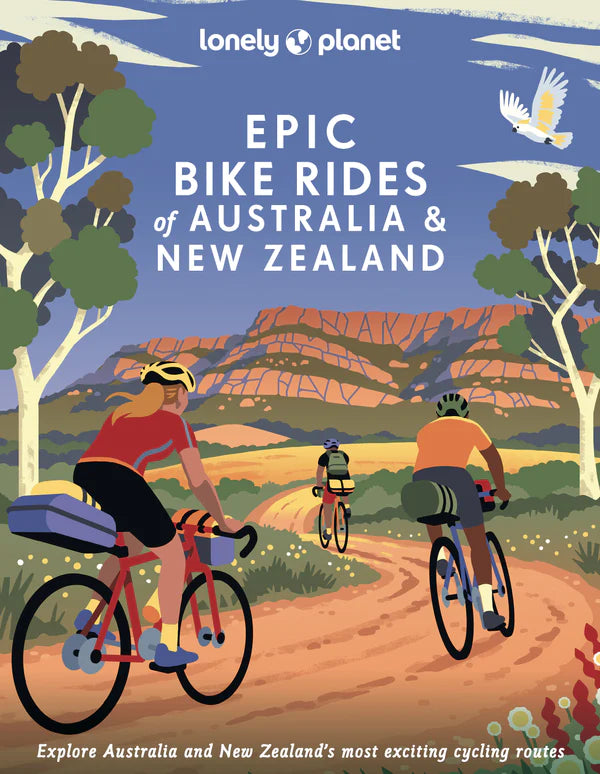
New Releases
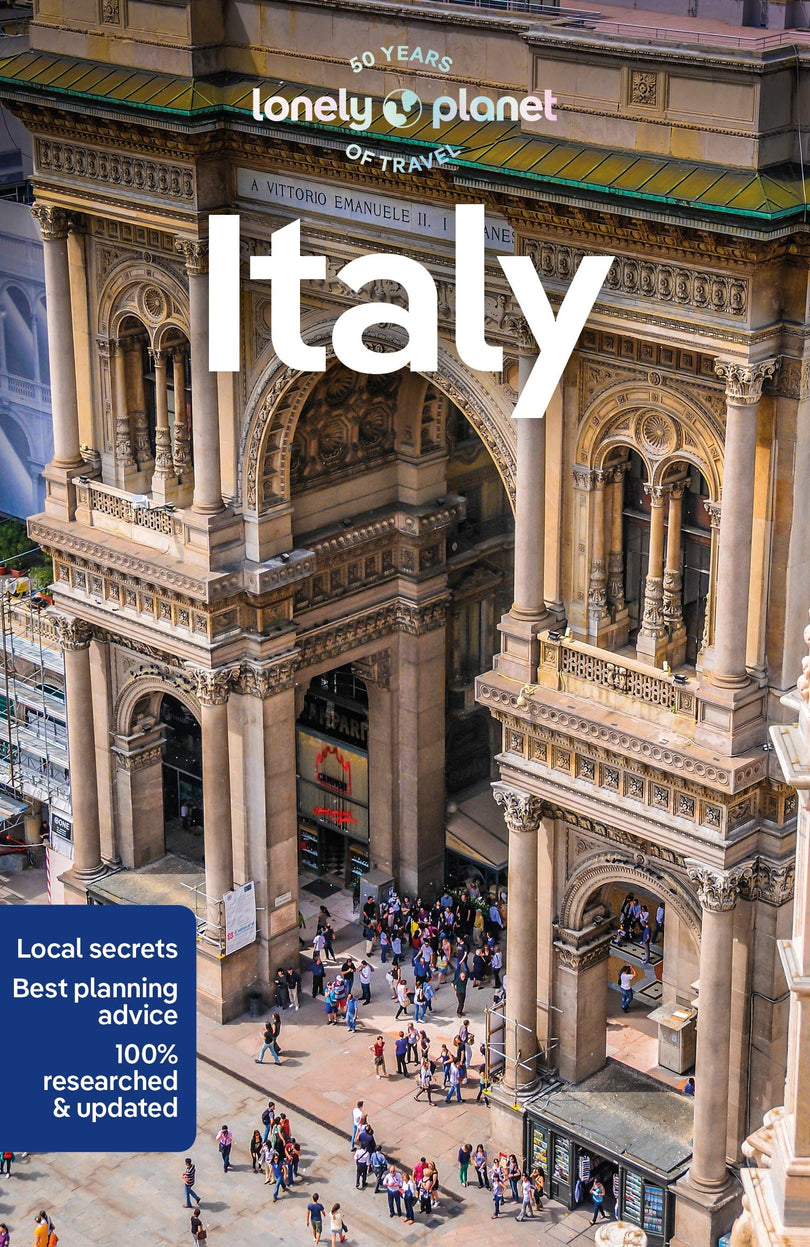
Trending Destinations
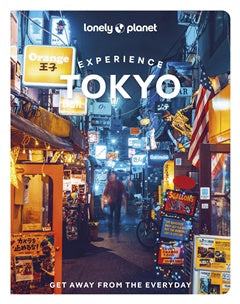
Experience Guides
- Outdoor Travels & Adventures
- Epic Guides
- Food & Drink
- Gifts & Inspiration
- Language Guides
- Lonely Planet Kids
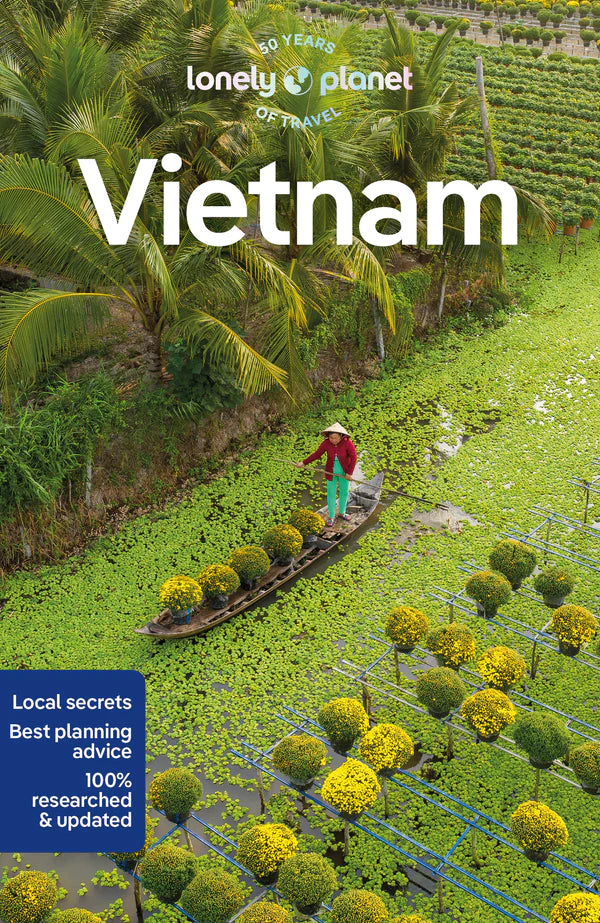
Country Guides
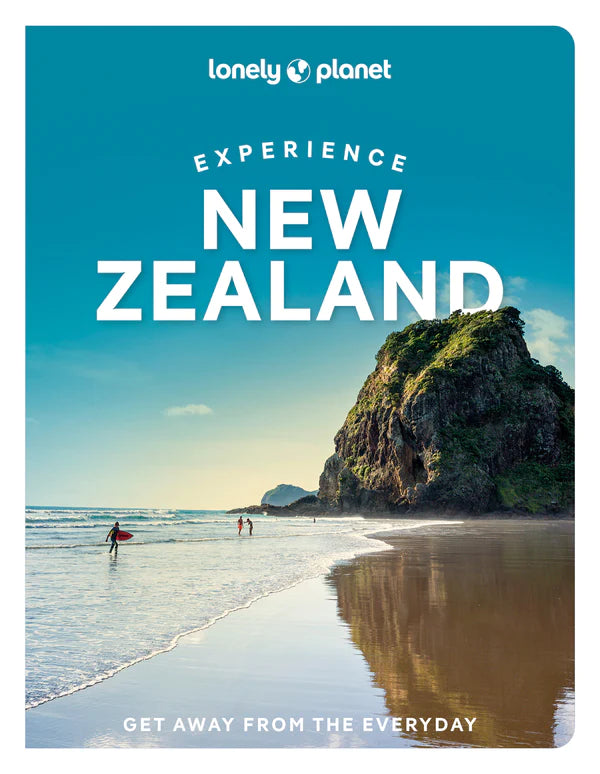
Pocket Guides
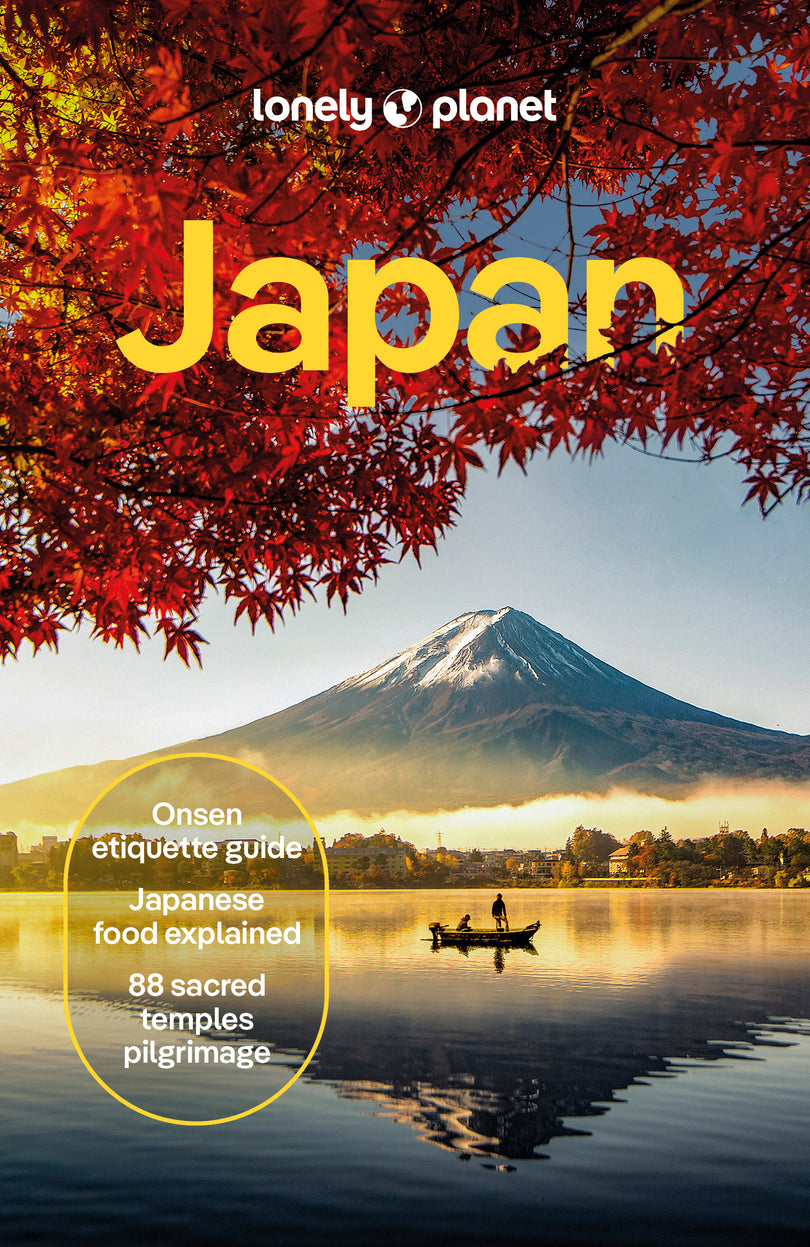
All Guides & eBooks
- Lonely Planet Insider
Your cart is empty
Get this book for free by becoming a Lonely Planet Insider:
- 3 eBook downloads every year
- Exclusive offers and discounts
- Free shipping on all orders
$2.99 USD/month (charged annually) Learn more
- Up-to-date information - all businesses were rechecked before publication to ensure they are still open after 2020’s COVID-19 outbreak
- NEW top experiences feature - a visually inspiring collection of [destination’s] best experiences and where to have them
- What's NEW feature taps into cultural trends and helps you find fresh ideas and cool new areas
- Improved planning tools for family travelers - where to go, how to save money, plus fun stuff just for kids
- Color maps and images throughout
- Highlights and itineraries help you tailor your trip to your personal needs and interests
- Insider tips to save time and money and get around like a local, avoiding crowds and trouble spots
- Essential info at your fingertips - hours of operation, websites, transit tips, prices
- Honest reviews for all budgets - eating, sleeping, sightseeing, going out, shopping, hidden gems that most guidebooks miss
- Cultural insights give you a richer, more rewarding travel experience - history, people, music, landscapes, wildlife, cuisine, politics
- Over 168 maps
Covers Argentina, Bolivia, Brazil, Chile, Colombia, Ecuador, French Guiana, Guyana, Paraguay, Peru, Suriname, Uruguay, Venezuela and more
eBook is available in ePub, MOBI and PDF.
ISBN: 9781788684460
Edition: 15th
Publication Date: April 2022
Writers: Regis St Louis, Isabel Albiston, Robert Balkovich, Celeste Brash, Jade Bremner, Cathy Brown, Gregor Clark, Alex Egerton, Michael Grosberg, Anthony Ham, Mark Johanson, Anna Kaminski, Brian Kluepfel, Tom Masters, Carolyn McCarthy, MaSovaida Morgan, Anja Mutic, Kevin Raub, Brendan Sainsbury, Adam Skolnick, Paul Smith, Andy Symington, Phillip Tang, Luke Waterson, Wendy Yanagihara
1088 pages, 64pp color, 168 maps | Dimensions: 128mm × 197mm
Next edition due: October 2025
Which guidebook is right for me?
Country, city & regional guides.
- Top experience collections
- Regional itineraries recommended by experts (from a couple of days to multi-week)
- 3D illustrations and guided tours of key sights
- Extensive coverage of history and culture
- Detailed maps throughout - includes walking maps and a pull-out planning map
EXPERIENCE guides
(country, city & regional).
- Led by local experts that reveal their favorite experiences and hidden gems
- Personal itinerary building tools
- Seasonal planning calendars
- QR codes unlock additional online content
POCKET guides
(city & regional).
- Special features cover most popular sights
- Content organized by neighborhhod
- Recommended 1, 2, 3 and 4-day itineraries
- Guided walking tours
Stay up to date with notifications from The Independent
Notifications can be managed in browser preferences.
UK Edition Change
- UK Politics
- News Videos
- Paris 2024 Olympics
- Rugby Union
- Sport Videos
- John Rentoul
- Mary Dejevsky
- Andrew Grice
- Sean O’Grady
- Photography
- Theatre & Dance
- Culture Videos
- Food & Drink
- Health & Families
- Royal Family
- Electric Vehicles
- Car Insurance deals
- Lifestyle Videos
- UK Hotel Reviews
- News & Advice
- Simon Calder
- Australia & New Zealand
- South America
- C. America & Caribbean
- Middle East
- Politics Explained
- News Analysis
- Today’s Edition
- Home & Garden
- Broadband deals
- Fashion & Beauty
- Travel & Outdoors
- Sports & Fitness
- Sustainable Living
- Climate Videos
- Solar Panels
- Behind The Headlines
- On The Ground
- Decomplicated
- You Ask The Questions
- Binge Watch
- Travel Smart
- Watch on your TV
- Crosswords & Puzzles
- Most Commented
- Newsletters
- Ask Me Anything
- Virtual Events
- Betting Sites
- Online Casinos
- Wine Offers
Thank you for registering
Please refresh the page or navigate to another page on the site to be automatically logged in Please refresh your browser to be logged in
The Independent's journalism is supported by our readers. When you purchase through links on our site, we may earn commission. Why trust us?
7 best books on South America
Planning a trip down to 'el sur' get to grips with the fascinating continent through these reads, article bookmarked.
Find your bookmarks in your Independent Premium section, under my profile

Sign up to our free weekly newsletter for insider tips and product reviews from our shopping experts
Sign up for our free indybest email, thanks for signing up to the indybest email.
When many people plan their South America holidays, they imagine the Peruvian rainforest of Che Guevara’s Motorcycle Diaries or the epic plains of Tierra del Fuego as told by Bruce Chatwin’s In Patagonia . The problem is, Guevara raced his two-seater bike across the continent in 1952, while Chatwin met the Patagonian gauchos in 1974.
Decades later, the experiences may be similar but a million other things will have changed for the intrepid traveller. In 2017, you can get free wifi in most hostels and bars, find a McDonald’s in nearly every city and your tablet or iPhone is almost never more than a day away from being fixed.
You may think this means exciting experiences are no longer available in 21st century El Sur – but as these writers below prove, hair-raising adventure is still very much on the menu.
While the traditional guidebooks are still very much needed when it comes to planning your itinerary, these are the reads you need to really get to know the continent.
1. Life and Death in the Andes: On the Trail of Bandits, Heroes, and Revolutionaries by Kim MacQuarrie: £13.87, Simon & Schuster
- 8 best books on South-east Asia
- 8 best Burma books
- 7 best political biographies
Right up to the present day, South American history has been defined by strong men controlling or manipulating the masses. MacQuarrie uses the stories of the likes of narco-kingpin Pablo Escobar and Maoist rebel Abimael Guzman to explain the modern socio-political make-up of the continent. He also provides a vivid account of how Western explorers discovered Lake Titicaca and Machu Picchu and, in the case of the latter, exploited it. This book is a hugely informative meld between the men who revealed the treasures of South America to the world and those who shaped its modern identity.
2. How to Travel Without Seeing by Andres Neuman: £12.99, Regan Arts
Written by Andres Neuman, a much celebrated Spanish-Argentine writer, this book vividly describes the great cities of South America, and was inspired by a continent-wide book tour promoting his novel Traveller of the Century . Fleeting and light, Neuman deftly brushes on topics ranging from the last days of Hugo Chavez to Latin American films, bizarre customs to forms and regulations. For people doing a city tour of El Sur and rushing through highlights of each country, this will prove a reliable, familiar and at times comic literary guide.
3. Brazil by Michael Palin: £8.99, Orion
Who better to introduce diffident Brits to Brazil than the UK’s favourite traveller? In addition to peerless writing, Michael Palin’s open-minded approach to new cultures and experiences remind the reader not of an Empire apologist, but of an eager schoolboy ready for anything. At twice the size of India Brazil can be intimidating, but this travelogue offers suggestions for travellers with different levels of acceptable adventure. Whether meeting the fierce tribes of the Amazon, rubber prospecting or walking around the modernist capital, Palin is compelling.
4. Viva South America! A Journey Through a Surging Continent by Oliver Balch: £10.99, Faber & Faber
South America loves Simon Bolivar, the legendary Venezuelan general who led the revolt against Spanish colonial rule. Balch uses General Bolivar’s war of liberation as the framework for travelling around Spanish South America, highlighting the current political landscape and its origins. He achieves this goal, and more, all the while negotiating classic issues and pleasures everyone experiences on the “gringo trail” – struggling up the altitudinous hills of La Paz, for example, and sipping your first pisco sour. It’s as anecdotal as it is politically aware.
5. Walking the Amazon by Ed Stafford: £9.99, Ebury
Walking the entire length of the Amazon, some 4,345 miles, is not just a crazy challenge – it’s almost suicidal. If you’ve heard rumours that South America is now some kind of tame holiday park to wander through anyway you like, then read this. The wild nature of the continent and its complicated border politics threaten to frustrate the author’s seemingly simple wish to follow the great river. Like Livingstone travelling up the Nile over a century ago, Stafford’s battle of endurance tells us as much about him as it does the extreme environments he endures. From death threats over the radio to confrontations with hostile, armed, indigenous warriors it is – clichéd as it may sound – a true rollercoaster read.
6. In Search of Lady Ayahuasca by Zach Zimmerman: £7.59, Z Publishing
Covering a journey of only a few days, this short book explores this writer’s hunt for enlightenment in the jungle – or, more accurately, in the shamanic drug ayahuasca. Whether you are interested in cleansing your ills with a mind-bending drink or not, his descriptions of the dangers, beauty and discomfort of the Amazon are captivating. Zimmerman illustrates the reality of travelling through the forest with a prose style that places you in the middle of the action. Perfect for lovers of Hunter S. Thompson and other gonzo journalists.
7. Short Walks from Bogotá by Tom Feiling: £9.99, Hive
Colombia is beautiful, the food is delicious and the people hospitable. The country’s only problem is that the decades of civil war, drug wars – and, of course, Pablo Escobar – have almost crippled its international reputation, especially for tourism. Feiling tackles this head on. A journalist by trade, he is at his best discussing the socio-political issues at the heart of the country. He does, however, produce a detailed picture explaining Colombia’s journey from colonial rule to the dark days of the cocaine barons, onto current efforts rebuilding the country and conserving its rich wildlife.
The Verdict: South America books
To get round South America and find the right hostels, guidebooks can keep you on the right path. But to help you understand and get the most out of a South American country you may only spend a few days in, these books are essential. The pick of the lot is Life and Death in the Andes by Kim MacQuarrie, which vividly explains the history which shaped the continent.
All prices are RRP
Subscribe to Independent Premium to bookmark this article
Want to bookmark your favourite articles and stories to read or reference later? Start your Independent Premium subscription today.
New to The Independent?
Or if you would prefer:
Want an ad-free experience?
Hi {{indy.fullName}}
- My Independent Premium
- Account details
- Help centre

The Best South American Travel Guidebooks
@whatslater
Finding the best travel guidebooks for any journey can be a nightmare, especially with so many to choose from. That’s why we’ve put together this yearly-updated list of the best guidebooks for South America, letting you know which ones we think are worth it for each region and also letting you know which ones are the most up-to-date. From Argentina and Brazil to Colombia, Chile, Ecuador and Venezuela, we’ve got you covered. (And, as of recently, we’ve also included a few additional countries in Latin America too.)
Skip to the bottom of the page to find out our recommended guidebooks for the whole of South America and for each region.
It’s fair to say that Bradt, along with Footprint, is the bible for backpacking around South America. They’re the ones who really focused on South America first and they’ve long stayed ahead of the curve. Part of this is because they get to some of the harder-to-reach destinations, meaning their writers have to rough it a little more, trying to find places to stay and things to see in destinations that are not so tourist-friendly (for example, they even have a guide book for Suriname). Bradt have also started branching out into travel writing with Up The Creek a new book written by John Harrison and telling of his exploits up the Amazon. This focus on the less-popular spots is something they’re keeping intact – they’ve recently published a Falkand Islands guide book and updated their Paraguay and Guyana books, as well as Colombia (which is still a guide book that’s less represented than it should be). The downside to this is that they aren’t updating the larger countries so much (so if you want a guide for Argentina, Brazil, Peru or the entirety of South America we’d recommend looking elsewhere). Below are our pick of the South America guide books that Bradt offer:
Chile: The Carretera Austral ( UK | USA ) 2015 Edition Colombia ( UK 2019 Edition | USA 2015 Edition ) Falkland Islands ( UK | USA ) 2018 Edition Guyana ( UK | USA ) 2018 Edition Paraguay ( UK | USA ) 2018/2019 Edition Peru Highlights ( UK | USA ) 2013 Edition Suriname ( UK | USA ) 2015 Edition Trekking in Peru: 50 Best Walks and Hikes ( UK | USA ) 2014 Edition Up The Creek: An Amazon Adventure ( UK | USA ) Uruguay ( UK | USA ) 2017 Edition
Other titles from Bradt include (all of which haven’t been updated since 2012): Amazon Highlights (Peru, Ecuador, Colombia, Brazil), Argentina, Bahia, Chile Highlights, Galápagos Wildlife, Guyana, Montevideo, Pantanal Wildlife: A Visitor’s Guide to Brazil’s Wet Grassland, Peru Highlights, Peruvian Wildlife: A Vistor’s Guide to the High Andes, The Amazon, Venezuela
DK Eyewitness
If you’re after something a little more visual then we recommend checking out DK Eyewitness’ travel guides which are full of colour maps, photos and illustrations. With an almost encyclopaedic tone (not surprising considering they’re from DK) these are good guides if you want neutral, safe choices rather than the more personal or hip recommendations from the likes of Moon or Lonely Planet, or the kind of “off the beaten track” choices you get from Bradt or Footprint.
DK Eyewitness have only made a handful of guides for South America though these are all updated regularly, see the most recent editions below. Here’s their current selection:
Argentina (Buy UK | USA ) 2018 Edition Brazil ( UK | USA ) 2018 Edition Top 10 Buenos Aires ( UK | USA ) 2015 Edition Chile & Easter Island ( UK | USA ) 2018 Edition Cuba ( UK | USA ) 2017 Edition Top 10 Cuba ( UK | USA ) 2017 Edition Peru ( UK | USA ) 2018 Edition Top 10 Rio de Janeiro ( UK | USA ) 2018 Edition
Fodor’s
Fodor have some similarities with the DK Eyewitness titles. They make full-colour visually-stimulating guide books that feel great in the hands. They also have some really good articles on history and culture which make them fine companions. However, for us, the recommendations of places to visit and stay can seem a little too obvious, but this depends on whether you really want to get under the skin of South America. If you’re just planning on having a short stay or creating an itinerary to see a few countries over a few weeks, then these books could be perfect.
Fodor’s do only offer up-to-date books on Argentina, Brazil and Peru in South America, though their Belize and Guatemala one could be useful for anyone heading that way. Their South America guide book has unfortunately not been updated since 2008 so we recommend giving that one a miss.
Here’s their current range:
Essential Argentina: with Wild Country and Chilean Patagonia (Buy UK | USA ) 2018 Edition Belize with a side trip to Guatemala ( UK | USA ) 2017 Edition Brazil ( UK | USA ) 2015 Edition Buenos Aires with side trips to Gaucho Country, Iguazu and Uruguay ( UK | USA ) 2014/2015 Edition Chile including Easter Island and Argentine Patagonia ( UK | USA ) 2015 Edition Lima Travel Guide: Insider Advice from Expats in Peru ( UK | USA ) 2017 Edition Essential Peru: With Machu Picchu and the Inca Trail ( UK | USA ) 2017 Edition Rio de Janeiro & Sao Paulo ( UK | USA ) 2018 Edition South America ( UK | USA ) 2008 Edition
Without doubt the best travel guide for South America with over 30 books in the region, many of which are recently updated, including probably the best overview of the continent in The South American Handbook , which is updated annually (making it far superior to the Lonely Planet’s South America on a Shoestring ). These guide books are packed with glossy photos but also plenty of good cultural articles and details with recommendations of places to eat, drink and stay, as well as good suggestions for things to do.
One thing we really like about Footprint is that in some of their newer paperback editions they’ve managed to make their guides smaller, more lightweight and manageable, which makes them even better travel companions. This is the case with The South American Handbook , which is ridiculously small for the amount of information that’s within it. They also went through a phase of publishing guides to smaller regions and areas called Focus guides, which were great for those wishing to travel just smaller areas, though they seem to have stopped publishing new editions of those now. Their current catalogue includes the following:
Argentina ( UK | USA ) 2017 Edition Bolivia ( UK | USA ) 2015 Edition Brazil ( UK | USA ) 2016 Edition Cartagena & Caribbean Colombia ( UK | USA ) 2016 Edition Chile ( UK | USA ) 2015 Edition Colombia ( UK | USA ) 2018 Edition Costa Rica, Nicaragua & Panama ( UK | USA ) 2017 Edition Cuzco, Machu Picchu & the Inca Heartland ( UK | USA ) 2017 Edition Ecuador & Galapagos ( UK | USA ) 2015 Edition Guyana, Guyane & Suriname ( UK | USA ) 2017 Edition Paraguay ( UK | USA ) 2015 Edition Patagonia ( UK | USA ) 2016 Edition Peru ( UK | USA ) 2015 Edition Peru, Bolivia & Ecuador ( UK | USA ) 2017 Edition Recife & Northeast Brazil Focus ( UK | USA ) 2016 Edition Rio de Janeiro & Minas Gerais ( UK | USA ) 2016 Edition Salvador & Bahia ( UK | USA ) 2016 Edition São Paulo ( UK | USA ) 2016 Edition The South American Handbook ( UK | USA ) 2017 /2018 Edition The South American Handbook 1924 Edition ( UK | USA ) – fancy knowing what it was like travelling round South America in 1924? Venezuela ( UK | USA ) 2015 Edition Western Brazil: Iguacu – Amazon – Pantanal Handbook ( UK | USA ) 2016 Edition
Other South American titles from Footprint (these were all published in 2014 or earlier): Bariloche & Argentine Lake District Focus, Bolivia Focus, Brazilian Amazon Focus, Brazilian Pantanal Focus, Buenos Aires & The Pampas Focus, Northeast Argentina & Uruguay Focus, Quito & Gálapagos Islands Focus, Uruguay Focus, Venezuela Focus
Buy The Footprint South American Handbook 2017/2018 Edition ( UK | USA )
Frommer’s
After a few lean years in regards to South America Frommer’s have recently published two EasyGuide books for Colombia and Peru which could be useful for some travellers. The Peru one, in particular, is well suited for anyone looking to head to simply Lima, Cuzco and Machu Picchu when in Peru (though we’d always recommend doing plenty of up-to-date research on Machu Picchu as it’s such a popular location and things do change). The Colombia one is perhaps a little too light, there are few photos or maps, and the information can be patchy, but it does provide an overview of the country. They also have a new Costa Rica guide, which is always welcome as there are few guides for the country. For some, their Day-to-Day guides to Buenos Aires and Rio de Janeiro, which were released a few years ago now, may be very useful.
Buenos Aires Day by Day (Buy UK | USA ) 2012 Edition EasyGuide to Colombia ( UK | USA ) 2018 Edition Costa Rica ( UK | USA ) 2018 Edition EasyGuide to Lima, Cusco and Machu Picchu ( UK | USA ) 2018 Edition Rio de Janeiro Day By Day ( UK | USA ) 2014 Edition
Other titles from Frommer’s (all published before 2013): Argentina, Brazil, Chile & Easter Island, Ecuador and the Galapagos Islands, Peru Day-by-Day, South America (last published in 2010).
Lonely Planet
For many people, there is nothing better than a Lonely Planet. For finding accommodation recommendations, places to eat, places to visit, and even the odd nugget of useful information for a place, not to mention their very useful maps, there are few better. While we felt Lonely Planet went off the boil for a few years, at least Latin America-wise, they have since published a number of new editions for the continent’s most popular destinations which has put them bang up-to-date and well worth using. Their South America On a Shoestring book is also a big favourite, and always rivals Footprint’s The South American Handbook for the best continent-wide guide. It’s a shame that Lonely Planet don’t do some of the smaller countries but for the rest it has a great selection.
Argentina (Buy UK | USA ) 2018 Edition Bolivia ( UK | USA ) 2019 Edition Brazil ( UK | USA ) 2019 Edition Buenos Aires ( UK | USA ) 2017 Edition Chile & Easter Island ( UK | USA ) 2018 Edition Colombia ( UK | USA ) 2018 Edition Costa Rica ( UK | USA ) 2017/2018 Edition Ecuador & Galapagos Islands ( UK | USA ) 2018 Edition Mexico ( UK | USA ) 2018 Edition Peru ( UK | USA ) 2019 Edition Rio de Janeiro ( UK | USA ) 2019 Edition South America on a Shoestring ( UK | USA ) 2016 Edition
Moon Travel Guides
There is no doubting that Moon Travel Guides are now one of the major players when it comes to Latin America. With guides written by expert locals and a real commitment to keeping things up-to-date and exploring different regions, they really are one of the best out there, and very much carry on the good work that Bradt was doing initially.
Moon’s guides aren’t as concise as some of the others, with a more minimal visual design, though they are very personal and go to many destinations that the others don’t. For that reason, we don’t recommend Moon for the big countries, but their Peru and Colombia are highly recommended, as are all of the books they’ve made for smaller regions, especially those that offer guides to parts of Brazil and Colombia.
Belize ( UK | USA ) 2017 Edition Belize Cayes ( UK | USA ) 2017 Edition Bogotá ( UK | USA ) 2017 Edition Buenos Aires ( UK | USA ) 2017 Edition Cartagena & Colombia’s Caribbean Coast ( UK | USA ) 2016 Edition Chile including Easter Island ( UK | USA ) 2013 Edition Colombia ( UK | USA ) 2017 Edition Costa Rica: Living Abroad ( UK | USA ) 2017 Edition Ecuador and the Galápagos Islands ( UK | USA ) 2015 Edition Galápagos Islands ( UK | USA ) 2018 Edition Machu Picchu: With Lima, Cusco & the Inca Trail ( UK | USA ) 2018 Edition Medellín ( UK | USA ) 2017 Edition Patagonia: Including the Falkland Islands ( UK | USA ) 2017 Edition Peru ( UK | USA ) 2017 Edition Spotlight Salvador and Bahia ( UK | USA) 2015 Edition
Other titles, of which there are many, published by Moon include (these were all published in 2015 or before): Argentina, Brazil, El Salvador, Lake Titicaca, Living Abroad In Brazil, Quito, Rio de Janeiro, Spotlight São Paulo 2015 Edition, Tierra del Fuego and Chilean Patagonia, Yucatán Peninsula
National Geographic
If you’re looking for a map to accompany you on your trip then we whole-heartedly recommend these by National Geographic. They’re waterproof, tear-resistant and easy-to-read. What more can we say really?
Argentina ( UK | USA ) Bolivia ( UK | USA ) Brazil ( UK | USA ) Chile ( UK | USA ) Colombia ( UK | USA ) Ecuador and Galapágos Islands ( UK | USA ) Peru ( UK | USA ) Uruguay & Paraguay ( UK )
Rough Guides
They’ve earnt their reputation as backpacker’s choice thanks to their focus on budget selections and the amount of information they pack into each book. It’s astonishing actually how big some of their editions are, with their simple design meaning that they get a lot of recommendations and info onto each page. Definitely one for the more hardened traveller. In the last couple of years they’ve really come back into their own by updating many of their books, making them a big player in South America once again after a quiet spell. Here is their current selection:
Argentina (Buy UK | USA ) 2016 Edition Belize ( UK | USA ) 2017 Edition Bolivia ( UK | USA ) 2018 Edition Brazil ( UK | USA ) 2018 Edition Chile & Easter Island ( UK | USA ) 2018 Edition Colombia ( UK | USA ) 2018 Edition Costa Rica ( UK | USA ) 2017 Edition Ecuador & The Galápagos Islands ( UK | USA ) 2016 Edition Peru ( UK | USA ) 2018 Edition Rough Guide to South America on a Budget ( UK | USA ) 2019 Edition
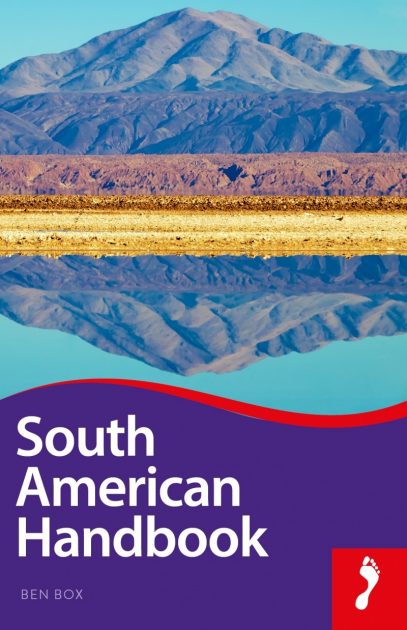
Our Verdict (The Best Travel Guide for South America)
If we’re talking about the best guide book for South America as a whole then we would opt for Footprint ‘s South American Handbook ( UK | USA ), though with Lonely Planet’s South America on a Shoestring and Rough Guide to South America on a Budget very closely behind. We’d also say something similar for the most popular countries (Argentina, Brazil, Chile and Peru) with the choice being between Footprint, Lonely Planet and Rough Guides . When it gets to the smaller countries, as well as Colombia, then Moon and Bradt are also well worth considering.
This article was last updated on 22nd November 2018
Follow Sounds and Colours: Facebook / Twitter / Instagram / Mixcloud / Soundcloud / Bandcamp Subscribe to the Sounds and Colours Newsletter for regular updates, news and competitions bringing the best of Latin American culture direct to your Inbox.
Hey, I'm Reading
Your friendly site for all fun things books, amazing south america books to read before your trip (or while you’re there).
- by Megan Johnson
- Posted on January 1, 2022 January 20, 2024
There are affiliate links in here. I get a small commission if you purchase through them at no extra cost to you
I’ve said it before, I’ll say it in every related post, I love Central and South America. I’ve been to all of Central America and Ecuador and the Galapagos Islands but I want to go back to both and see even more plus the rest of South America.
I think if I could only visit one region, it would be Latin America with Nordic countries/polar regions in second (as of right now but I haven’t been to any yet.)
And while I’m always dreaming of my future South America trip(s), today I’m just dreaming from home as I make this impressive list of South America books.
I’ve read quite a few of these, but way less than half still. As always, I’ve added a ton of these to my TBR as I worked on this post.
- If you want to listen to some of these, consider trying Audible ! You can get your first month free (one free book) plus tons of others they have for free. Get that Audible deal here.
- If you’re on more of a budget, try Everand (formerly Scribd)! You can get 60 days free there with my link! You can read books and listen to audiobooks. It is unlimited (especially the reading) but if you listen to tons of new audiobooks you may be restricted after a few. I haven’t encountered this yet, but I do use Everand myself and like it a lot. Get 60 days free here!
- Shop my collection of bookish goodies on Etsy ! These aren’t my shop items, but other shops I’ve curated into a book-themed collection. Shop my Etsy bookish goodies here!
- If you want to read more on your Kindle but don’t want to buy books, Kindle Unlimited is a good option. If you read a lot and like to read more than just new releases (especially romance), it could be worth it. Get Kindle Unlimited here !
- Get $5 off of $25 from BookOutlet! This is a great place to find new books for pretty cheap. They also have sales quite a bit, so keep an eye out for those. I tend to check here for books I want if they’re more expensive other places. They don’t have everything but they do have a lot. Shop BookOutlet here!
- Thrift Books has become my go-to when I’m looking for a book and want it cheap. It’s great if you like buying used books. With this you can get a free book after spending $30!
- Shop my book lists here! You can find every book list I have on Bookshop.org (except my monthly round-ups) and I add everything I can but they occasionally won’t have some. I do occasionally add extras though. If any lists are empty, they’ll be filled in shortly! Shop my bookshop.org book lists here .
Llama Drama
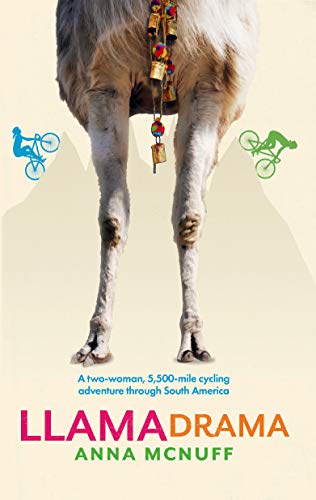
This time, Anna sets off with her friend Faye and limited Spanish on a six-month bicycle journey along the spine of the Andes Mountains starting in La Paz, Bolivia. They sleep in tents most nights and experience 50 mph crosswinds and catastrophic crashes on their 5,500-mile journey.
The Old Man Who Read Love Stories
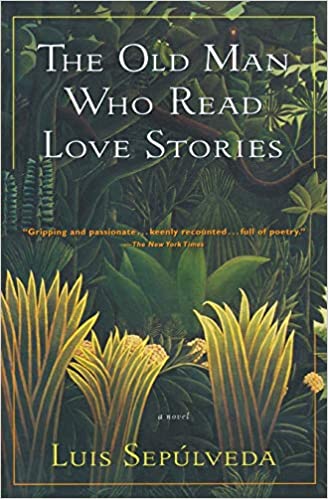
Antonio Jose Bolivar seeks refuge in amorous novels where he lives in a remote river town in the Ecuadorian jungle. A dangerous shift is happening as tourists and opportunists make their way to the area.
Sola: One Woman’s Journey Alone Across South America
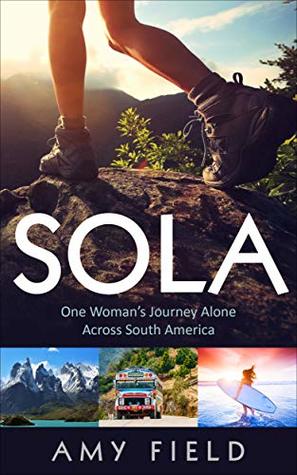
Amy has left her pleasant narrow life for one rich in experiences with panpipe playing Zen masters, nighttime jungle boat rides, Incan ruins, Patagonian glaciers, accidental volcano climbs, and even Giardia.
At the center of it all is a quirky surfer with wacky bits of wisdom and one real question: can you ever go home again?
I loved this one and would highly recommend it!
Patagonian Road: A Year Alone Through Latin America
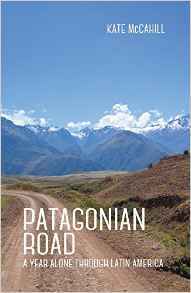
Kate spends a year in Latin America spanning ten countries, three teaching jobs, and countless buses. This is her solo journey from Guatemala to Argentina where she struggles with language, romance, culture, service, and homesickness. She follows the route outlined by Paul Theroux in 1979 in his travelogue The Old Patagonian Express.
The Queen of Water

Virginia was born in an Andean village in Ecuador and raised in an earthen-walled dwelling. Working in the fields all day is common here, so is being called a longa tonga, stupid Indian, by the mestizos, Spanish descendants.
At seven-years-old, she’s taken to be a servant for a mestizo couple with no idea what the future holds.
This is fiction based on her own upbringing.
The Old Patagonian Express
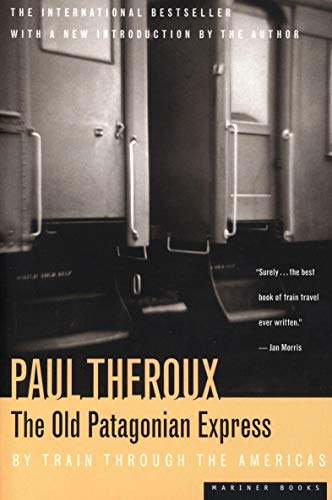
It starts with a rush-hour subway ride in Boston before he crosses the US, Mexico , Central America, and the Andes until he gets to the Old Patagonian Express.
His journey comes to an end in the desolate land near Antarctica. Along the way, we hear the stories of the people he meets.
Mother of God: An Extraordinary Journey into the Uncharted Tributaries of the Western Amazon
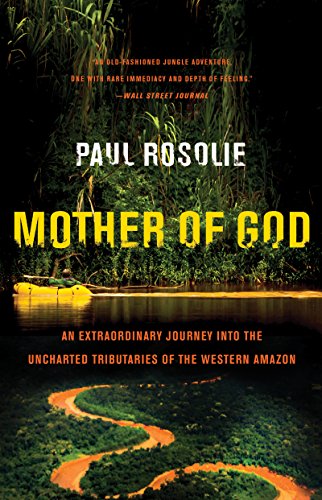
This is part adventure, part education as Paul Rosolie, a naturalist, conservationist, and explorer, takes us into the most remote sections of the Madre de Dios.
His love for the Amazon started in 2006 on his first trip there and over the coming years would return as often as possible.
He ventured into some of the most inaccessible areas of jungle alone, seeing floating forests, jaguars, poachers, and more. He raises an orphaned anteater and helps fight to protect the Madre de Dios from developers, oil giants, and gold miners.
This is one of my favorite books ever, I have two copies of it. And someday I’d love to go on one of the Tamandu Expeditions trips.
The Unconquered: In Search of the Amazon’s Last Uncontacted Tribes
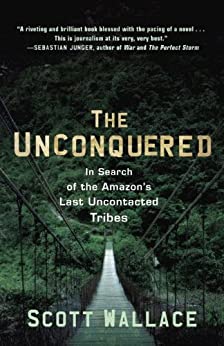
Even today there are tribes in the Amazon that have avoided contact with the outside world. This is the story of Scott Wallace’s journey into the Amazon in search of one of these tribes, the flecheiros or People of the Arrow, that are seldom seen and shower all intruders with deadly arrows.
He sets out on the trek on assignment with National Geographic, heading a team of thirty-four with Brazillian explorer Sydney Possuelo.
His mission is to protect the flecheiros and uncovers clues along the way to find out how they’ve managed to stay uncontacted for so long and why so much about them has to remain a secret if they want to survive.
This one has been on my TBR for a long time and I actually have it with me now.
The Lost City of Z

In 1925, Percy Fawcett set off into the Amazon in search of a fabled civilization, never to be seen again. Plenty of people died after this trying to find the same place he called “The Lost City of Z.”
This is one that I have with me and know I’ll read it eventually. Hopefully I’ll read it after some of my other jungle books.
The News From Paraguay
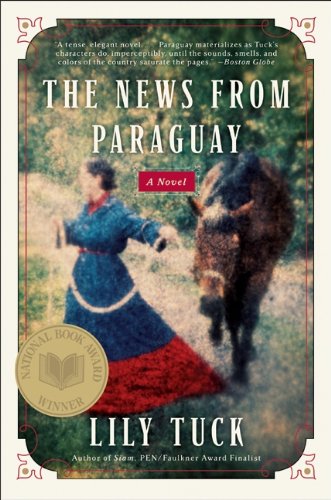
If you’re looking for historical fiction set in South America, this ones for you.
It’s 1854 in Paris when Francisco Solano begins his courtship of Ella Lynch with a poncho, a Paraguayan band, and a horse named Matilda.
Ella follows him to Asuncion, Paraguay to reign there as his mistress. Isolated in this new world, she embraces his ill-fated imperial dream that soon devastates all of Paraguay.

Camila Hassan is living a double life in Rosario, Argentina as a careful daughter under the rule of her short-tempered father and La Furia, a powerhouse on the soccer field.
Her team qualifies for the South American Tournament and this is her chance to see how far her talents can take her, but this path isn’t easy: her parents would never let her play futbol and she needs their permission to go farther.
As life becomes more complicated when the boy she once loved is back in town. she is forced to face her secrets and make her way in life with no place for the dreams of a girl like her.
Treasure of the World
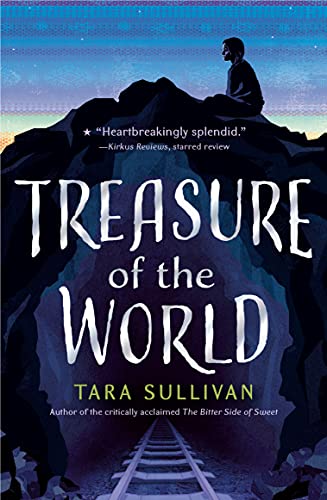
All twelve-year-old Ana wants is to escape the future set for her and her classmates in their small Bolivian mining town. Boys in her class are leaving school to be miners and the girls are destined to be their wives.
Her father forces her often-ill eleven-year-old brother to work in the mines but she gives up her dreams to volunteer in his place.
It’s a dangerous world and the men don’t want a girl in their way. She has to find the courage to not only survive but to save her family after a mining accident kills her father and leaves her brother missing.
Turn Right at Machu Picchu: Rediscovering the Lost City One Step at a Time
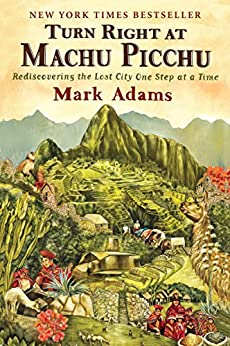
In 1911 Hiram Bingham III “discovered” Machu Picchu in the Andes Mountains.
He was credited as a villain for taking priceless artifacts and credit for the discovery. Mark Adams follows his footsteps to find the truth and ends up writing more of an adventure than he really had, after all, he never even slept in a tent.
I’ve wanted to read this one for years and just got it for my Kindle! I’ll update this once I read it.
At the Tomb of the Inflatable Pig
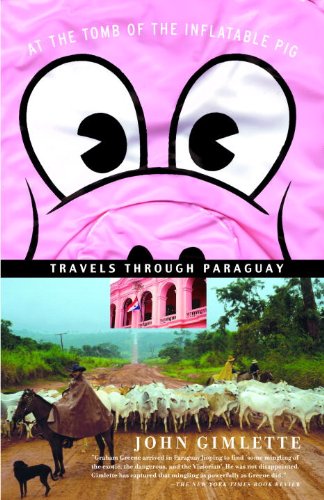
If you want a travel book set in South America, this is perfect! It’s the account of travels across Paraguay, a country rarely visited by tourists.
This is part history, part adventure, and even part travel guide to all things Paraguay.
The Puma Years

First of all, how gorgeous is this cover? Second of all, I can’t wait to read this one. This is actually a memoir about her time in the Amazon jungle.
Laura left her job in her early twenties to backpack in Bolivia where she ended up at a wildlife sanctuary on the edge of the Amazon. Here, she was assigned to a puma named Wayra who she didn’t know would become a friend for life.
Into the Jungle
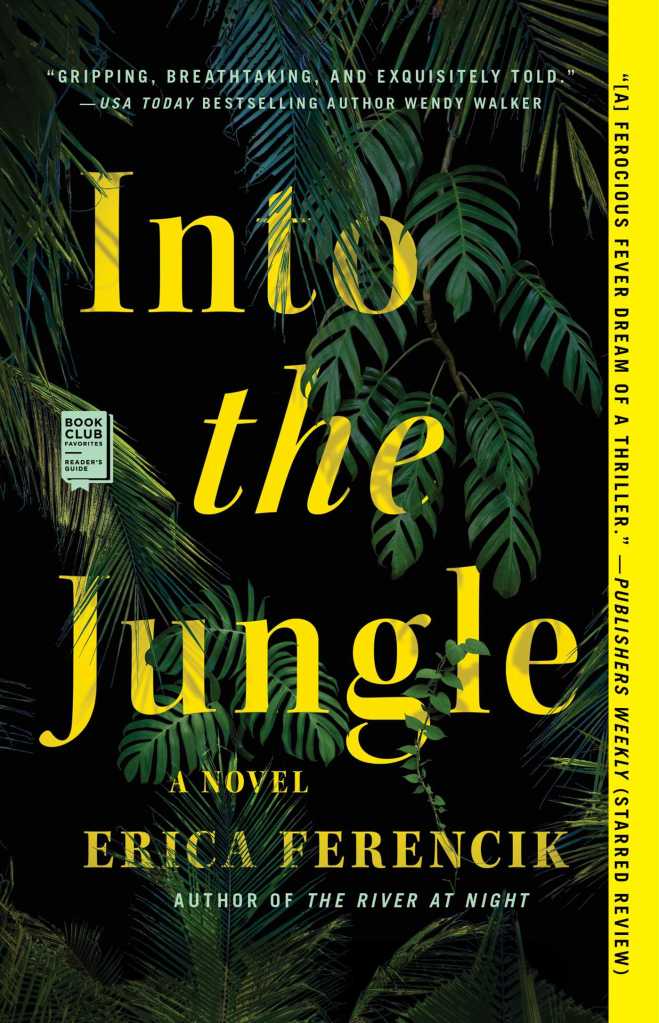
Lily found a way to escape the endless foster care system and once she steals enough money for the plane, she’s off on a teaching job in Bolivia. Once she gets there, things fall through but she decides to stay and falls for a local man trying out city life.
Soon Omar learns his nephew was killed by a jaguar and gives Lily a choice: stay in the city alone or join him in the ever more remote villages. Now she has to navigate the jungle and all its wonders and terrors.
The House of the Spirits

Esteban is a proud but volatile man whose pursuit of political power is only tempered by his love for his delicate wife, Clara, a woman with a mystical connection to the spirit world.
Their daughter Blanca’s forbidden love affair in defiance of her father gives Esteban an unexpected gift, Alba, his adored granddaughter who will lead her famil and country into a revolutionary future.
Falling off the Map

While this isn’t entirely set in South America, he does visit Argentina and it still sounds interesting.
Pico Iyer travels the world visiting some of the loneliest and most eccentric places from Iceland to Bhutan to Argentina and these are those stories.
Wild Coast: Travels on South America’s Untamed Edge
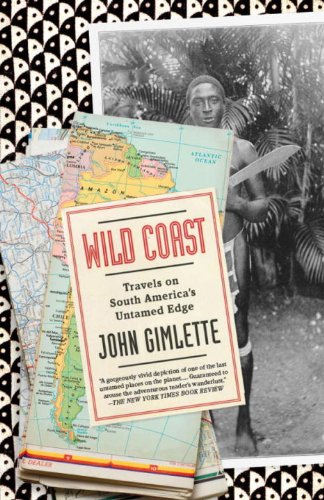
I got this at a library book sale a few years ago and had it with me but just sent it home and now wish I didn’t haha.
On a three month expedition, were taken deep into jungles and swamps to runaway slave hideouts vegetation-strangled remnants of penal colonies and forts.
He recounts the often bloody history of the area, including Jonestown while introducing the area’s inhabitants both human and animal.
The Woman from Uruguay
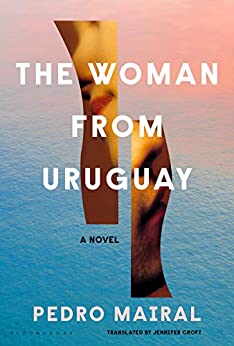
Lucas is an unemployed writer embarking on a day trip from Buenos Aires to Montevideo to pick up $15,000 in cash, an advance for his upcoming novel and a possible solution to all his problems, mostly the tension with his wife who spends her days working and nights out on the town, possibly with a lover.
He spends his days staring at the blank page, taking care of his son Maiko, and fantasizing about the woman he met at a conference in Uruguay, a free spirit with her own relationship troubles.
Two Spies in Caracas

If you want a thriller set in South America, consider this one!
In Venezuela in 1992, Hugo Chaves staged an ill-fated coup against the corrupt government while catapulting the oil-rich country to international attention. This is the career-defining mission for two spies sent to Caracas: one from the US and one from Cuba.
Ivan’s job is to support Chavez and the revolution while Cristina will do everything she can to cut his power short. Caught in the middle of a political time bomb, they wind themselves in a game of espionage, seduction, and murder playing out with the backdrop of a nation in freefall.
Fruit of the Drunken Tree
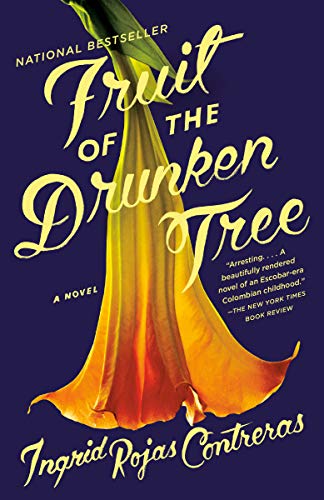
Chula and her older sister can live their lives carefree thanks to their gated community in Bogota. However, just outside of their community, the threat of kidnappings, car bombs, and murder remains under the rule of Pablo Escobar who eludes authorities and capture.
Their mother hires Petrona as a live-in maid from the guerilla-occupied slum and Chula makes it her mission to understand Petrona’s mysterious ways.
As both of their families struggle to maintain stability, they find themselves in a web of secrecy forcing them to choose between sacrifice and betrayal.
The Air You Breathe
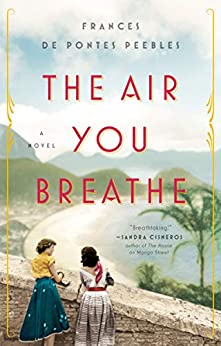
Dores is nine years old, orphaned, and working in the kitchen at a sugar plantation n 1930s Brazil. When Graca walks in, everything changes. They quickly bond over shared mischief and a love for music.
One has a voice like a songbird and the other composes melodies and lyrics to match. Music becomes their shared passion and the only way out of their respective lives but only one of them is destined to be a star.
This is another good choice for historical fiction set in South America.

This is actually a non-fiction book about South America and the Amazon jungle.
In 1927, Henry Ford bought a piece of land twice the size of Delaware in the Brazilian Amazon to grow rubber but soon it evolves to bring golf courses, ice cream shops, bandstands, indoor plumbing, and Model Ts to the jungle.
The settlement was called Fordlandia and became the site of an epic clash with Ford on one side and the Amazon on the other. Fordlandias eventual demise foreshadowed practices till laying waste to the rainforest today.
Dancing With the Devil in the City of God: Rio de Janeiro and the Olympic Dream

This is another great non-fiction book about South America and the Olympics in Rio.
Juliana has moved a lot in life but Rio is always home. After twenty-one years away, she returned home to find her city undergoing a major change.
In order to prepare for the world stage of the 2016 Olympics, Rio had to vanquish the problems Juliana recalls from her childhood to show off all the best Brazil has to offer with the whole world watching.
Shade of the Paraiso: Two Years in Paraguay, South America
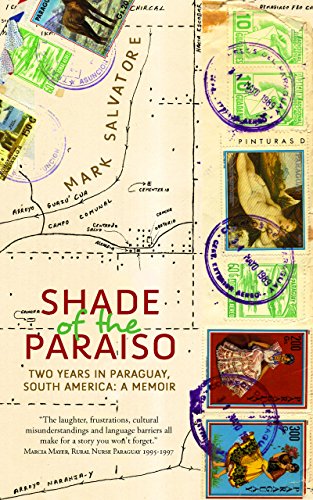
Here’s another Peace Corps memoir for you, if that’s your thing. Mark spent two years in Paraguay serving in the Peace Corps in a remote community.
He shares about his failures, his wedding in a leper colony, his first day beginning with a coup, and life where you read by candlelight, draw water from a well, use a rickety outhouse, and hike for hours to reach a telephone and bus stop.
An Indian among Los Indígenas: A Native Travel Memoir

I would also really love to read this one, another Peace Corps memoir but in Bolivia this time.
Ursula, a member of the Karuk Tribe, started her Peace Corps service at twenty-five in Bolivia with excitement and trepidation “knowing I followed in the footsteps of Western colonizers and missionaries who had also claimed they were there to help.”
Over the next two years, a series of dramatic episodes brought the tension to a boiling point, and began asking herself what it means to have experienced the effects of colonialism while risking becoming a colonizing force in turn?
Travels with Rachel
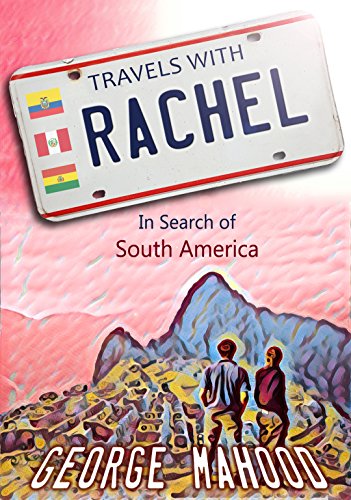
This is a fun book about traveling through South America. We hear about George and Rachels’s adventures through swamps in Bolivia, hunting for anacondas, climbing volcanos, taking death-defying bus rides, and trying to get to Machu Picchu all with small backpacks, limited Spanish, and lots of enthusiasm.
Two Wheels Through Terror: Diary of a South America Motorcycle Odyssey
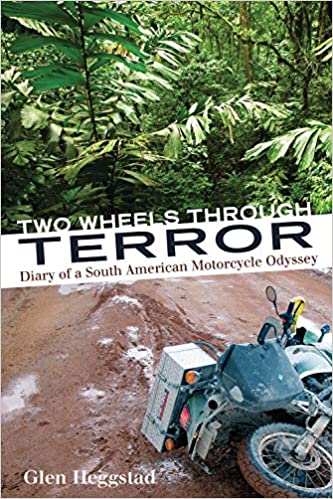
Glen is an adventure motorcyclist seeking out the most rugged places on the planet to ride. No amount of experience in martial arts or as a Hells Angel will prepare him for what he became while riding to the tip of South America: a prisoner.
This is the story of his trip through Central and South America including his capture by Colombia’s rebel ELN army.
I would really like to read this one, it sounds pretty interesting. I just got this one.
Gringos and Flamingos: A Fat Bastard’s Guide to Trekking in Northern South America
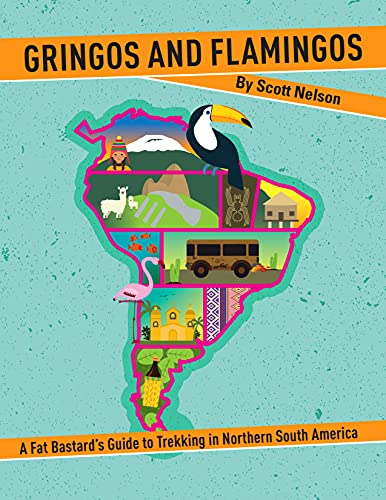
This is a pre-cellphone tale of travels of a Kiwi couple through Ecuador, Peru, and Bolivia as they ride through the Andes in search of the “Authentic Backpacking Experience™.”
If you want a short book about traveling in South America, this one is for you. I just got this one, too.
The Mapmaker’s Wife

In the early 18th century, a group of brave French scientists set off on a decade-long expedition to South America in a race to measure the shape of the Earth. Their mission revealed the mysteries of a little-known continent to a world hungry for discovery.
Their mission was barely completed after battling jaguars, insects, vampire bats and more. One scientist was murdered, another died from fever, and a third, Jean Godin, almost died of heartbreak.
At the end of the expedition his Peruvian wife Isabel Gramesón was stranded at the opposite end of the Amazon, a victim of a tangled web of international politics. Her journey to reunite after 20 years separated had all of Europe spellbound.
Off the Map: A Journey Through the Amazonian Wild
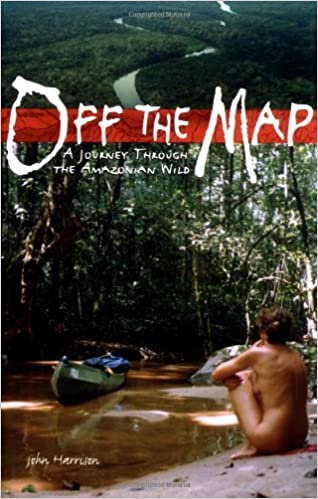
The is the adventure of John Harrison and with wife Heather as they explore the unexplored region of the Amazon in the Guiana Highlands bordering Brazil.
With just a canoe and a shotgun, they follow the most remote tributary of the Amazon River with no means of contacting the outside world.
This one sounds really interesting, too and just added it to my wishlist ! It’s perfect if you want a South America adventure book.
Life and Death in the Andes: On the Trail of Bandits, Heroes, and Revolutionaries
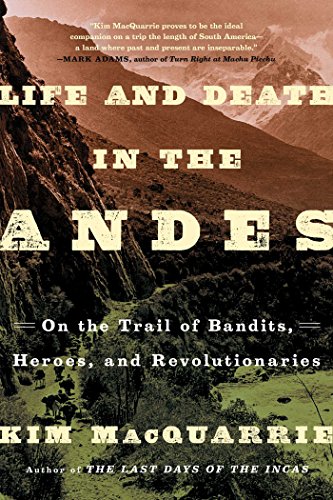
Kim takes us on a historical journey through the Andes Mountains, the world’s longest mountain range, while bringing a fresh view to characters of the area like Charles Darwin, Che Guevara, Pablo Escobar, and more.
We learn about life in the islands of Lake Titicaca and meet a Patagonian woman who is the last living speaker of her language and so many others that were involved with those who influenced the continent so much.
I didn’t think this one sounded like it was for me when I first saw it, but this actually sounds really interesting!
Eight Men and a Duck: An Improbable Voyage by Reed Boat to Easter Island
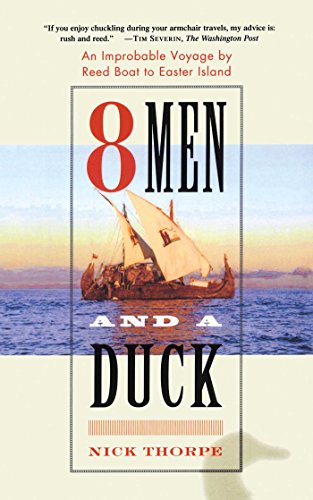
Nick heard fellow bus passengers discussing the improbable plan to sail the 2,500 miles from Northern Chile to Easter Island in a boat made of reeds. They wanted to revive the pre-Incan boat building method while having an incredible adventure.
Nick talked his way on board to find himself plagued with uncertainty, especially when the crew was made of a tree surgeon, a jewelry salesman, and two ducks. Where’s the navigator? Does anyone here know how to sail? Where is the life raft?
This is perfect for fans of adventure and sailing books.
Ipanema Turtles: A South American Adventure by Bike
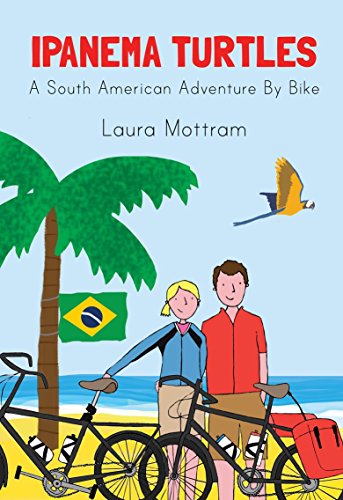
Starting at Ipanema Beach in Rio de Janeiro, Laura and Patrick set off on a 21,000-kilometer bike ride across South America.
They experienced a side of the continent most people don’t see as they cross the Andes, the Amazon, and the Atacama. They traveled through Brazil, Paraguay, Uruguay, Argentina, Chile, Bolivia, Peru, Ecuador, Colombia, Venezuela, Guyana, Suriname, and French Guiana making their way back to the beach where it all began.
This one sounds really fun, too, and I may or may not have also gotten this (I did.)
One River: Explorations and Discoveries in the Amazon Rainforest
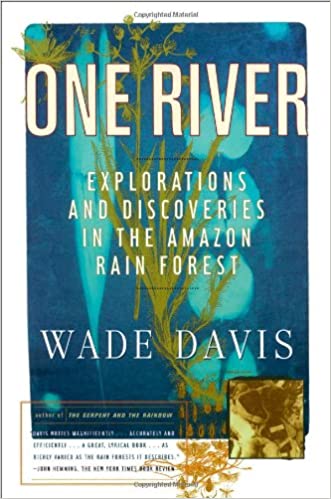
In 1941, Richard Evan Schultes took leave from Harvard and disappeared into the Amazon for twelve years, mapping uncharted rivers and living with dozens of Indian tribes.
In the 1970s, he sent two students to follow in his footsteps and unveil the botanical secrets of coca, the source of cocaine, a sacred plant known as the Divine Leaf of Immortality to the Inca. This is an account of adventure, discovery, betrayal, and destruction bringing together two generations of explorers.
This is another one I would eventually like to read.
Walking the Amazon: 860 Days. The Impossible Task. The Incredible Journey
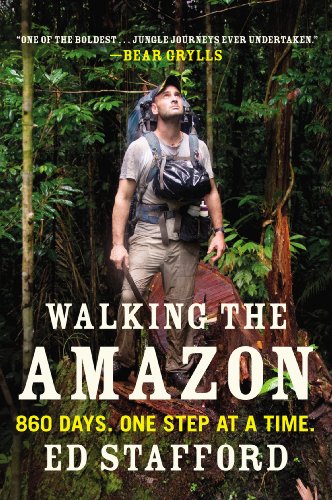
In April 2008, Ed Stafford decided he wanted to be the first man to ever walk the entire length of the Amazon River. He started on the Peruvian coast and crossed the Andes to find the official source of the Amazon.
He passes through Colombia and Brazil, facing logistical issues, wildlife, indigenous people, and more all while facing his own personal struggles, fears, and doubts.
His journey lasts 860 days and over 4,000 miles as he witnesses deforestation, pressure on tribes due to loss of habitats, and nature in its raw form. I love books about walking long distances and this was a great one for that.
Amazon Woman: Facing Fears, Chasing Dreams, and a Quest to Kayak the World’s Largest River from Source to Sea

On her 35th birthday, Darcy set off on a 148-day journey kayaking the entire length of the Amazon River with her boyfriend of twelve years and a mutual kayaking friend/colleague. The emotional waters encountered on the trip were often more difficult to navigate than the class five rapids on the river itself.
Along the way they encounter 25 days of whitewater rapids, illegal loggers, narco-traffickers, Shining Path rebels, ruthless poachers, and surprisingly friendly locals before reaching the triumphant end becoming the first to achieve this accomplishment.
Cloud Road: A Journey through the Inca Heartland
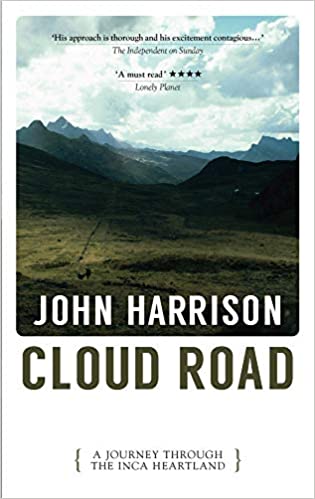
This is the account of the five months John spent in the Andes Mountains while following the Camino Real, the great road of the Incas.
Finding and studying remote villages is central to the quest but he also faces dog attacks, sweltering canyons, floods, and stubborn donkeys on his way from the Equator to Machu Picchu.
Have you read any of these South America books? Which ones? Any other books set in South America I should check out?
Share this:
- Click to share on Twitter (Opens in new window)
- Click to share on Facebook (Opens in new window)
- Click to share on Pinterest (Opens in new window)
- Click to print (Opens in new window)
- Click to email a link to a friend (Opens in new window)
Author: Megan Johnson
I'm Megan, a cheesehead at heart currently residing in the Sunshine State. You can probably find me reading, watching Forensic Files, or both. View all posts by Megan Johnson
Leave a comment Cancel reply
This site uses Akismet to reduce spam. Learn how your comment data is processed .

- Already have a WordPress.com account? Log in now.
- Subscribe Subscribed
- Copy shortlink
- Report this content
- View post in Reader
- Manage subscriptions
- Collapse this bar
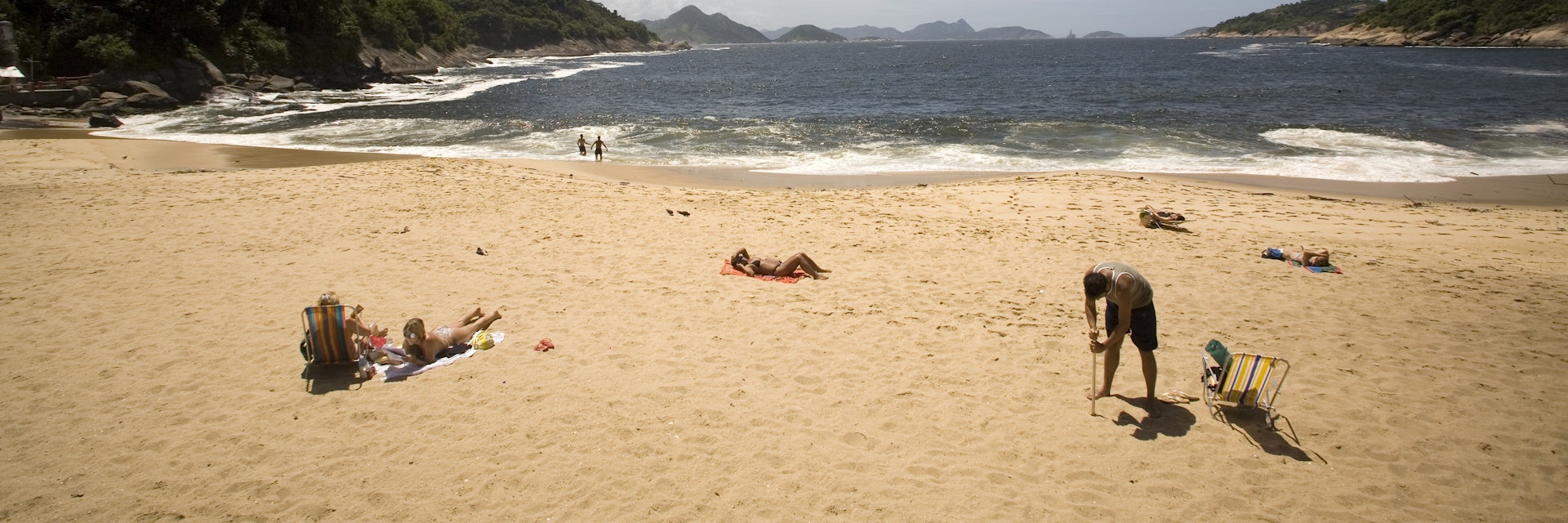
John Maier Jr
South America
Andean peaks, Amazonian rainforest, Patagonian glaciers, Incan ruins, white-sand beaches and vertiginous nightlife: the wonders of South America set the stage for incredible adventures.
Attractions
Must-see attractions.
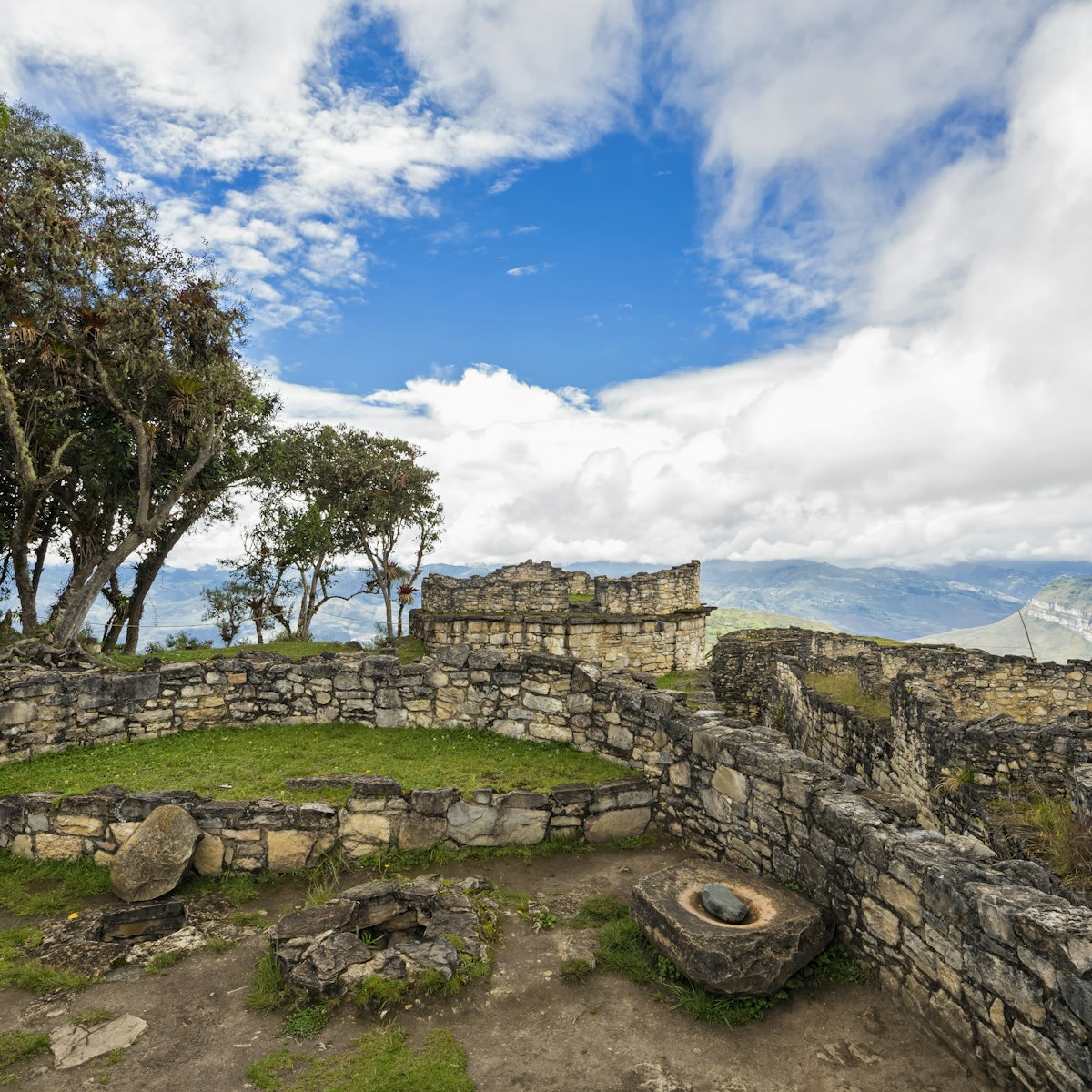
Travelers have their heads literally in the clouds when visiting the walled jungle fortress Kuélap in the northern highlands of Peru – the gateway to the…
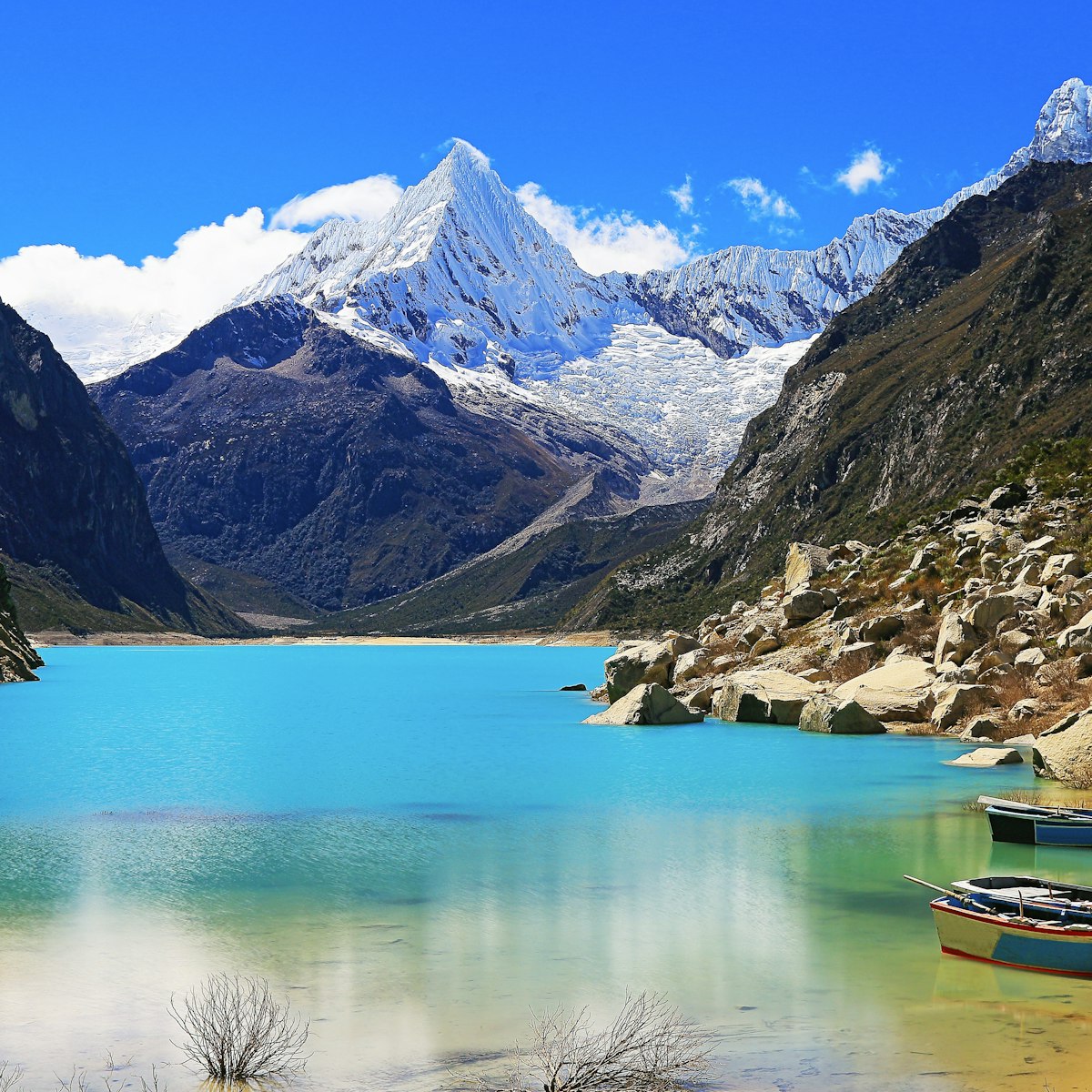
Laguna Parón
Cordillera Blanca
The largest lake in the Cordillera Blanca — a snowcapped range of the Andes in west central Peru — and a gorgeous natural reservoir, Laguna Paron is a…
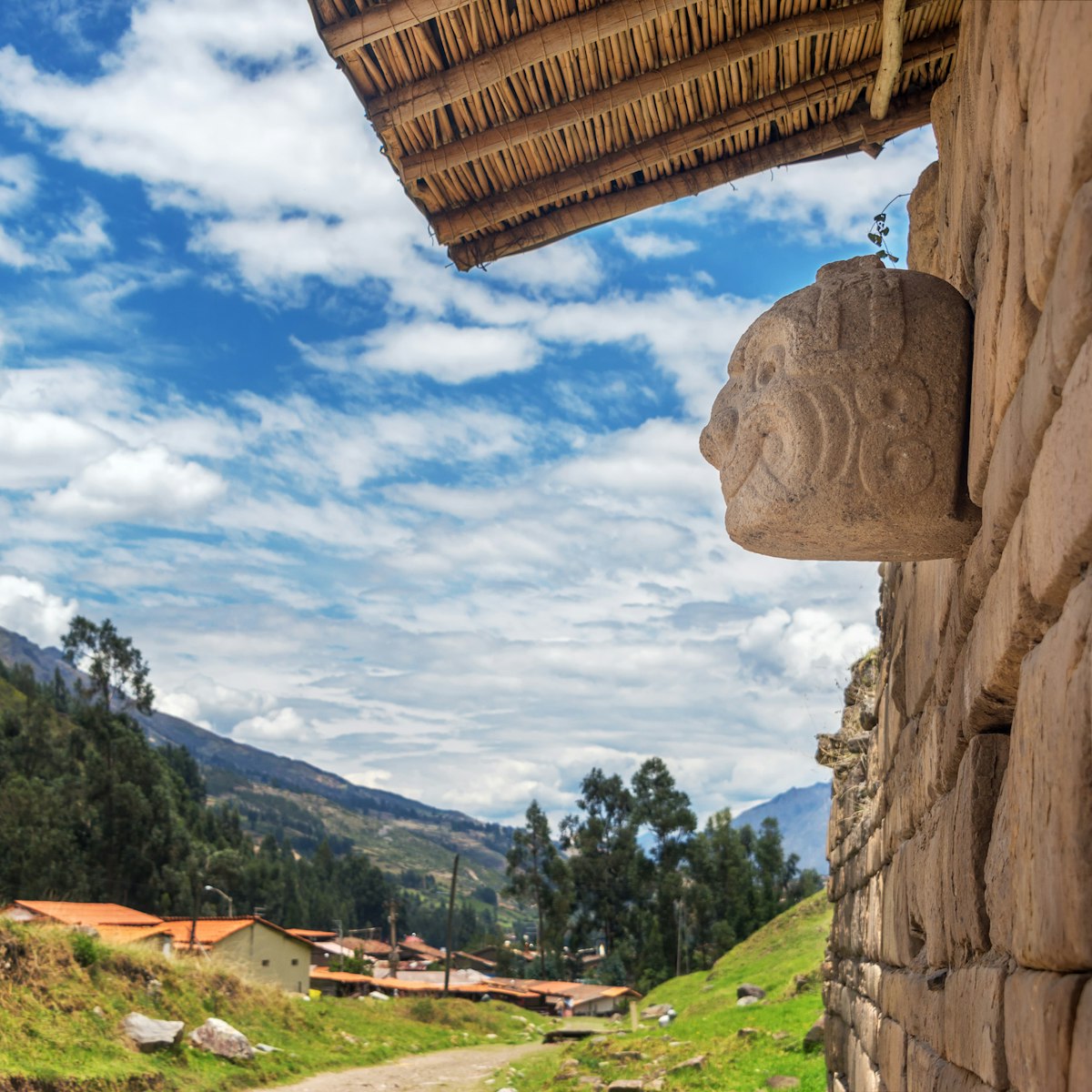
Chavín de Huántar
Huaraz & the Cordilleras
In most people's minds, Chavín is less a town and more a set of ruins – not any old ruins, but the erstwhile ceremonial center of one of Peru's most…
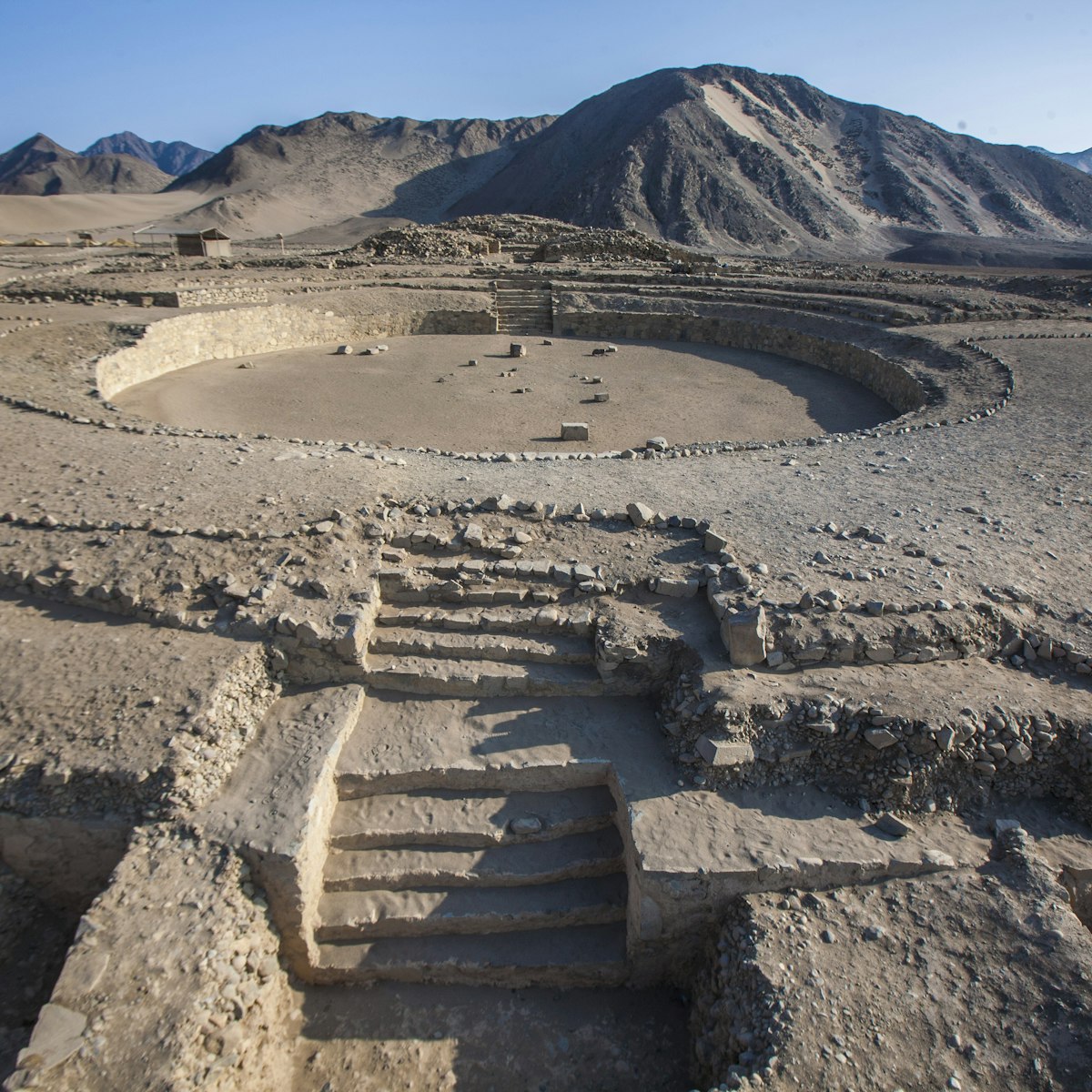
North Coast
Before metal or ceramic was invented and well before the Maya and Inca cultures ruled, there was Caral, the oldest civilization in the Americas. Having…

Isla Amantaní
Lake Titicaca
Of the small remote islands dotted around Lake Titicaca, Isla Amantaní is the least visited. Its population is just 4000, is a few kilometers north of the…
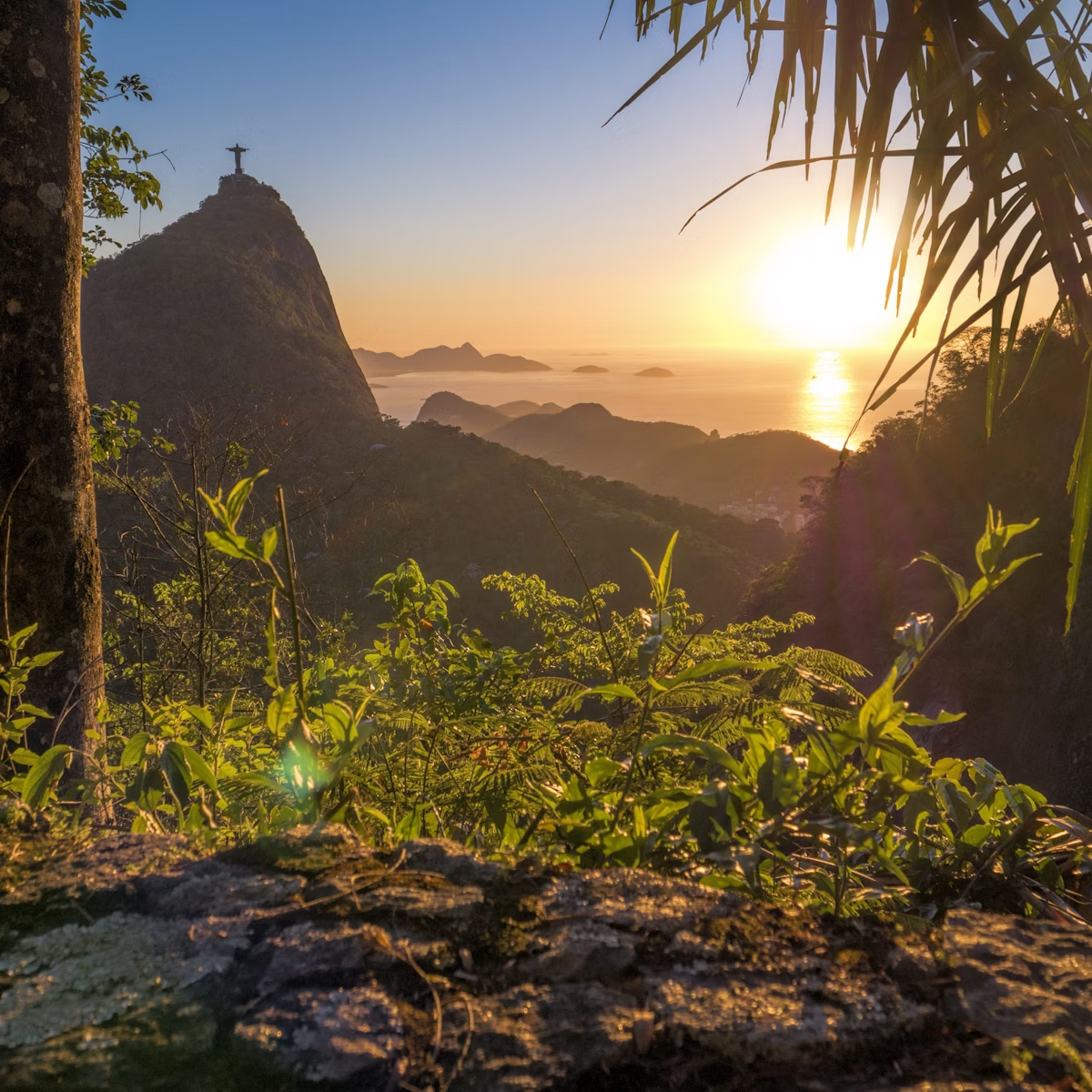
Parque Nacional da Tijuca
Rio de Janeiro
The Tijuca is all that's left of the Atlantic rainforest that once surrounded Rio de Janeiro. This 39-sq-km tropical-jungle preserve is an exuberant green…
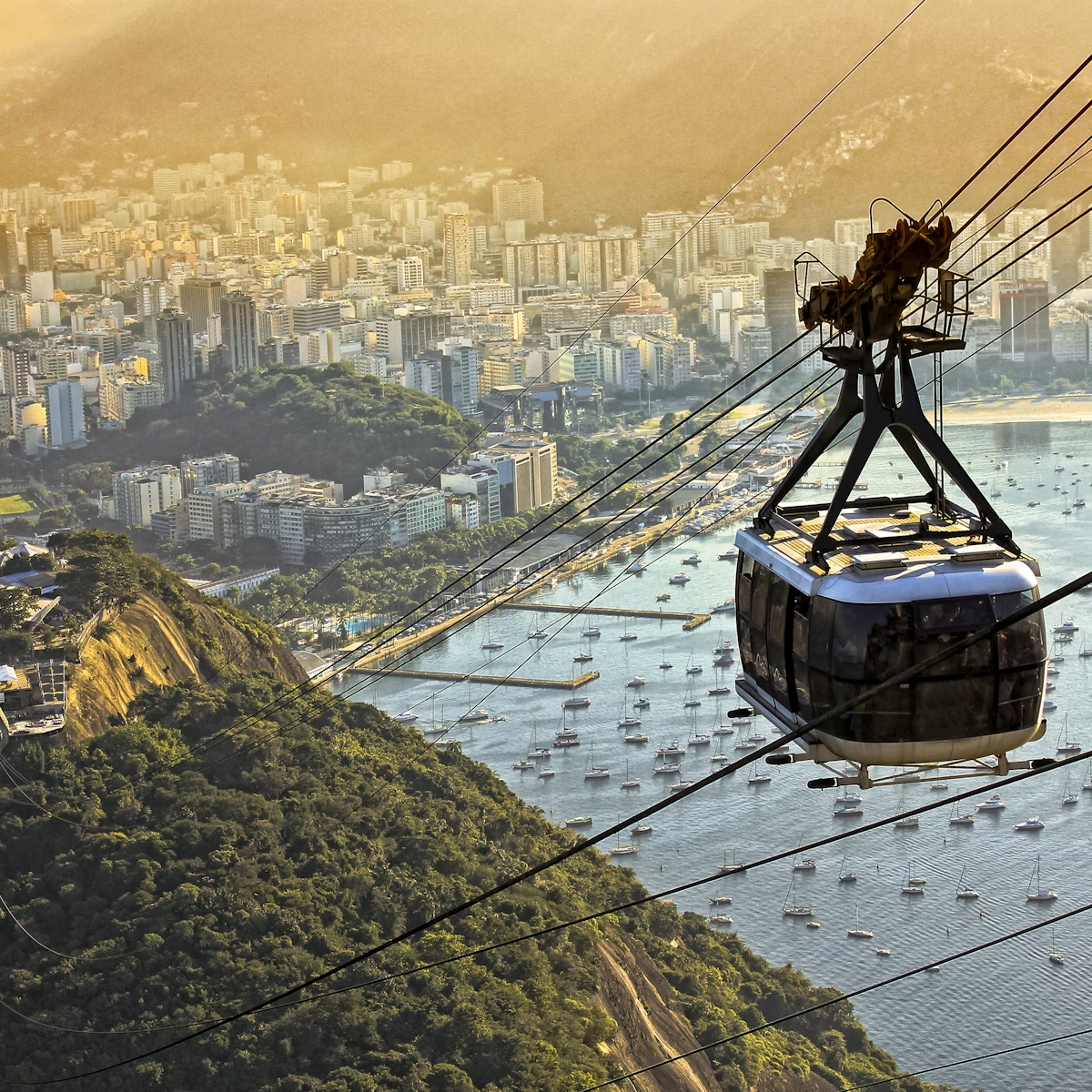
Pão de Açúcar
Seen from the peak of Pão de Açúcar, Rio is undoubtedly a Cidade Maravilhosa (Marvelous City). There are many good times to make the ascent, but sunset on…
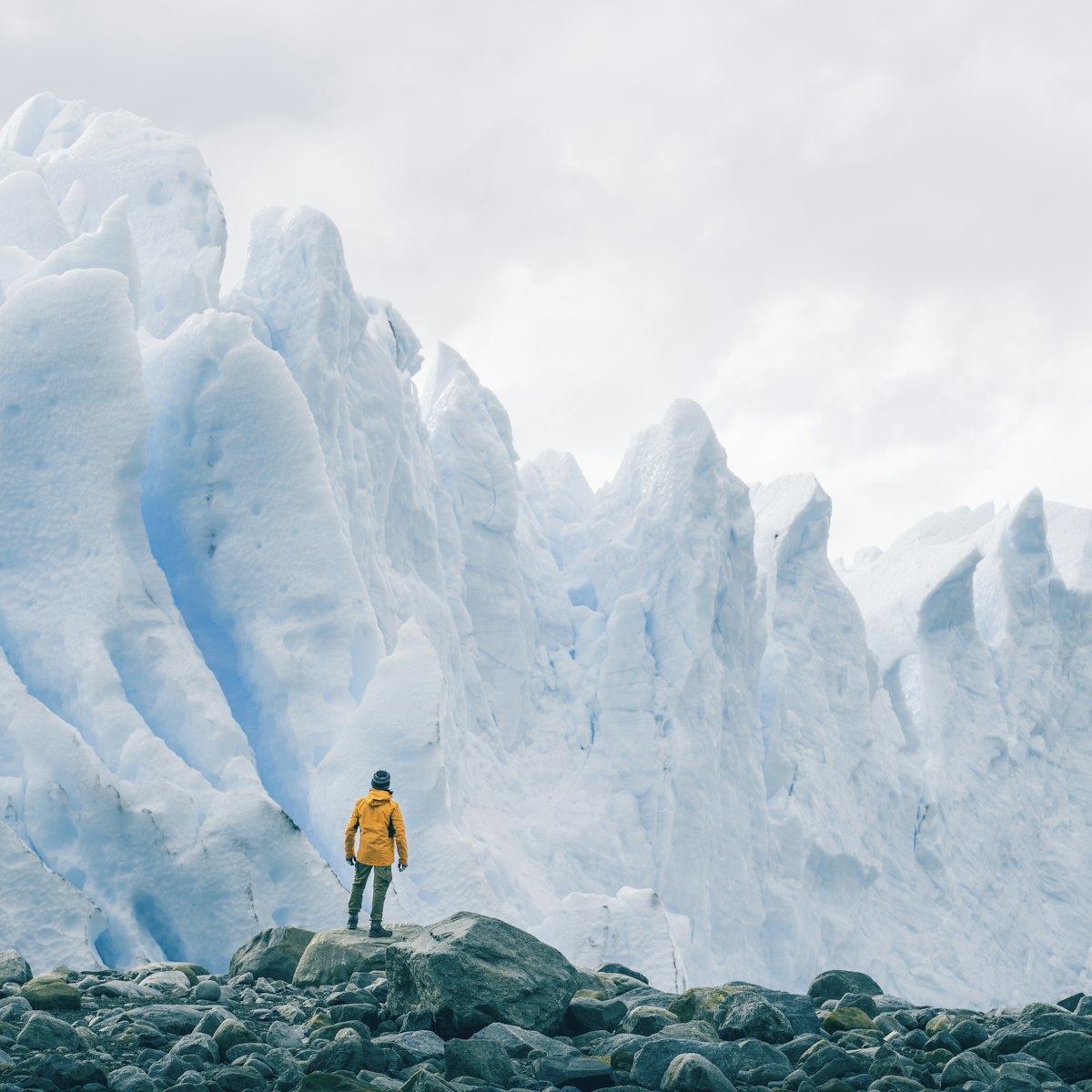
Glaciar Perito Moreno
Inland Patagonia
Among the Earth's most dynamic and accessible ice fields, Glaciar Perito Moreno is the stunning centerpiece of the southern sector of Parque Nacional Los…
Latest stories from South America
Filter by interest:
- All Interests
- Adventure Travel
- Art & Culture
- Beaches, Coasts & Islands
- Food & Drink

Tips & Advice
Apr 16, 2024 • 6 min read
For many, packing is the most stressful part of trip prep. Here are our tips to make sure you bring what you need, nothing more.
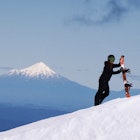
Nov 13, 2023 • 6 min read
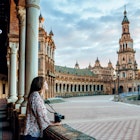
Sep 29, 2023 • 9 min read

Aug 11, 2023 • 8 min read
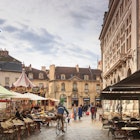
Jul 3, 2023 • 8 min read
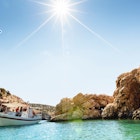
Jun 2, 2023 • 8 min read

May 6, 2023 • 9 min read

Feb 15, 2023 • 6 min read
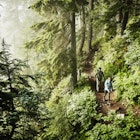
Jul 29, 2022 • 15 min read

May 23, 2022 • 6 min read
in partnership with getyourguide
Book popular activities in South America
Purchase our award-winning guidebooks.
Get to the heart of South America with one of our in-depth, award-winning guidebooks, covering maps, itineraries, and expert guidance.
South America and beyond
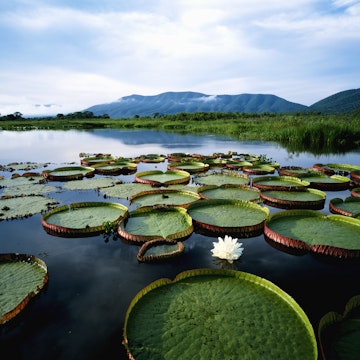

20 of the Best Books About South America to Add to Your Reading List
By Author Steph Dyson
Posted on Last updated: 22nd November 2023
There’s no better way for preparing for a trip abroad (or merely satisfying your worldly curiosity) than with a good list of reading material.
Over the past six years, I’ve had my nose in a healthy selection of books set in South America, both fiction and non-fiction to help me get to grips with life, culture and, more often than not, wild history in this part of the world.
I’ve read some crackers and used my favourites to put together this article: here are some of the best books about South America that you definitely need to add to your reading list.
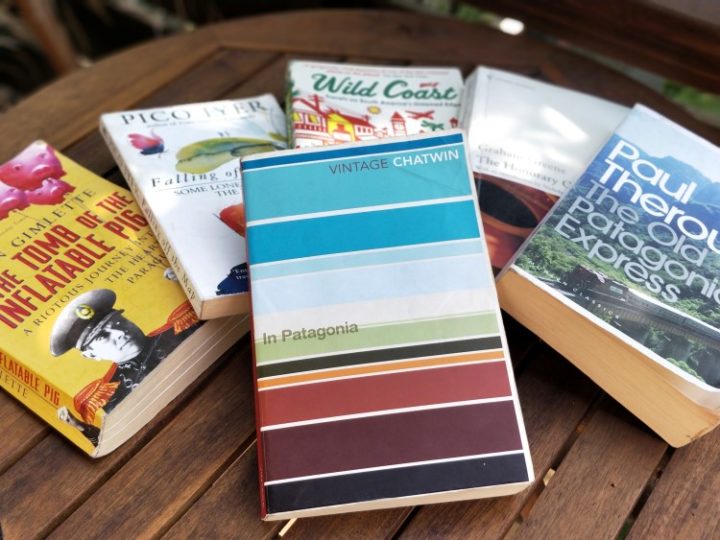
General books about South America
Open veins of latin america – eduardo galeano.
A challenging read in that it’s a crash course in Latin American economic history and policies over the past half millennia, Open Veins of Latin America remains a seminal read for anyone interested in learning about the cultural climate of the continent – and how we got here.
Galeano explores in depth why a land so rich in mineral wealth remains a hotbed of raging poverty and ostentatious displays of wealth.

He explores the colonial and modern influences of the Spanish, British and US forces and how this continent, like no other to quite the same extent, has been brutally exploited for its riches.
Available on Kindle , in paperback and in Spanish
The Rough Guide to South America

This exact guidebook (well, previous editions) has been my Bible for most of my jaunts across South America. While guidebooks do go out of date very quickly, I’m still a huge fan – you just can’t beat having this amount of essential information in one easy-to-read place.
So, if – like me – you like to have a physical guidebook for your travels that you can highlight, scribble in and dogear.
I fall short at ripping out the pages of places I’ve visited; if you do this, you are a heathen), then I believe it remains the best and most reliable guidebook that you can get your hands on.
Available on Kindle and in paperback
The Motorcycle Diaries: A Journey through South America – Ernesto Guevara
Few South American historical figures have found their way into the international imagination more than Ernesto “Che” Guevara, a young Argentine medical student turned political revolutionary who became a major figure in the Cuban Revolution.
Much of his ideology stems from 23-year-old Che’s 1952 motorbike journey across South America, reported in this lyrical and highly engaging travelogue.

It charts his travels through and encounters with the dazzling landscapes of the continent, as well as with the poverty and repression that would inform his political leanings in later life.
Available on Kindle and in paperback
The Voyage of the Beagle – Charles Darwin

On December 27, 1831, the HMS Beagle set sail from Plymouth Sound in England on what would become a five-year voyage that circumnavigated the globe. Aboard was an as yet undistinguished young graduate, Charles Darwin, whose seminal narrative, The Voyage of the Beagle , covers the journey.
It focuses on South America as he vividly recreates his interactions with the people of South America, from Brazil, to Argentina, Chile, Peru and Ecuador.
His time spent studying the flora and fauna in the Galapagos Islands informed what would become his ground-breaking book, On the Origin of Species , fundamentally changing our understanding of evolutionary biology.
Books set in South America: Bolivia
Marching powder – thomas mcfadden and rusty young.
The are few prisons in South America – perhaps the world – that inspire as much interest as San Pedro in La Paz . Taking up one entire block, it’s Bolivia’s largest prison and one where the inmates aren’t assigned a cell.
Instead, inside it operates like its own society, with prisoners running shops and restaurants and paying rent to be able to afford a place to live, alongside their wives and children who pass freely through the prison gates each morning to work or go to school.

Marching Powder describes the experiences of the British inmate Thomas McFadden, who found himself living in San Pedro after attempting to smuggle cocaine out of the country.
Books about South America: Chile
The house of the spirits – isabel allende.

From one of Latin America’s most acclaimed novelists, this novel set in Chile weaves a tale of three generations of women in the Trueba family. Drawing heavily on the authors’ own kaleidoscope of enthralling – if sometimes truly barmy – relatives, Allende’s three female leads, Clara, Blanca and Alba take us by the hand into Chilean society, warts and all.
Culminating in the dictatorship of 1973, the beautifully written The House of the Spirits manages to mix non-fiction with the author’s own brand of magical realism, making her characters and their fates seem both ir-real and utterly believable.
The Statues That Walked: Unravelling the Mystery of Easter Island – Terry Hunt and Carl Lipo
Two archaeologists involved in digs in the early 2000s on Rapa Nui, aka Easter Island, attempt to pick apart the myriad stories that have been told about the island’s doomed fate in the very readable The Statues that Walked.
Were the islanders to blame for the deforestation and soil erosion believed to have caused the collapse of civilisation? Why were the moai statues pushed off of their sacred platforms?

And, the question that has plagued researchers for decades: How exactly did the islanders move the moai ? All are answered in this compelling read.
Deep Down Dark – Héctor Tobar

There’s a palpable urgency in this remarkable true story of the 33 Chilean miners who became world famous for being buried alive in a mine – and somehow lived to tell the tale.
Journalist Héctor Tobar’s retelling of the 69 days they were trapped underground in Deep Down Dark is through hours of interviews with the surviving men.
It’s a thrilling and tragic masterpiece told from the dark depths inside of the mine from the miners’ perspectives and those on the outside. Tobar skilfully weaves together a compelling narrative of a seemingly futile attempt at saving these forsaken men from a suffocating death beneath ground.
Book about South Ameica: Colombia
One hundred years of solitude – gabriel garcia marquez.

Marquez’s epic novel, One Hundred Years of Solitude , has been widely described as one of the greatest books of the 19 th century, winning both the Nobel Prize for Literature and the hearts of readers over the last five decades since it was published.
Following the fate of the Buendía family of the fictional Colombian town of Macondo, it touches on the themes of love and solitude and the age-old
difficulty of reconciling these two emotions in what is an epic tragedy depicting a century of cyclical madness, hyperbole and fantasy.
Books about South America: Patagonia
In patagonia – bruce chatwin.
Few travelogues have reached the realms of literary celebrity quite like Chatwin’s wonderful tale of his trip through a fabled land where brontosaurus are perfectly preserved in glaciers, Welsh settlers drink from delicate, patterned china in the middle of the pampas and outlaws slink away to cabins on the eastern skirts of the Andes Mountains to plot their next bank robbery.

Patagonia has certainly changed since In Patagonia was written in the 70s, but Chatwin’s evocative descriptions of his surroundings and painstakingly-reproduced conversations with the inhabitants of this wild land that he meets en route are a fascinating introduction to anyway seeking to travel at the uttermost ends of the earth.
The Old Patagonian Express – Paul Theroux

What would it be like to travel the length of the Americas, from Boston right through Central America and out into the heart of Patagonia? Only Theroux can tell you in this epic trip through this vast, unforgiving continent.
Self-involved and giving far less room to the voices of those he meets along the way than Chatwin, The Old Patagonian Express is still a true travel classic,
reflecting as it does on the very art and nature of travel and how doing it alone is both proof of one’s success and one’s utter foolishness.
Patagonia: A Cultural History – Chris Moss
British journalist and regional expert Chris Moss explores the history of this remote and mysterious part of South America in the fascinating Patagonia: A Cultural History .
Moss gives Patagonia’s oft-forgotten and now mostly extinct indigenous populations a space for their tale of attempted survival against the elements and violent colonisers, while unpacking the myths, legends and facts of Patagonia.

Everything from the Kingdom of Araucanía and Patagonia, an unrecognised state proclaimed by a young, deluded Frenchman, to the visit of a 22-year-old Englishman by the name of Charles Darwin and the arrival of author Bruce Chatwin find their way into this readable book. Moss offers an insightful look into how humans through the ages have responded to this region at the very ends of the earth.
Books set in South America: Peru
Turn right at machu picchu – mark adams.

Following in the footsteps of self-proclaimed Machu Picchu “discoverer”, Hiram Bingham III, Adams – a decidedly less adventurous soul – sets out to encounter the expansive and extraordinary landmarks of the Inca civilisation, employing the help of Australian, Crocodile Dundee-esq Jon to help him on his way.
Mixing well-research historical fact with a witty reflection on his own journey,
Turn Right at Machu Picchu is a must-read for anyone who’s been – or will be heading to – the legendary citadel of Machu Picchu .
The White Rock: An Exploration of the Inca Heartland – Hugh Thomson
British explorer and acclaimed documentary filmmaker Hugh Thomson sets out to re-discover the Inca stronghold of Llactapata, buried deep within the cloud forest of Peru. Weaving into the narrative his own extensive research into Inca culture and history, The White Rock follows his dangerous adventure, combining Thomson’s wit and fascinating knowledge of a culture that we still know so little about and making it essential reading for those wanting to explore beyond the usual Inca sights.

Eight Feet in the Andes – Dervla Murphy

Irish author Dervla Murphy, her nine-year-old daughter and a mule called Juana make their way slowly but surely across the entire length of Peru on this adventurous travelogue that crosses 1,300 miles of remote, Andean terrain. Starting out in Cajamarca in the north and ending in Cusco in the far south, Murphy and her daughter overcome the challenges of the journey with unyielding humour, as they discover
remote communities and paths that were probably last walked by the Inca.
Last Days of the Incas – Kim MacQuarrie
This dramatic retelling of the Spanish conquest of Peru is a stirring account of the violent battles that saw the Inca Empire felled by a significantly smaller – if better armed – force led by Francisco Pizarro.
Extensively researched and told in a compelling and highly readable style, Last Days of the Incas is the one historical book to read if you want to learn about the dramatic final history of South America’s most powerful empire.

Books about South America: Paraguay
At the tomb of the inflatable pig – john gimlette.

Irreverent in style but extensively researched and one of the most honest analyses of Paraguayan history even written, At the Tomb of the Inflatable Pig sets the scene of a country that was once the most prosperous and advanced in the whole of South America, but was dragged to its ruin by the devastating egotism – and avoidable wars – by President Solano López.
Colourful, entertaining prose adds in Gimlette’s own adventures in Paraguay, interweaving stories of dictators, despots and Irish mistresses as we come to learn about – and love – the politically corrupt and poverty-stricken country that Paraguay is today.

The Honorary Consul – Graham Greene
Centring on the story of an Honorary Consul who lives in Corrientes on the northern Argentine border and is mistakenly kidnapped by a group of revolutionaries, The Honorary Consul introduces us Eduardo Plarr, a doctor forced by necessity to help save the man he hates. Reflecting the 1970s and Argentina’s “Dirty War”, where many foreign-born dignitaries became targets of kidnapping, this novel examines what drives us to commit different acts: adultery, abduction and even murder.

Available in paperback
Falling off the Map – Pico Iyer

With his usual deft eye for detail and sharp ability to highlight the eccentric – if not utterly bizarre – in every country, Falling off the Map sees Iyer travelling to the world’s loneliest places in this collection of short non-fiction travelogues. He lands in Asuncion, the Paraguayan capital, describing it – not so flatteringly – as like “a used car lot in a border town”.
Wading through Paraguay’s swamp-thick history, littered as it is with the world’s longest-ruling dictator, Nazi war criminals and rampant corruption, he also explores why Paraguay is a place with which you can’t but help to fall in love.
Books set in South America: The Guiana
Wild coast: travels on south america’s untamed edge – john gimlette.
With his usual blend of razor-sharp wit, microscopic observation and tendency to seek out the absurd, Gimlette turns his attention in Wild Coast: Travels on South America’s Untamed Edge to the Guianas, those three forgotten countries on the northeastern tip of the continent. Guyana , Suriname and French Guiana are so rarely mentioned in any literature but this book explores the lands that “have never been truly possessed”.

Gimlette tracks the ghostly steps of long-dead gold diggers, suicidal members of US cults and starts to realise how much of these nations’ history is soon to be lost, as it’s reclaimed by the ravenous natural landscape from which it was once born.
Monday 19th of November 2018
Great website and information.
Another fantastic historical novel is "This Thing of Darkness" by Harry Thompson - based largly around Captain Robert FitzRoy and Charles Darwin and the Beagle’s mission of surveying Patagonia and Tierra del Fuego. What makes it particularly fascinating is that it so well researched.
Steph Dyson
Thanks Steve! I'll definitely be adding that to my reading list :)

Ultimate SOUTH AMERICA Travel Guide
South America is one of the most diverse places on the planet when it comes to landscapes and cultures. You can find ancient ruins, rich history, the largest rainforest on the planet and even glaciers. This South America guide is here to share our tips and advice for traveling across this continent.
Located south of North America and Central America , South America stretches from the Caribbean , across the equator and all the way south to the waters off Antarctica . It is comprised of 12 countries and quite frankly, is massive.
These countries include Argentina, Bolivia, Brazil, Chile, Colombia, Ecuador, Guyana, Paraguay, Peru, Suriname, Uraguay and Venezuela. Also included are the two dependent territories of the Falkland Islands, along with South Georgia and the South Sandwich Islands. French Guiana, while located physically in South America, is a territory of the French central state.
We’ve spent just over 2 months traveling to various countries and regions across South America in our travels. We haven’t been to every country, yet, but we will continue to update this guide as explore more of this fascinating continent.
Destinations
South america travel: quick tips, don’t visit south america without:.
UNIVERSAL TRAVEL ADAPTER

GET A GUIDEBOOK

REUSABLE WATER BOTTLE

SOUTH AMERICA BUCKET LIST
Visit the amazon rainforest.
Few things in life will be as stimulating as immersing yourself in the Amazon Rainforest. The Peruvian Amazon and Ecuadorian Amazon are easily accessible to most travelers. We’re enamored by it and have been five times!
EXPLORE PATAGONIA
Whether you find yourself in Torres del Paine or Los Glaciares National Park, Patagonia offers some incredible scenery and adventure opportunities. World-famous for hiking, you’ll want to consider the Basecamps Trek in Argentina or the W Trek in Chile.
SAIL THE GALAPAGOS ISLANDS
Cruising the Galapagos Islands is at the top of many people’s bucket lists and for good reason! Not only can you spend your days observing unique Galapagos animals but you can also enjoy the stunning natural scenery and white sand beaches.
MORE THINGS TO TRY IN SOUTH AMERICA
There is no shortage of amazing things to do in South America during your visit and the biggest problem you’ll face is fitting them all into your itinerary. Trust us, we’ve been there!
Each country has its own offering and unique things to check out during a visit, so be sure to look at our country guides once you decide where you’re itinerary will take you.
FLY TO EASTER ISLAND: While it’s not widely known, Easter Island is actually part of Chile. At least politically anyways. This means that the remote island is accessible from Santiago by air. Once you arrive, you’ll spend your days in the Rapa Nui National Park learning about the famous Moai statues and Rapa Nui culture of the island. It’s well worth the time and expense to add this to your South America travel itinerary. Hot tip, plan at least a week (we stayed for 9 days!) as the weather can be unpredictable.
EXPLORE THE ATACAMA DESERT: One of the most famous places to visit in Chile is the Atacama Desert. Here you can discover towering volcanoes, desolate salt pans, active geysers, vast cactus fields, massive flocks of pink flamingos, to name a few. Not to mention that it’s one of the best places in the world to view the sky. You’ll want to base yourself in San Pedro de Atacama , a cute tourist town that gives you comfortable access to the entire area.
VISIT THE END OF THE EARTH IN USHUAIA: The official jumping-off point for trips to Antarctica , Ushuaia is literally at the end of the world. The town technically sits in a part of Patagonia, but you have to travel north before you get into the mountains. The town is rich in explorer history and you also have direct access to the Tierra del Fuego National Park too.
SEE MACHU PICCHU: Visiting Machu Picchu is easily the most visited site in South America and with good reason. It’s not only set in a stunning natural setting but offers you an intimate look into the Inca life and architecture. As a bonus, Cusco offers plenty of things to do including the Sacred Valley. This site alone makes Peru one of the top destinations to visit on the continent.
DISCOVER BOGOTA: Despite the bad rap that Colombia often gets in the media, it has some intriguing destinations to discover within its borders including the capital city of Bogota . The first trip I ever took to South America was to Bogota (I know, that’s weird and unconventional) and I’ll admit I was shocked by the rich culture and beauty of the city and surrounding area.
UNVEIL THE WONDERS OF RIO DE JANEIRO: The first day we spent in Rio de Janeiro solidified the city on our list of favorite places in the world. Rio is diverse, cultural, historical and naturally stunning. No other city combines these elements in perfect harmony like this one and there are loads of things to do in Rio de Janeiro to boot.
SEE IGUAZU FALLS: The largest waterfall in the world, Iguazu Falls , can be accessed from both Brazil and Argentina. Set within a lush rainforest setting, these falls are stunning to visit. Both sides offer infrastructure to explore and view the falls safely. You’ll need at least 2 days, one for each side, but could easily spend 3 if you wanted to do everything available in the area.
VISIT THE WORLDS LARGEST WETLANDS: Boasting a land area the size of France, the Pantanal in Brazil is a sight to behold. It’s also the best place in the world to view jaguars and with it a whole host of tropical birds. This area is remote and it is best visited by booking an all-inclusive safari package with a lodge that will include all your meals, lodging and wildlife viewing.
STAND IN AWE AT THE PERITO MORENO GLACIER: The Perito Moreno Glacier , situated within the Los Glaciares National Park, is Patagonia’s most famous glacier and is regarded as one of the top tourist attractions in Argentina. You can base yourself in El Calafate and then take the bus to explore this massive natural wonder. Be sure to go early and stay all day. There are miles of hiking trails that give you varying vantage points of the glacier, as well as boat tours to get close too.
OVERLAND THE HIGH CHILEAN ALTIPLANO: If you seek an off-the-beaten path adventure, then overlanding from Salta to the Atacama Desert will give you just that. Starting in Salta, Argentina, you’ll make your way west, spending hours each day hiking in the desert and uncovering the history of the area before making your way to luxury infused base camps. You’ll cross over the Andes Mountains, experiencing altitude that will shock you, before descending to San Pedro de Atacama for a luxurious stay at the Explora Atacama property.
FOODIE BUCKET LIST
Each country has its own unique culinary scene, which is one of the reasons that travel to South America is so exciting for foodies.
In Peru, you have to try Ceviche , a raw seafood salad. In Argentina, it’s all about the enormous cuts of steak , the red wine , and the massive meat barbecues. Feijoada , a hearty black bean stew, is a Brazilian favorite, while in Colombia, you can chow down on Arepa , a sort of stuffed maize bread.
One staple you will find across the continent is rice and beans , which makes an appearance in some form in every country in the region. If you’re ever in doubt, just order up a plate of rice and beans!
SOUTH AMERICA FESTIVALS
South America is a fantastic place to visit if you’re looking to enjoy local cultural events and plenty of lively carnivals. Every town and city has a carnival, but Rio’s carnival is the most famous in the world, attracting millions of visitors each year.
Semana Santa – or Holy Week – is one of the most important cultural weeks of the year in South America. This takes place during the last week before Easter.
Countries will celebrate their independence days ; cities will host food festivals, drink festivals, and many more cultural events throughout the year, making South America an exciting prospect whenever you arrive on the continent!
PLAN AN EPIC SOUTH AMERICA ITINERARY!
Popular regions in south america.
The West Coast – or Pacific Coast – of South America, includes Colombia in the north, Ecuador, Peru , Chile, and, if you head inland, Bolivia. It is off of this coastline that you can also find the Galapagos Islands , a place of incredible diversity and wildlife. Inland, you can climb high into the Andes Mountains to discover Incan history (this is where you’ll find Machu Picchu ) and beautiful scenery before dropping into the Amazon’s dense forests.
The Amazon Rainforest is one of the world’s greatest natural wonders and is the world’s largest rainforest. It blankets around 40 percent of the landmass of the South American continent. It stretches into Brazil, Ecuador , Peru, Colombia, Bolivia, Venezuela, Suriname, Guyana and can be explored from a number of locations. Multi-day expeditions that take you deep into the rainforest are among the best reasons to visit South America. Manaus in Brazil is the classic Amazon destination, a remote city from where you can venture deep into Amazonas. In Peru , you can visit Iquitos or Puerto Maldanado. In Ecuador, pay a visit to the stunning Yasuni National Park .
The eastern coastline of South America is long and incredibly diverse, covering Brazil , Uruguay, and Argentina. You’ll also find hundreds of islands associated with these countries and at the very south of the continent, the Falkland Islands. The tropical rainforest turns into more temperate climes as you travel south. Explore Brazil’s famous coastal cities, Rio de Janeiro and São Paulo, and relax on Ilha Grande. Travel to Montevideo, the understated Uruguayan capital, before heading over to visit Buenos Aires, the Argentine capital.

NORTHEAST/CARIBBEAN
The Caribbean touching northeast is one of the most exciting places to visit when you travel to South America. Island hop through Colombia’s happening islands, where you’ll find snorkeling, parties, and laid-back beach vibes. Then head inland to explore Bogota . Off the coast, you could explore the Caribbean islands of Aruba, Curacao, or Trinidad and Tobago. Tucking back inland, you can get way off the beaten path in exploring Guyana, Suriname, or French Guiana. The truly adventurous could even venture to Venezuela. You’ll find lush rainforest, towering waterfalls, and intriguing cultures throughout these countries.
Remote Patagonia is one of the most isolated yet spectacular places you can explore in South America. Located at the southern tip of the continent, Patagonia spans the Pacific and Atlantic oceans and is divided between Chile and Argentina. El Calafate and El Chalten in Argentina and Torres del Paine in Chile are amazing hubs for hiking in Patagonia. You’ll find endless trails, high mountain peaks, spectacular glaciers, and a landscape and climate more suited to Greenland or Scandinavia than anything you might be expecting of South America.
SOUTH AMERICA TRAVEL BUDGET
Setting a budget for travel to South America is highly dependent on your travel style. It is possible to visit just about anywhere on any budget and still have a great trip. That said, you can make your trip as basic or as luxurious as you desire.
To help you set your budget, we’ve included some base range price estimations for travel within South America. Of course, keep in mind that prices can fluctuate based on seasons, availability and festivals.
ACCOMMODATION: On the lower end of the spectrum, you can travel to South America and spend just USD 10 per day on hostel accommodation. You can raise this to between USD 30 and USD 50 if you are looking for private rooms . Upwards of USD 100 per night will give you a nice luxury hotel .
FOOD: Food is very inexpensive. To keep costs low during your South America travel trip, you can eat locally – brush up on your Spanish or Portuguese so you can order! You can eat out in most countries for no more than USD 5, but expect basic set meals. For between USD 10 and USD 20, you can enjoy finer dining experiences.
TRANSPORT: Long-distance buses are the cheapest way to get around when you travel to South America. Overnight buses will cost around USD 50 per person, while local buses and transport are much cheaper for shorter journeys. Flight costs vary, but flying internationally can be expensive. A two-hour flight could easily cost hundreds of dollars (as opposed to Europe, where a two-hour flight could cost just USD 20 if booked in advance!).
ACTIVITIES: There’s so much to plan with your South America travel itinerary, but it’s good to know that activities are very cost-effective. A multi-day trek to Machu Picchu will cost around USD 500, and this is the higher-end version. Day tours are around USD 30 per person, while a multi-day Amazon expedition will be around USD 100 per day.
30-50 USD PER DAY
Will include dorm beds, as well as street food, grocery shopping, overnight buses & plenty of budget day tours. Bring more cash if you want to join multi-day trips, such as Machu Picchu treks.
50-100 USD PER DAY
You will stay in private rooms and guesthouses and enjoy plenty of meals out. You’ll have lots of leftover cash for day trips, expeditions, and tourist buses between cities.
200 USD + PER DAY
Luxury travelers spending more than USD 200 per day will be able to employ private drivers, fly from one city to the next & book fancy hotels in stunning locations.
WHERE TO STAY IN SOUTH AMERICA
Below you will find some of the places we have stayed during our travels in South America. These are individual properties that we enjoyed and would recommend to other travelers.
HOW TO GET AROUND IN SOUTH AMERICA
When you travel to South America, don’t underestimate how far apart destinations, cities, and countries are. This is a vast continent; it would take weeks to travel overland from Colombia all the way south to Argentina.
There are a few ways to get around South America during a visit, including cruises, ferries and flights. Plan ahead and be flexible to avoid frustration.
CRUISES: All manner of cruises ply the waters off both coasts of South America and run the length of the continent. This also means you can find a wide range of time lengths and ship sizes. It is also possible to depart on small-ship expeditions to Antarctica from Ushuaia, Argentina.
BUS: Long-distance buses are comfortable and safe, but they take a long time to get from one place to the next. South America has an extensive bus network that connects most of the countries, so bus travel can be a good way to go if you have time and a limited budget or perhaps just want a grand adventure.
FLIGHTS: Flights are the quickest way to get around; however, international routes and airlines aren’t cost-effective, and they certainly aren’t good value.
FERRIES: Boat trips in some locations are a slow but scenic option (especially in the Amazon, where they are the only option).
CAR RENTAL: It is possible to rent a car in plenty of cities around South America but is most popular in Argentina and Chile. Check out Discover Rental Cars for great deals.
TOP SOUTH AMERICA TOURS
End of the earth.
14 Days from Buenos Aires Visits: Patagonia, El Chalten, El Calafate, Torres del Paine, Puerto Natales & Ushuaia
ECUADOR MAINLAND & GALAPAGOS
14 Days from Quito, Ecuador Visits: Quito, Banos, Amazon Rainforest, Papallacta & the central Galapagos Islands
PERU & BOLIVIA – NAT GEO
16 Days Lima to La Paz Visits: Machu Picchu, Sacred Valley, Cusco, Amazon Rainforest, Uyuni, Potosi & Sucre
WHEN TO VISIT SOUTH AMERICA
When you’re planning your South America travel itinerary, don’t forget how vast this continent is. Each region has its own climate; when it’s cold in southern Argentina, it’s going to be hot and humid in Colombia!
The further north you travel , the more tropical the climate is. Colombia, Ecuador, Peru, Bolivia, and Brazil all have wet and dry seasons . The best time to plan your South America travel itinerary in the north is during the dry season, which runs from May to October.
This is the best time for hiking to Machu Picchu or experiencing the salt flats of Bolivia. It’s not too hot, and there’s almost no rain.
In the south , things are a lot more temperate . If you’re looking to travel to South America to explore Uruguay, Chile, or Argentina, you’ll want to head here outside of winter.
Summer is hot and busy (between November and February), while spring and fall can be more pleasant and less crowded. If you’re heading far south to Patagonia, you’ll want to visit in summer when all the hiking trails are definitely going to be open.
HIKE YOUR WAY AROUND SOUTH AMERICA LIKE A PRO!
Safety in south america.
If you’re planning to travel to South America, you’re probably already aware that the continent doesn’t have the best reputation when it comes to crime. Most travelers will have a trouble-free trip, but you do need to be aware of a few things.
Petty theft, muggings, and even express kidnappings can be a problem for tourists. If you’re caught up in something like this, don’t put up a fight. Try not to flaunt cash or valuables when in public, to avoid attention.
When traveling by bus, book tickets on reputable, first-class buses that don’t stop outside designated bus stations. They are safer and much less likely to be held up.
Certain countries do have no-go zones for tourists – parts of Colombia and some areas of Brazilian cities, for instance. Try to keep abreast of political events while you’re in a country, as things can deteriorate without much warning, and governments often crack down hard on protestors.
If you know Spanish, or can learn the basics, you’ll have a much safer and easier time when you travel to South America (in Brazil, the same goes for learning Portuguese).
As with any destination, we recommend learning and adhering to certain safety practices when you travel. Be sure to read our personal travel safety tips , compiled from our travels across 7 continents.
SOUTH AMERICA TRAVEL: BOOKING RESOURCES
South america travel guide: related articles.
Looking for more info? Check out all the articles we’ve written on travel to South America and start planning your dream trip.
Is Delfin the Best Luxury Amazon River Cruise in Peru?
The best way to visit iguazu falls: argentina or brazil, pantanal in brazil: ultimate guide to the world’s largest wetlands, bonito, brazil: ultimate planning guide + why you should go, how to plan a galapagos cruise like a pro, paraty, brazil: ultimate planning guide, 10 essential things to do in lima, peru, 11 awesome things to do in cusco, peru (besides the inca trail), best time to visit peru: a month by month breakdown, from cusco to machu picchu: everything you need to know, 8 cool things to do in peru + planning tips, the best favela tour in rio: defeating the stigma, 40 bucketlist things to do in rio de janeiro, two week trip to brazil itinerary for any traveler, ilha grande, brazil: ultimate planning guide to a paradise found, how to visit the amazon in ecuador, how to visit the amazon in peru, 16 epic things to do in bogota, 9 things to do & places to visit in san pedro de atacama, culture meets the rainforest at the posada amazonas lodge in the peruvian amazon (complete review), an unforgettable amazon adventure at the tambopata research center in peru (our exclusive review).

- Meet the Team
- Work with Us
- Czech Republic
- Netherlands
- Switzerland
- Scandinavia
- Philippines
- South Korea
- New Zealand
- South Africa
- Budget Travel
- Work & Travel
- The Broke Backpacker Manifesto
- Travel Resources
- How to Travel on $10/day
Home » South America » Backpacking Travel Guide
Backpacking South America Travel Guide (TRAVEL TIPS • 2024)
So you are getting ready to travel South America, eh? Great call!
Backpacking through South America is like learning to ride a bike without the training wheels. There is just the right amount of danger and curve balls to keep you alert, focused, and totally stoked on life.
With the exception of a handful of backpacker hotspots, South America is the wild west frontier of backpacking. This is the land of crazy parties, epic surfing, sprawling cities, and wild landscapes including the Andes and the Amazon jungle.
Above all else, South America is stunningly beautiful. Though challenging to navigate at times, it’s budget backpacker friendly, diverse, relatively safe, and one hell of a travel experience…
But South America is MASSIVE. Deciding where to go and how to plan travel to South America is a mind-boggling task. That’s where I come in, amigos. This South America travel guide will provide you with EVERYTHING you need to know to prepare for your trip through South America.
Here’s the full low-down on backpacking South America itinerary and routes, country profiles, tips and tricks for South America budget travel, and much more.
Lace up your bootstraps and prepare to have your travel inspiration skyrocket. We’re going on an adventure!
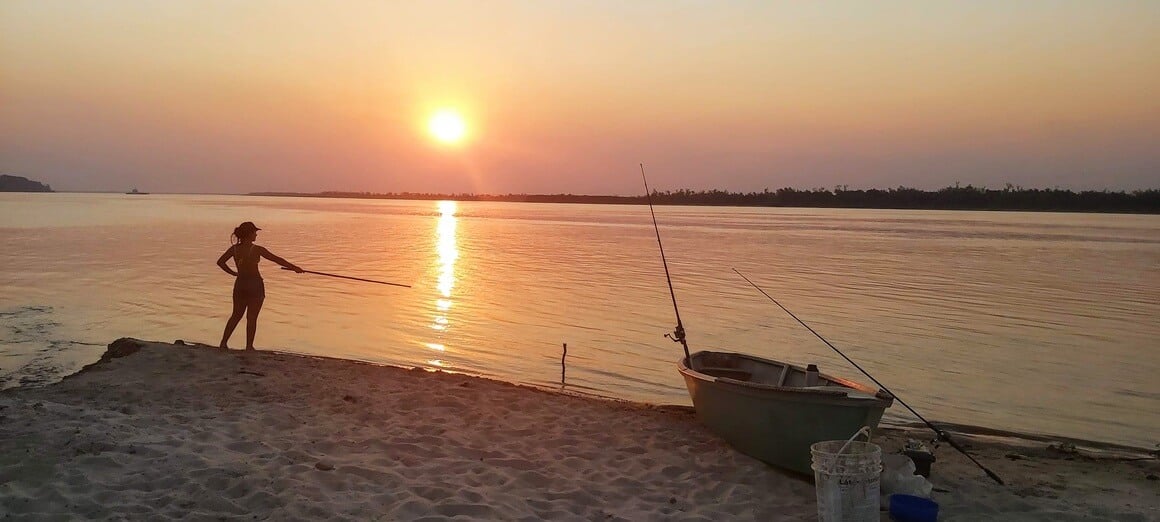
Why Go Backpacking in South America?
The South American continent is one of my favourite places on earth. It was always a place that mystified me: the traveller group was generally older and more mature. So when I got invited (by a sexy South American), I jumped at the chance.
It’s a place where I learned the art of budget travel , fell in love countless times, and had a multitude of life-changing experiences along the way. If you want to get off the beaten track whilst still having the option to meet plenty of other travellers, South America is the place to level up your backpacking skills and head on a real adventure…
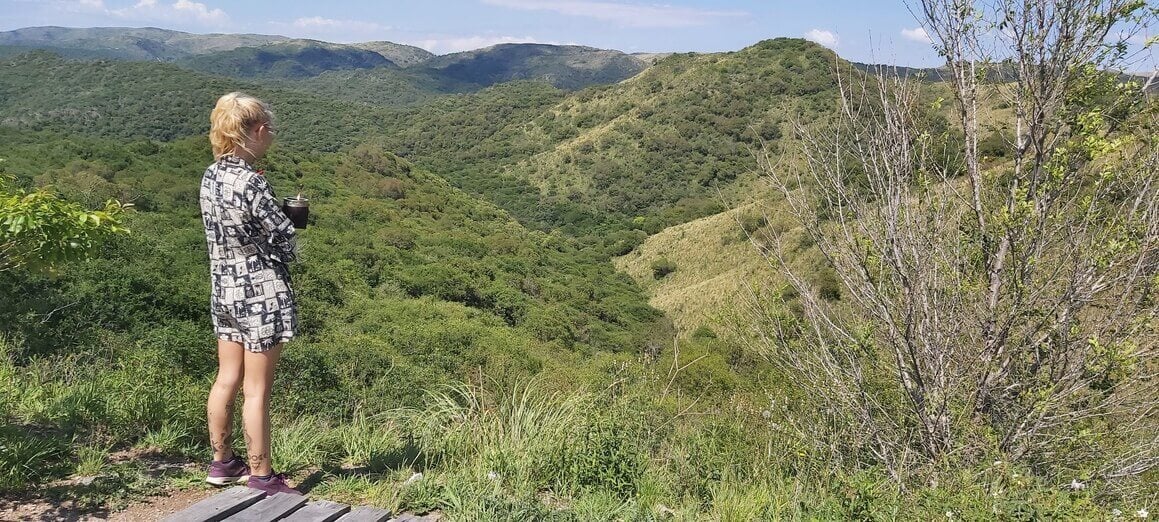
South America is one of the most diverse continents on earth. It is home to the world’s second-highest mountain range in the Andes, world-class surf beaches, the Amazon Basin, the world’s driest desert, huge plains of lush grassland, glaciers, and unique wildlife not found anywhere else on Earth…
Each country you visit whilst backpacking South America offers up the opportunity to experience the incredible natural and cultural forces unique to that region.
Backpacking South America is generally a cheap endeavour – although it’s not as cheap as Southeast Asia or India. There are some fairly expensive corners of South America that you should avoid if you’re travelling on a budget .
You will fall in love with South America (and maybe a person or two along the way). So let’s dive into some South America travel itineraries and backpacking routes for your trip.
Best Travel Itineraries for Backpacking South America
Best places to visit in south america – country breakdowns, 9 top things to do in south america, backpacker accommodation in south america, south america backpacking costs, best time to travel to south america, staying safe in south america, getting into south america, how to get around south america, working in south america, what to eat in south america, south american culture, unique experiences in south america, faqs about backpacking in south america, final thoughts on backpacking south america.
When making a South America backpacking itinerary, remember that travel distances are HUGE, internal flights expensive, and sometimes you want to stay somewhere longer than anticipated.
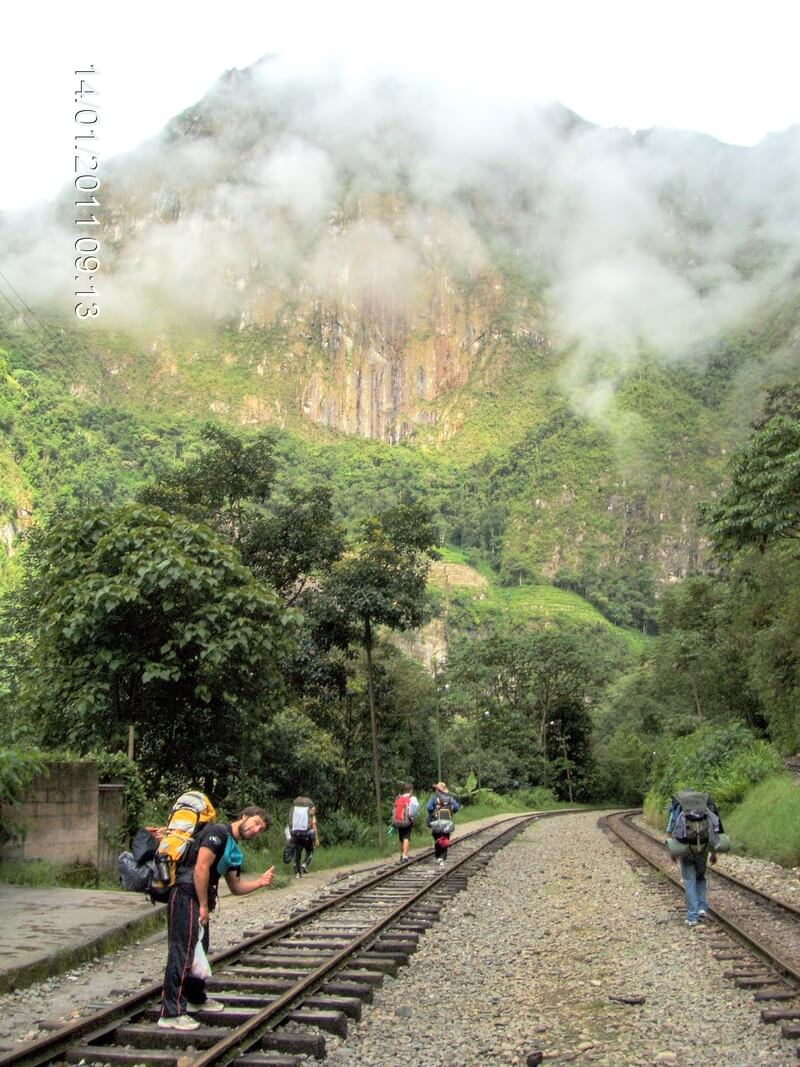
So choose your South America backpacking route carefully. Unlike other continents, how much time you have really matters; you simply can’t do all of it.
If you only have 2 or 3 weeks for travelling South America, forget about seeing the whole continent. I recommend sticking to one country and devoting your energy to exploring it properly.
In one month, you could explore some countries closer to each other. You could visit Bolivia and Lake Titicaca in Peru for example. It’s good to have room for spontaneity in your South America travel itinerary too.
2 Week South America Travel Itinerary – The West Coast Appetizer
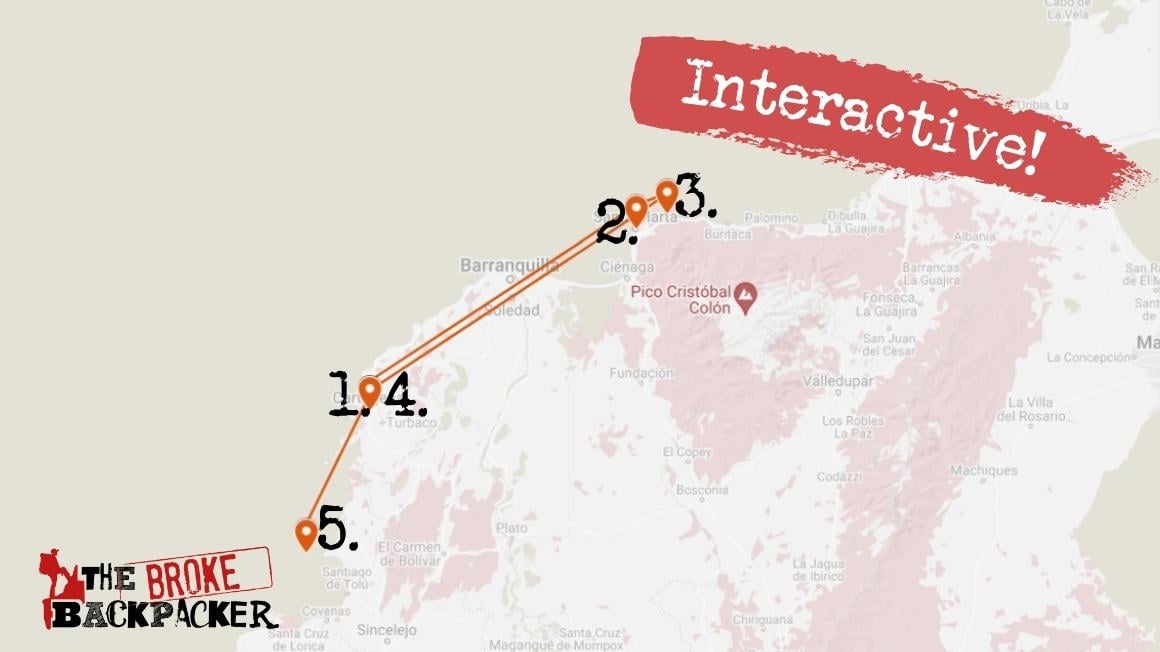
You’ll have to keep moving to make this itinerary happen in 2 weeks, but I believe in you!
Start your backpacking South America itinerary in Colombia by visiting Cartagena . After a few days, head to Santa Marta , the jump-off point for Minca – a charming mountain town – and Tayrona National Park.
Get a bit off the beaten path, and head east to Cabo de la Vela (where the desert meets the sea) and Punta Galinas , where you can feast on fresh seafood along the Caribbean coast. Doubling back to Cartagena , head to nearby Playa Blanca and Tolú (mangrove) before heading to Islas de San Bernardo (white-sanded islands).
Or you could start in Lima , Peru. Explore the city for a day or two before heading to the Nazca Lines , Arequipa , and Colca Canyon .
Then head to Cusco in the Andes. Take a few days to get used to the altitude before setting off on a multi-day trek to Macchu Picchu.
Alternatively, start in Buenos Aires . Then you can head south to trek in Patagonia . In southern Argentina and Chile, you can do the world-famous Torres del Paine circuit . 2 weeks is cutting it fine but – if you hustle – you could pull it off.
In 2 weeks, you can get a good taste of Colombia, Ecuador , or Bolivia . Don’t miss out on the Salt Flats .
1 Month South America Travel Itinerary – The Starter
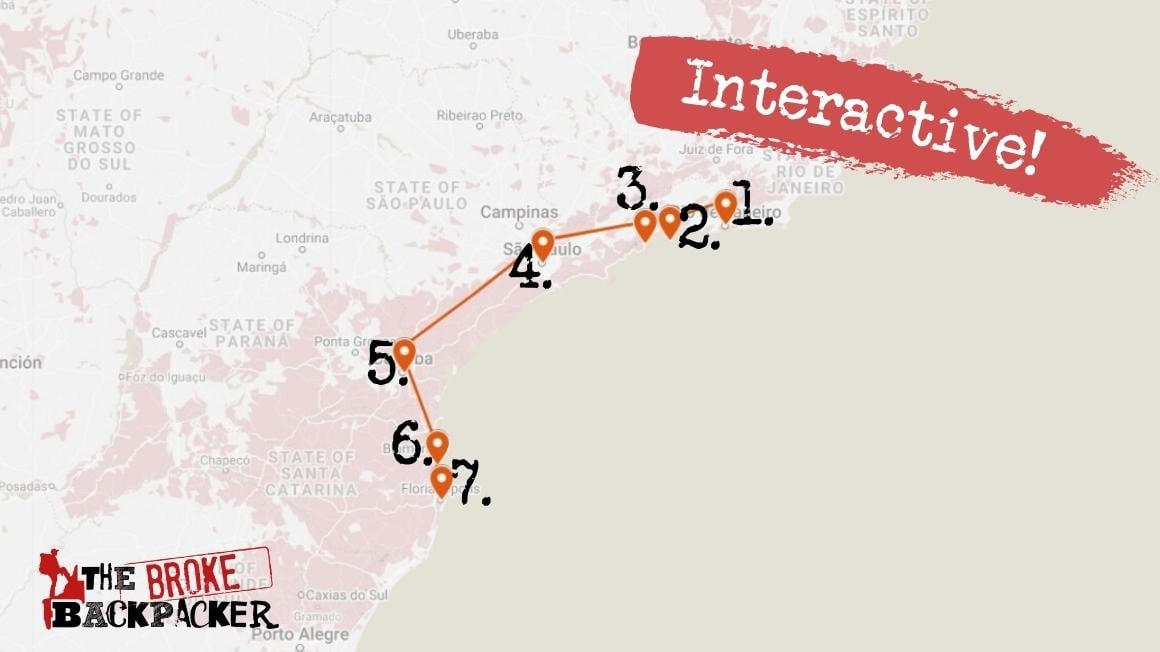
With 1 month, you can make an epic backpacking South America itinerary. If you want to explore more than one country in South America, you’re gonna need more than 3 weeks.
For surf bums, you could easily spend a month heading beach to beach from Southern Peru all the way to Colombia , in 1 month. Or you could do 2 weeks in Argentina followed by 2 weeks of hiking in Chilean Patagonia .
If it were me, larger countries like Argentina, Chile , and Brazil are better to explore with more than 1 month. You can do it but you will spend a long time on bus journeys, so I would just stick to one area.
Southeast Brazil is a good choice for 1 month on a South America itinerary: travel from Rio de Janeiro all the way south to Florianópolis and hit up everything in between. Bear in mind that you’ll probably want to stay in Rio AND Floripa longer than you expect.
Highlights of this route include exploring the megapolis of São Paulo , idyllic getaways of Ilha Grande and Paraty , eco-friendly and laidback Curitiba , and the crazy nightclubs of Balneário Camboriú .
Or, you could fly into Ecuador and spend 3 weeks exploring here: stay at a great hostel in Guayaquil before heading to Montañita . In Montañita you can party and surf to your heart’s content. Head North towards Bahia de Caraquez and Canoa for surf towns that are more off the beaten path.
Next head to the mountains, stopping first in Quito . There are some excellent treks in the Ecuadorian Andes .
If you have time, definitely hit up the Volcano Loop trail on the outskirts of Cotopaxi National Park . A trip to the jungle around Puyo is recommended as well. Then head for a week of trekking in Colombia .
3 Month South America Travel Itinerary – The Great South America Main Course
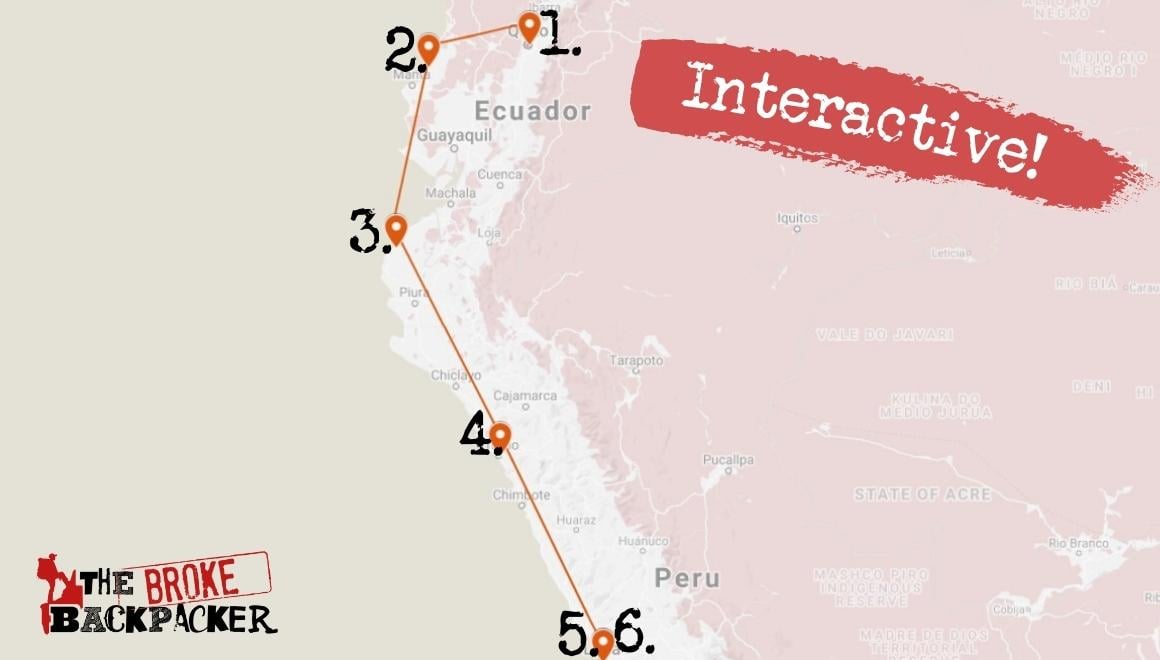
3 months backpacking South America, eh? Hell yes!
I recommend flying into Lima, Peru unless you know you want to start in the north (Brazil or Colombia) or further south (Argentina or Chile). Explore Lima and the coast before heading to the Andes. There Machu Picchu awaits in all of its glory.
Definitely do a trek to the famous Inca city! (More on hiking in South America later). From here, you can either drop down on the other side of the Andes and explore the Amazon basin or you can head south to Bolivia and eventually Argentina and Patagonia .
Alternatively, you can slowly start making your way north via the Coast. You could spend a month (or more) in Ecuador, Colombia, or Brazil respectively.
Personally, I started off in Buenos Aires then went north to Brazil and Colombia . The distances were truly massive. I’m talking 30-hour bus rides (on comfortable buses I must say).
Travelling in South America is never a quick affair, so plan your itinerary accordingly.
6 Month South America Travel Itinerary – The Full 3-Course Latin America
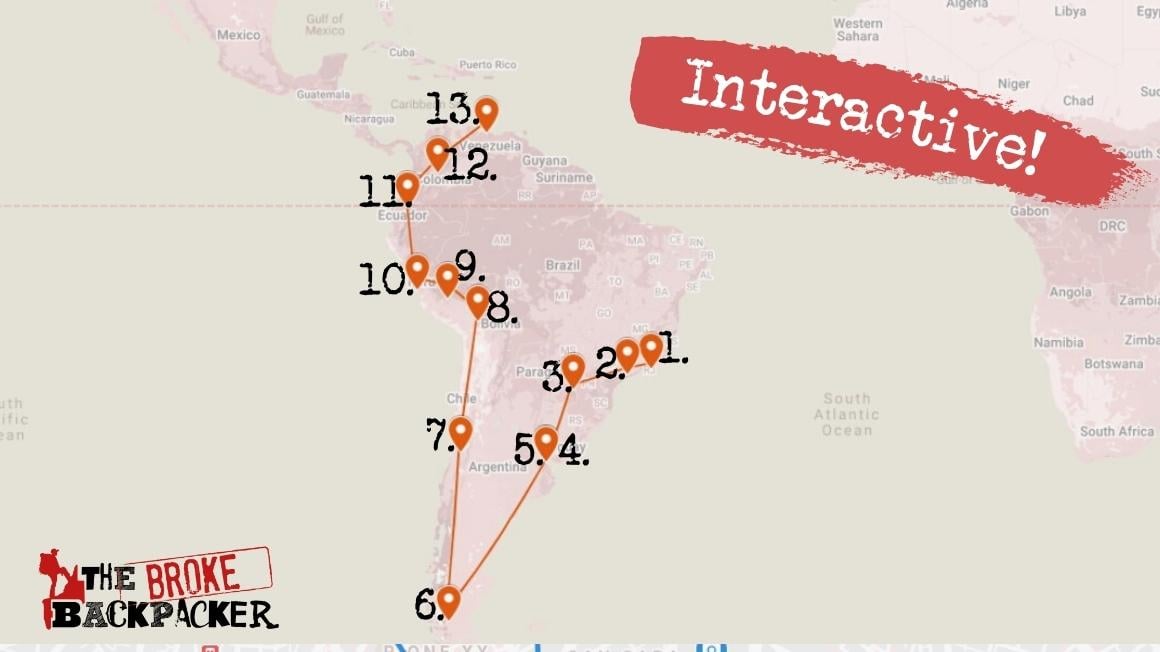
Life has brought you to the fortunate crossroads of having 6 months to travel South America? Good on you!
With a 6-month backpacking South America itinerary, you have the luxury of really being able to take your damn time. To see multiple countries, it’s a practical choice to begin your journey either in the north or the south to avoid backtracking.
With a 6 month itinerary, you can explore many South American countries in depth. I’ll be honest with you, the itinerary shown on the map is really fucking ambitious. But hopefully, it gives you an idea of what crossing this vast continent would look like.
Starting your journey in Rio de Janerio or São Paulo might be a bit of a rough landing, though you will be a primed bad-ass by the time it comes to move on to another country. Other options are starting with some days in Buenos Aires , in Argentina, and Chile, in the south.
You could be surfing it up on the coast of Ecuador one day, and be in the mountains of Peru several days (and many bus rides) later. I advise taking a chunk of your time to really explore and get off the beaten path in top destinations like Brazil , Colombia , and Bolivia .
Having 6 months or more to go backpacking truly means you have a total blank slate to work with. So get ready to write your own beautiful backpacking destiny!
Each country in South America has something unique and profoundly exciting for backpackers. But they also have some common themes: they are Spanish speaking (minus Portuguese in Brazil), they have stunning natural beauty, and some of the nicest people you will meet whilst travelling. So finding the best places to backpack in South America has a lot to do with your own interests.
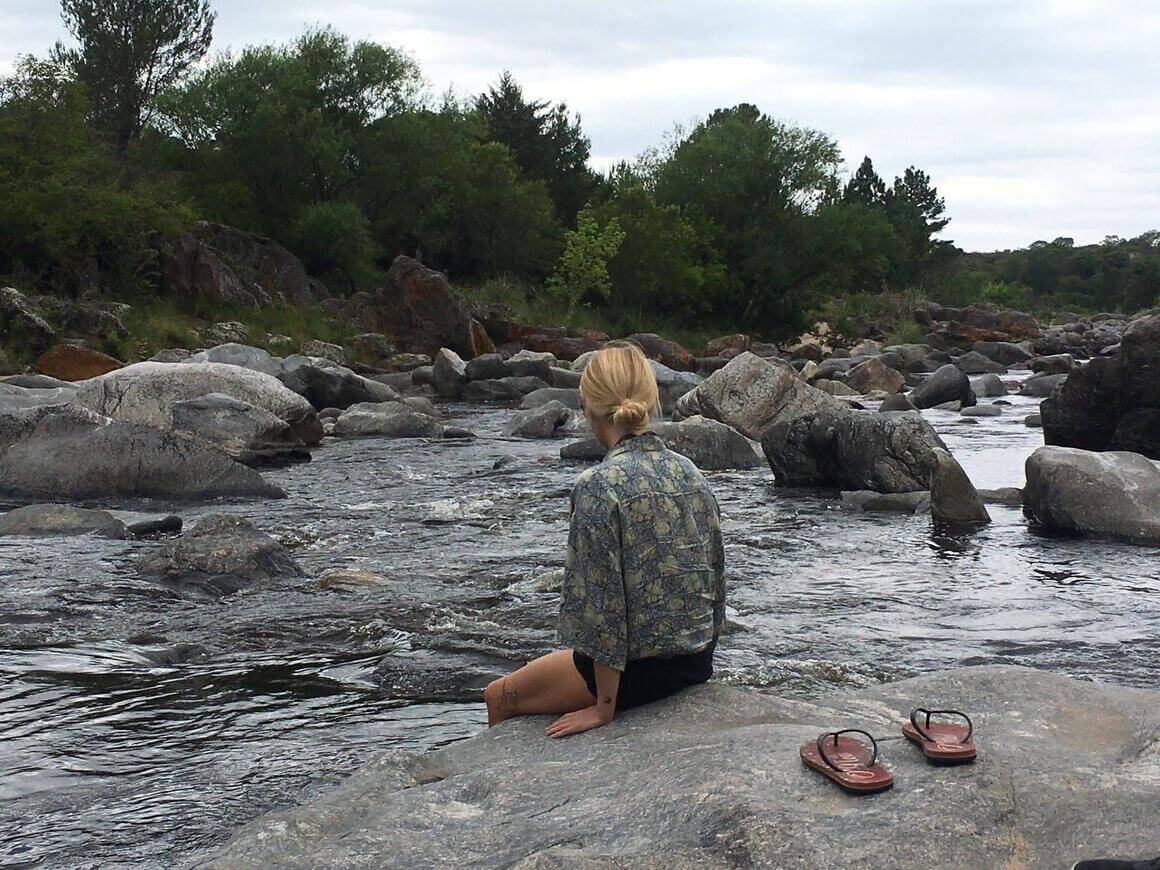
Maybe you’ll explore the epic snow-capped peaks of Patagonia in Argentina and Chile. Party with beautiful people at the Carnival in Brazil.
Trek to the Lost City in Colombia. Experience the sun-drenched deserts of Bolivia and the colourful Rainbow Mountains of Peru.
Backpacking through South America truly is a life-changing journey through one of the planet’s most fascinating landmasses. When you visit South America, you can be sure that it will be some of the most fun you will have in your life.
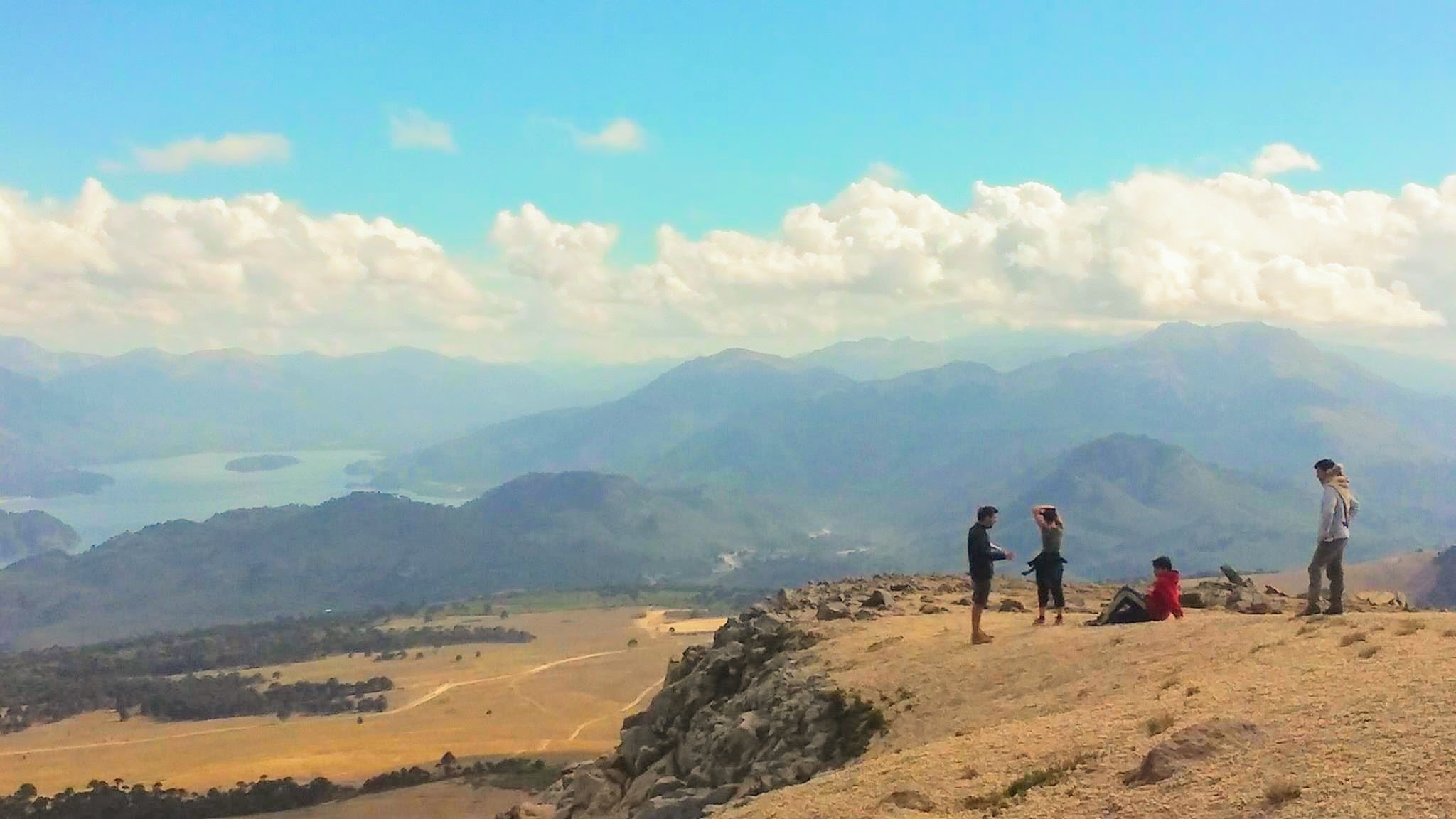
South America is a vast continent on the move. The number of people travelling to South America is increasing every year. Whilst the cost of living in South America remains quite low, each country requires a different budget for travellers.
Once you begin to discover a few of the South American countries, you will be entranced by the jaw-dropping landscapes, fascinating history, vibrant culture, and awesome food.
Let’s take a look at the countries that make backpacking in South America so damn special.
Backpacking Brazil
Brazil is, hands down, one of South America’s most dynamic countries. It’s all about the extremes. Whether it’s the parties, the people, or nature, the vibrations run through everything – and connect everyone.
Backpacking in Brazil offers up sick surf beaches, fun-loving locals, insane parties, and landscapes that would make even the most seasoned traveller say “no shit, mate, look at that!”
Of course, the Brazilian festival Carnival is legendary – and for good reason. Get your mind blown on the Brazilian side of Iguaçu Falls , visit the Amazon , drink a Caipirinha on the beach! Plus Brazil’s home to big up-and-coming cities like Belo Horizonte, Curitiba, and Natale.
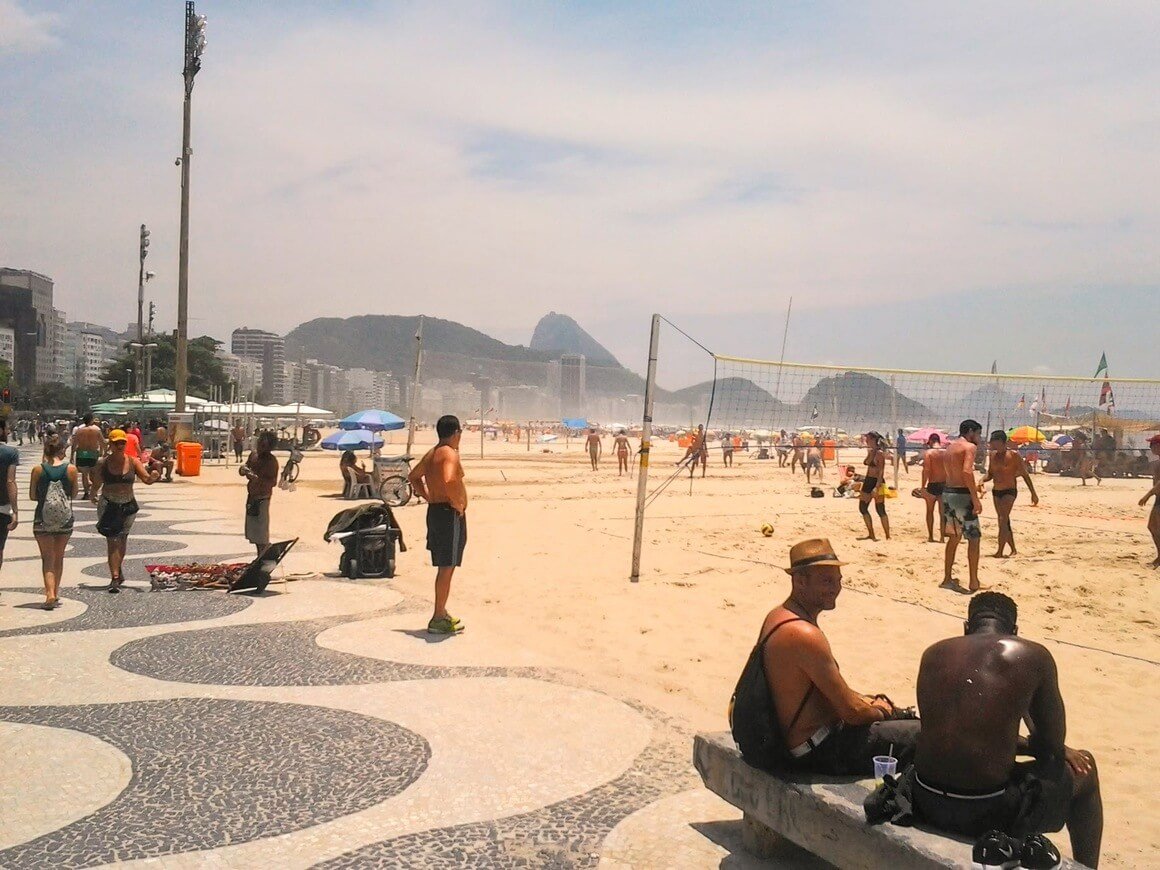
And when I say ‘extreme’, I mean extreme : Brazil is absolutely MASSIVE and covers nearly half (47%) of South America’s landmass! That should give you an idea of how big it is.
But, more importantly, it gives you a better idea of how much diversity Brazil has on offer. In fact, there’s a lot going for Brazil that you may not be aware of.
For example, trekking probably isn’t the first thing that pops into your mind when you think about backpacking through Brazil. It’s a shame because Brazil has truly gorgeous trails spread throughout the country. It’s also home to Iguazu, one of the most incredible waterfalls on Earth.
The best hiking opportunities are usually found in Brazil’s national parks (parques nacionais ). Brazil has over 70 national parks and – in terms of beauty – these can contend with any other on Earth.
What to Know Before Visiting Brazil
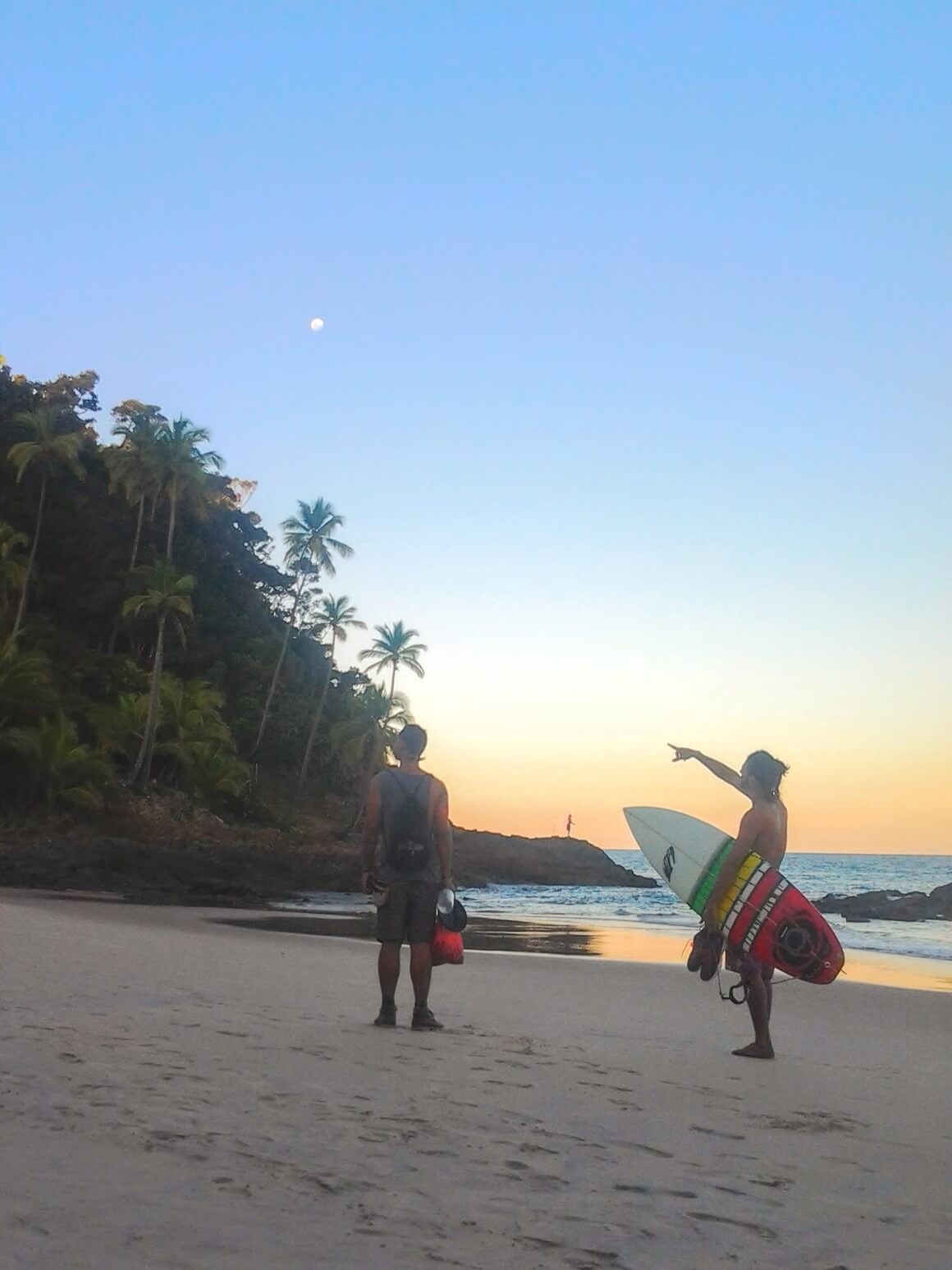
- Don’t miss out on… Florianopolis. The Brazilians favourite place to visit for a reason. It’s chilled, safe, and gorgeous. You plan to stay in Floripa for a week, it grabs you by the balls, and you get stuck for months.
- Keep an eye out for… Travel distances. Don’t be fooled: they’re way longer than they seem on the map. Give yourself plenty of time to get from A to B.
- The coolest hostel is… Hostel do Morro . In one of my favourite destinations in Brazil, this hostel is a true nature immersion. In the “mato”, with sea view and monkeys visiting. A true good vibes place!
- The best food is found in… Belo Horizonte. There is an amazing energy to this place; everyone hangs out on the streets, eating and drinking at plastic tables, all night long.
Backpacking Colombia
Whilst South America has many countries that I consider to have the full package , Colombia is the most complete. It’s a relatively small country. So considering the scale of epic surf, neverending parties, untouched jungle, happening cities, and towering mountains, Colombia is a reason for backpackers to keep travelling!
Cali, Cartagena, Bogotá , and Medellín are a few major cities in Colombia where you can really let loose. Go and have some extraordinary conversations with the locals about life in Latin America and not taking life too seriously.
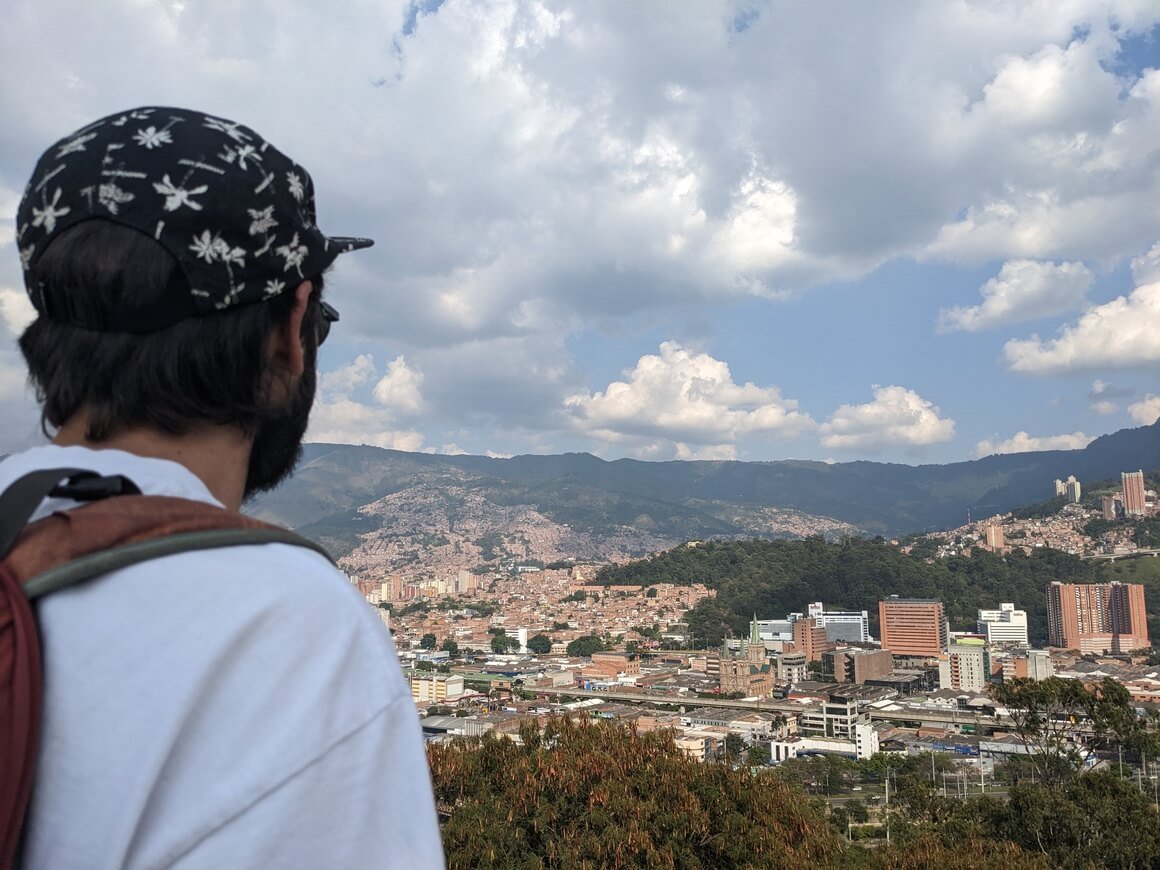
Is Colombia safe ? Perhaps your mum would love to know. Hell yes, it is !
As much as Colombianos are ready for the disassociation with Pablo Escobar, it’s hard not to mention the impact that he made on the country and the South American continent as a whole. But his reign of terror is over.
Modern-day Colombia couldn’t be more different from the days when narco-traffickers ruled the country. Visiting Medellín now vs 20 years ago is a COMPLETELY different experience. The Medellín of today is a great experience.
Colombia is for adventure junkies and nature lovers too. The northern terminus of the Andes Mountains ends here and you can take your treks into the deep jungle in Colombia’s National Parks .
What to Know Before Visiting Colombia
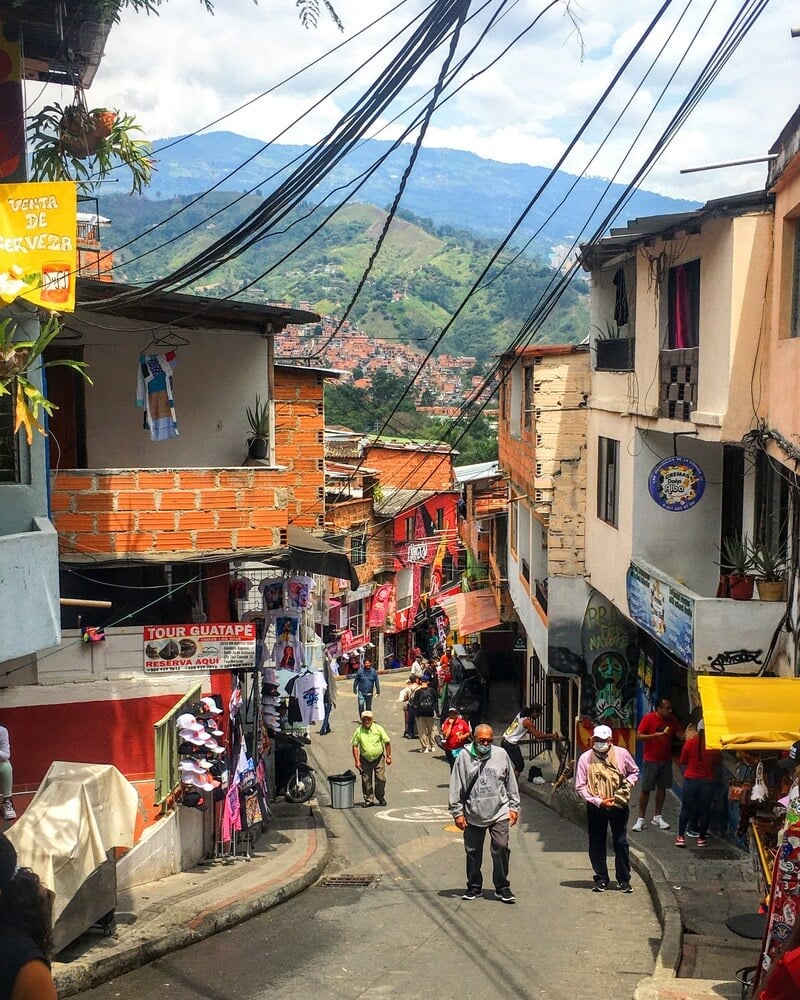
- Don’t miss out on… Carnival in Barranquilla. Most of the time, this industrial town is overlooked by travellers. But for one week of the year, this place goes NUTS.
- Keep an eye out for… how difficult the trek to Cuidad Perdida is. It’s long, treacherous, and hot as shit, but absolutely worth the effort in the end. The Lost City is one of the best places to visit in South America.
- The coolest hostel is… Viajero Santa Marta Hostel . Great location and has lazy and peaceful vibes. Amazing rooftop and activities to connect and meet other travelers.
- The best food is found in… the local restaurants. Look for the menu del dia to feel like you’ll never need to eat again.
Backpacking Ecuador
Ecuador might be small but it certainly packs a punch. I spent 3 months backpacking in Ecuador and could easily spend many more.
The diversity is incredible and it’s a great place to experience Andean Highland culture. The people who live in the Andes have a distinct and ancient culture rooted in mountain life. They even speak another language called Quechua . It’s a relatively safe country , and isn’t ruined by mass tourism.
In addition to staying in colonial cities like Quito , Ecuador’s natural landscape is the biggest draw. You can spend weeks or months exploring the coast before heading to the mountains and vice versa. Towering over the shore, volcanoes, waterfalls, and massive snow-capped mountains all make incredible trekking routes.
Surfing reigns supreme on the Ecuadorian coast. It attracts surfers from all over the globe. Even if you’re a beginner, it’s a great place to catch your first waves. Towns like Montañita and Canoa are famous surf beaches and party hotspots.
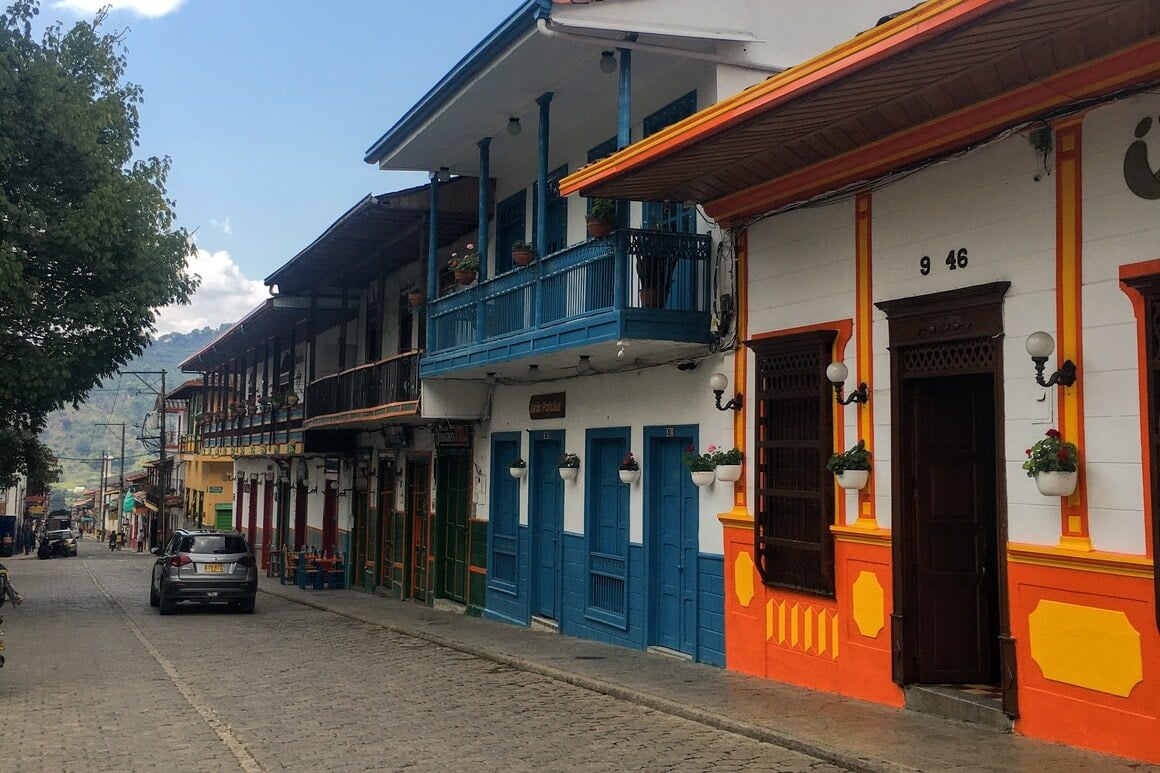
If you have some extra cash in your budget, you can visit The Galápagos Islands . But be warned – this is not a cheap endeavour, especially for excursions like diving (though it is AWESOME). So prepare yourself to shell out some cash!
Then there is the Amazon Basin of Ecuador. The Amazon region is what helps make Ecuador one of the most biologically diverse places on earth. The Amazon is best explored by boat with a local guide and is bound to be the adventure of a lifetime!
What to Know Before Visiting Ecuador
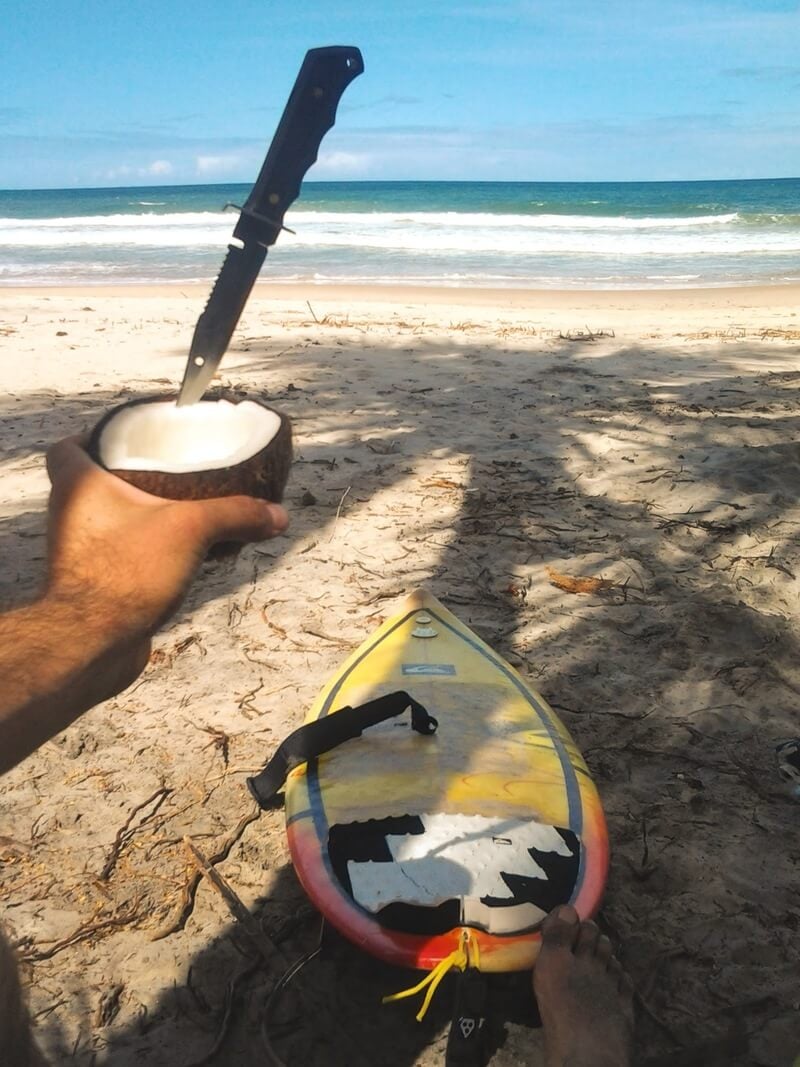
- Don’t miss out on… exploring the highlands and Cotopaxi National Park. Easily accessed from Quito and totally epic.
- You know what’s overrated … Montañita. It’s not all it use to be and is mostly catered to foreigners who want to get wasted and high. If you want real Ecuadorian culture, there are better places nearby.
- The coolest hostel is… Casa del Sol . Relaxed vibe at a few steps from the beach. Close enough to go party and far enough to have a good sleep. THE place for yoga and Surf.
- The best food is found in… the small almuerzo (lunch) cafes found across the country.
Backpacking Peru
Ah Peru. Backpacking Peru is the essence of travelling in South America. Though tourism has spiked in Peru in recent years, there is still plenty of magic to be found here.
The cost of backpacking Peru is a little higher than you might expect. Expect to pay between $30-40 USD a day whilst travelling here. (But more about the cost of backpacking South America later.)
Peru has a super long coastline dotted with prime surf beaches and scuba diving sites. In the Andes lies a whole other form of beauty.
I mean, who isn’t aware of Machu Picchu and hiking the Inca Trail ? Besides the obvious, there is much, much more to the Peruvian Andes than Machu Picchu. Although, you still have to go there!
Peru has some truly fascinating colonial cities as well, including Cuenca and Cuzco, which is the gateway city to Machu Picchu. The off-the-beaten-path potential in Peru is enormous.
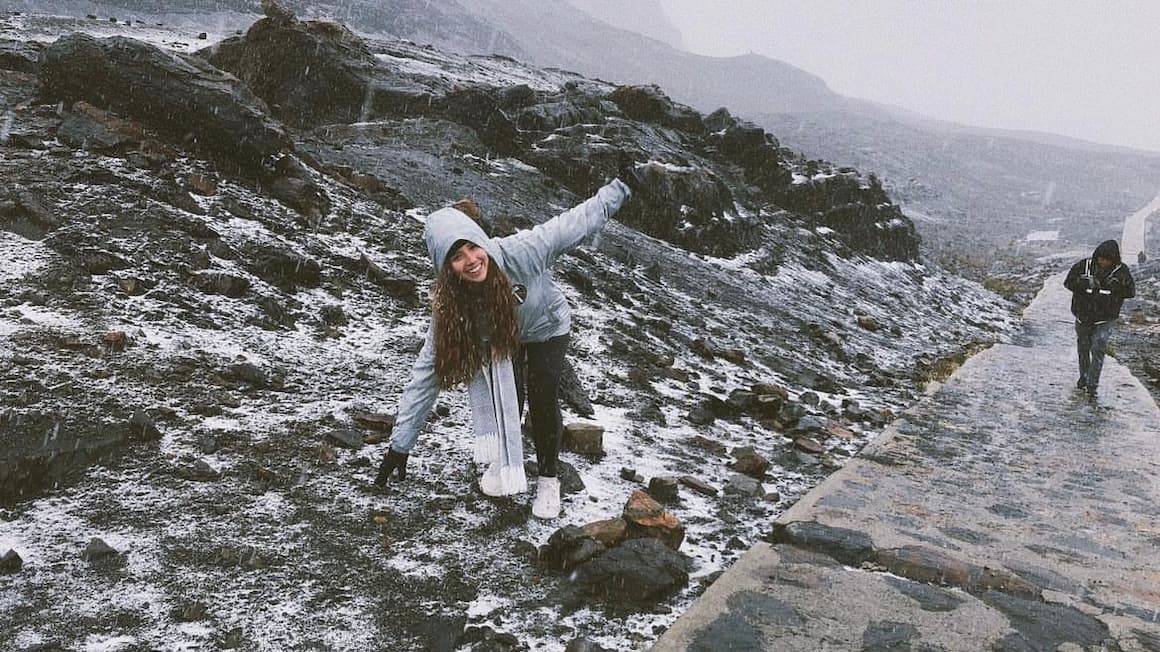
Check out the Rainbow Mountains to see nature at its most colourful. Hike the majestic Cordillera Huayhuash . Explore Colca Canyon and sleep out under a billion stars.
If you want a truly magical experience, there are many eco-lodges in Peru that are nestled in the best nature spots, from the Amazon jungle to the Andes mountain range.
Wherever you decide to travel in Peru, be sure that it will be a highlight of your South America backpacking adventure.
What to Know Before Visiting Peru
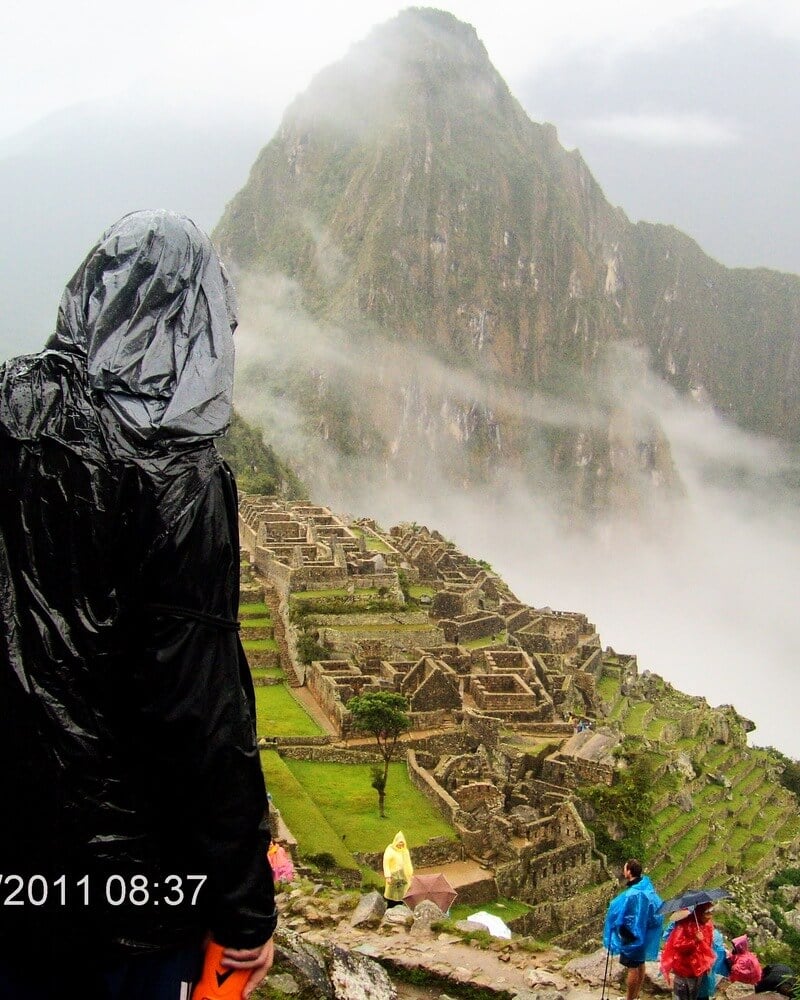
- Don’t miss out on… a motorcycle journey through the Sacred Valley outside Cuzco. It’s definitely worth staying in Cuzco a little longer for this.
- You know what’s overrated… the Inca Trail. Go for the less-trod Salkantay Trek to Machu Picchu instead.
- The coolest hostel is… Banana’s Adventure Hostel . In an unreal location (an oasis in a desert) this is a sociable and relaxed vibes hostel. With a great rooftop plus a lovely garden with hammocks, and an outdoor pool.
- The best food is found in… Lima. This city is full of cafes, local lunch spots, and street food vendors. The best are in Barranco and Miraflores. Pig out on ceviche !
Backpacking Bolivia
Backpacking in Bolivia offers up a glimpse of what South America was like 30 years ago. It’s a country looking to the future in many ways whilst still having one foot firmly rooted in the tradition of the past.
Expect super friendly locals, dramatic desert and mountain landscapes, and the kind of low prices which make the dirtbag within us very happy. You could easily get by on $20-25 a day here, and even less by roughing it a bit.
Bolivia is home to plenty of adrenaline-pumping activities including the Road of Death , which, in essence, is a road down through the mountains in which people ride bicycles to the bottom at top speed. The ride goes on for at least 30 kilometres and it is straight down. Can you guess why it’s called the Road of Death yet?
Aside from the high-risk adventure activities, Bolivia is safe for the most part as well.
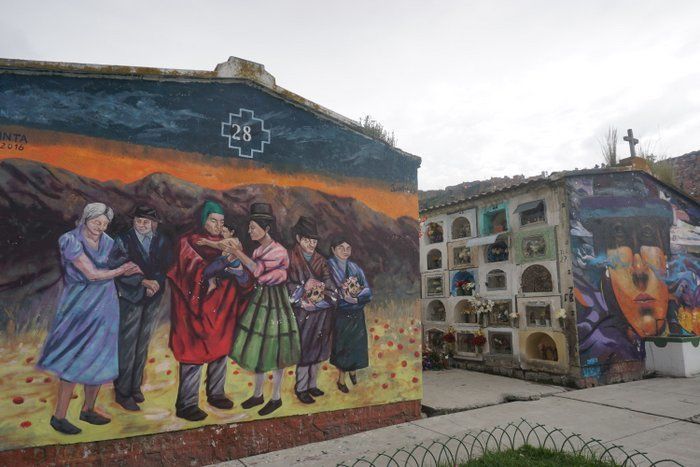
World-class trekking is abundant in the Bolivian Andes. If you love to hike, all the more reason to visit Bolivia. Bring along a good sleeping bag as temperatures can plummet at night.
La Paz has the best hostels (particularly for partiers) and is a cool city to base yourself in. Lake Titicaca is breathtaking, however, it has become far too touristy – I personally can’t deal with that many people taking selfies. I don’t blame the locals as they need to make a living. Just the way it has been done is unfortunate.
The Salt Flats are also cool AF. Okay, admittedly it’s pretty touristy too, but it’s still worth a visit.
What to Know Before Visiting Bolivia
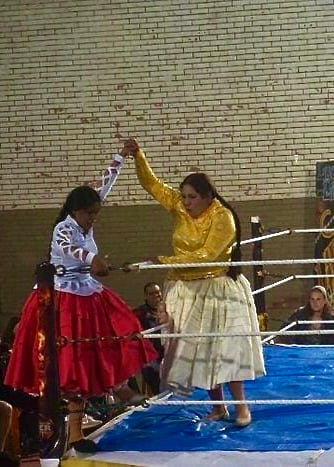
- Don’t miss out on… the Salar de Uyuni. Yes, everyone who comes to Bolivia does this and, yes, it’s touristy. Regardless, it’s still in-fuckin-credible.
- Keep an eye out for… the altitude. Some people fly directly to La Paz from sea level and get sick almost immediately. At 3640 meters, La Paz is the highest major city in the world.
- The coolest hostel is… Wild Rover La Paz . A dynamic and festive hostel. The perfect place to start your Bolivian experience connecting with other travellers. Great location in the central area.
- The best food is found in… La Paz. This is the epicenter of Bolivia’s newly emerging food culture.
Backpacking Chile
There are no half measures while Backpacking Chile. From trekking through gorgeous glacial national parks to exploring the martian bone-dry Atacama desert , you’re all in for one hell of an experience.
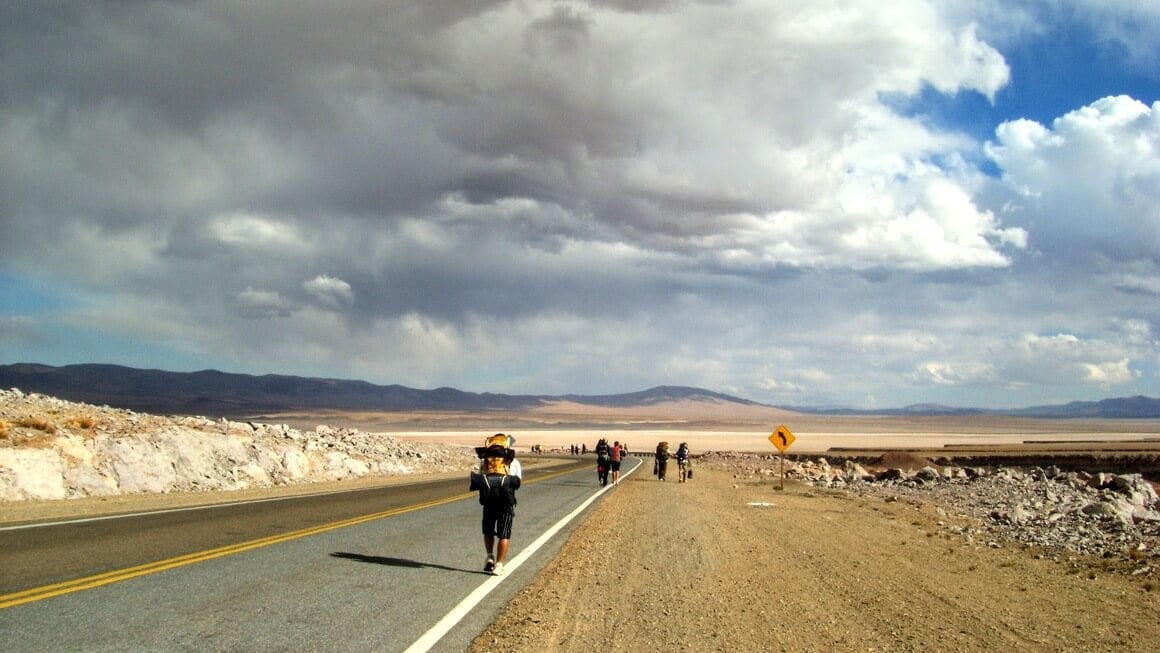
There are 36 National Parks in Chile ; all of them are beautiful and unique in their own way. Chile is also home to Easter Island , one of the most mysterious places on the planet.
Like Argentina, Chilean Patagonia is a paradise for trekkers and adventure types – though it does take some effort to reach the places you want to go trekking in. That said, the journey is well worth it; experiencing some of the planets last truly wild places is an indescribable feeling that you can only understand by doing it!
Most backpackers will start their backpacking journey in Santiago. But you can come to Chile from one of its borders in the South (as I did).
Oh yeah, one more thing: Chilean wine is cheap and it is damn good! Do you need more reasons?
What to Know Before Visiting Chile
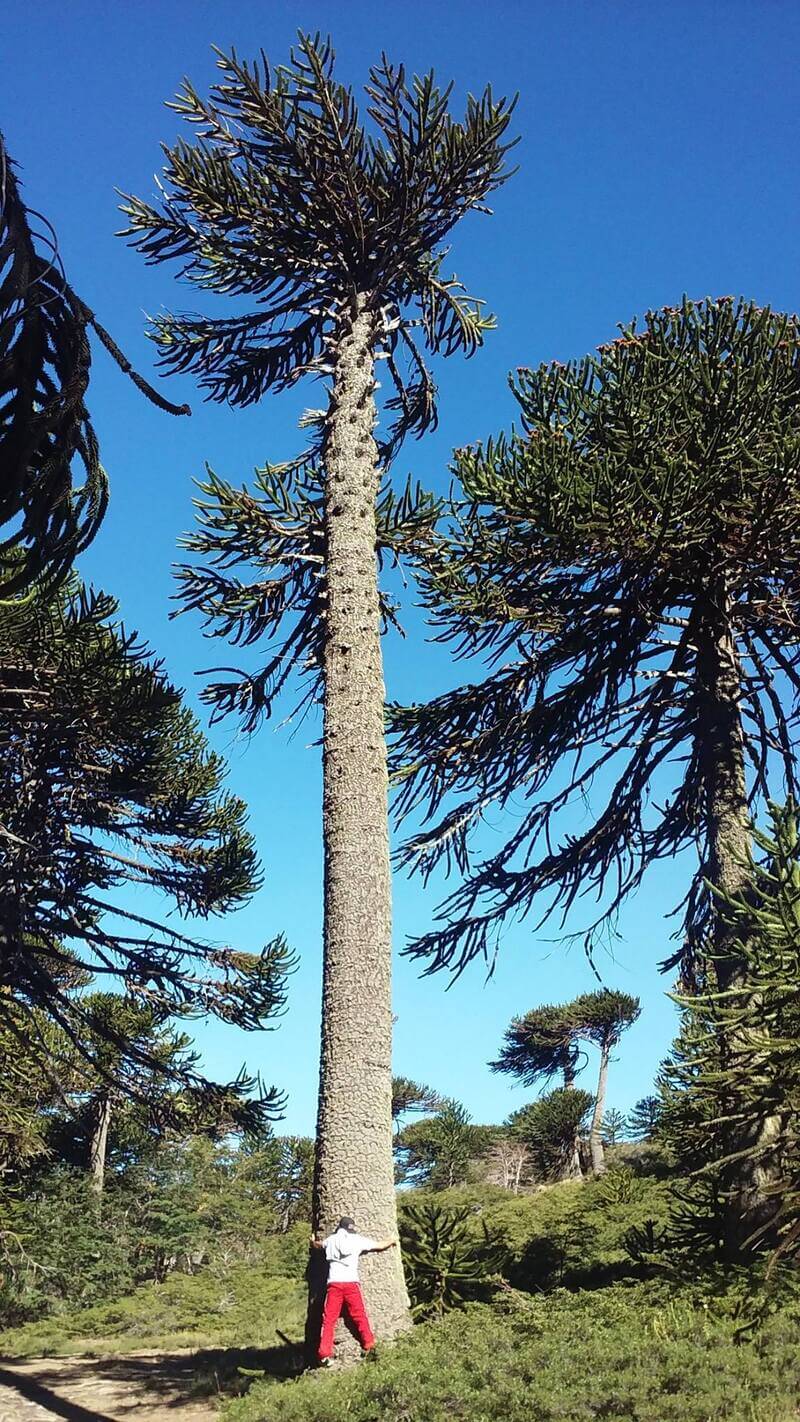
- Don’t miss out on… Patagonia, and not just the usual spots. Chilean Patagonia is vastly unexplored, especially the fjords. Look out for whales, dolphins, penguins, and elephant seals.
- Keep an eye out for… fire bans in Torres del Paine. A lot of nature has been threatened because of dickhead backpackers using gas burners, despite warnings.
- The coolest hostel is… MaPatagonia Hostel . Near a beautiful lake, this place has what you need. Kitchen facilities, a nice big garden, some cats, and a jacuzzi! There is also a fireplace for those cold nights.
- The best food is found in… Santiago. Staying in Santiago will unlock the most culinary options, including the cheap street food stalls.
Backpacking Argentina
Viva Argentina!
Backpacking Argentina is one for the ages. Welcome to the land of wine, excessive meat, football, tango, incredibly passionate people, and the final frontier – Patagonia.
Argentina is an immense country with very distinct regions. Eat to your heart’s content, party harder than you ever have before, and fall deeply in love.
You’ll probably land in Buenos Aires , arguably the cultural capital of all of South America.
Unquestionably, you’re going to find incredible hostels in Buenos Aires and reasons to stay. But don’t stay too long!
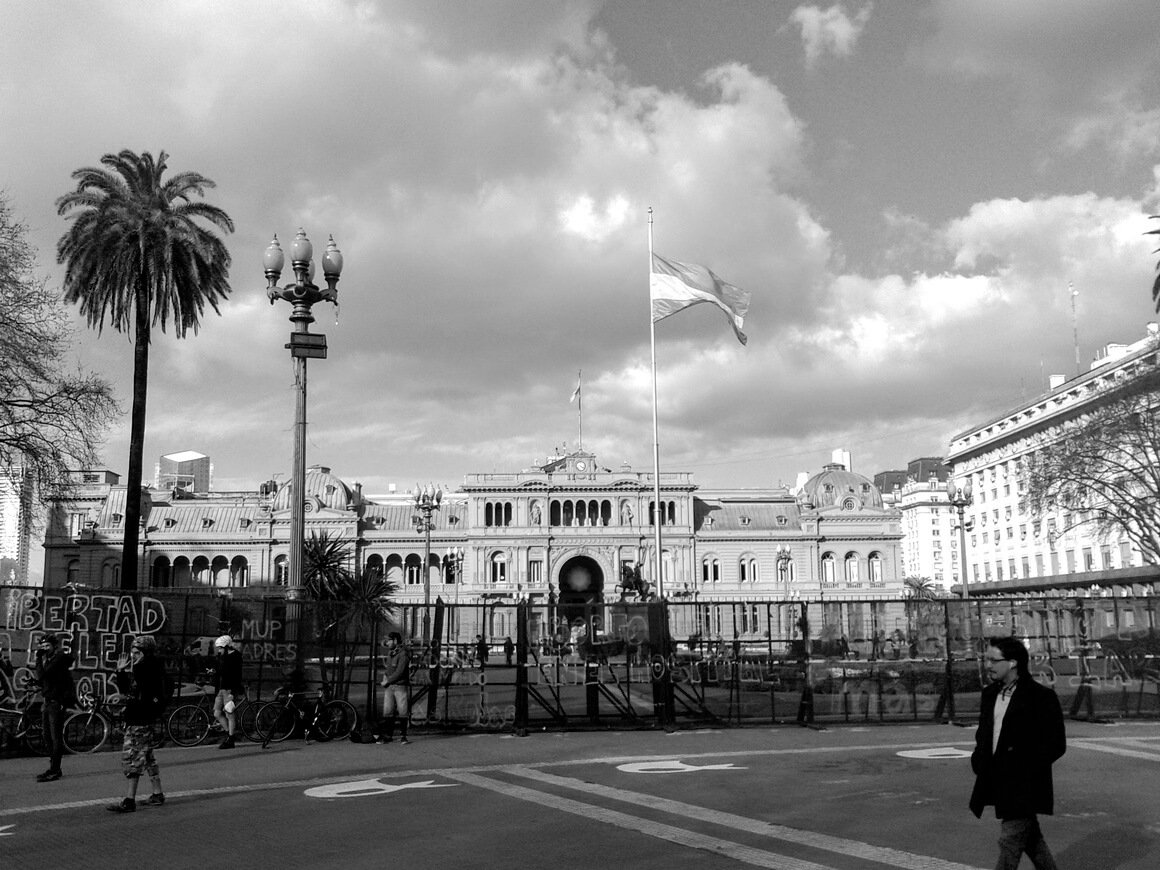
Rosario and Cordoba are cities like Buenos Aires but, in my opinion, better. They’re a perfect place to head to if you want to steer clear of the heavily populated capital. Mendoza is the wine region home to the “ best wine in the world ” (according to Argentinos).
Further south lies Patagonia : one of my favourite places on Earth, and home to many Argentinian National Parks . Patagonia is a truly expansive, desolate wilderness area where the weather is harsh and civilization is few and far between.
Trek mountains and glaciers, or sea kayak around them,. There, you could go days without seeing many (if any) backpackers! Now THAT’S the dream.
Staying at an Argentine mountain hut (refugio) is a wonderful experience not to be missed. Few who travel to Argentina manage to make it as far as Tierra del Fuego (the Land of Fire). Visit one of the most dramatic places in Argentina with its long summer days and epic arctic landscapes.
Speaking of the arctic, you can arrange trips to Antarctica from Ushuaia ! This would be the adventure of a lifetime but it’s by no means cheap.
What to Know Before Visiting Argentina

- Don’t miss out on… El Chaltén, which is the base for seeing some of the most dramatic peaks on Earth: Cerro Torre and Fitz Roy.
- You know what’s overrated… La Boca in Buenos Aires. These much-hyped multi-coloured houses are pretty rundown and actually quite dangerous, I strongly suggest you avoid it. The whole area feels like a tourist trap. There are much better things to do in Buenos Aires .
- The coolest hostel is… America del Sur Hostel (El Calafate). Cozy, super social, and with an insane view of the lake, the town, and beautiful sunsets. Great place to chill, and work (if you need to).
- The best food is found in… your neighbour’s personal asado . Nothing beats grilling grade-A Argentinian beef with some locals.
- The official exchange rate is NOT THE EXCHANGE RATE . Because of the fluctating exchange rate, many of the locals withdraw their cash by using what is referred to as a “blue dollar rate” from Western Union. This way gives you 50% more pesos than withdrawing pesos from an ATM or exchanging currency.
Backpacking Uruguay
Not many travellers end up backpacking in Uruguay. There are a few reasons why:
- It’s small
- It’s out of the way
- There’s not a ton to do
All of the above are true to some extent: Uruguay is not overflowing with adventurous activities or jaw-dropping sights. But let me tell you, they have some of the best quality of living in South America.
One of the perks about Uruguay is you don’t HAVE to do anything here. People are friendly and, compared to some chaos you find in other areas of the continent, it’s pretty chill. The beautiful coast is the perfect place to get away from the usual backpacking South America route and to avoid traveller’s burnout .
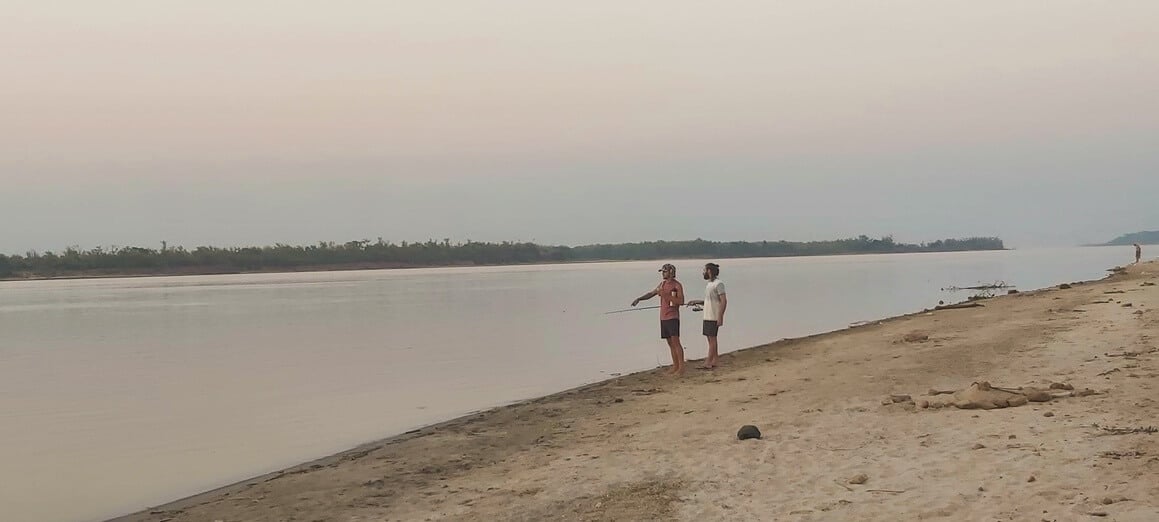
Outside of Montevideo , there are nice beach towns worth crashing at; Punta del Diablo is the quintessential lazy surfer town. Punta del Este is fun in the summer if you like partying. Colonia del Sacramento is an old colonial outpost and UNESCO heritage – although it is admittedly more of a day trip rather than a base.
Oh but here’s the kicker: weed is legalised. Yes, Uruguay is famous for allowing the smoking of the devil’s lettuce. And the quality of it is surprisingly good.
Lots of locals keep a weed garden on their balconies. Perhaps your hostel in Montevideo will have one?
Head to Uruguay if you want to chill out and do your own thing. It’s easy to travel to Brazil and Argentina from there too.
What to Know Before Visiting Uruguay
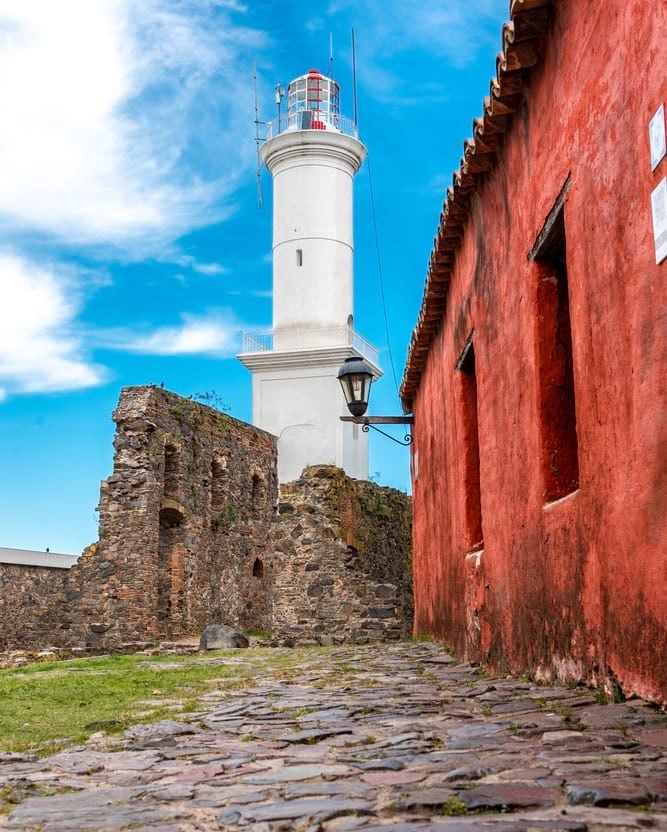
- Don’t miss out on… Punta del Diablo. This is laid-back surfer town evades most backpackers. It is arguably one of the best beach towns in South America.
- You know what’s overrated… Punta del Este. This place literally exists for the sake of Argentinians on holiday. In the off-season, it’s empty.
- The coolest hostel is… La Brújula Hostel . It’s near the beach, eco-friendly, has a family vibe, and is great to meet new people. This is a gem next to the sea.
- The best food is found in… Montevideo. Can’t beat a giant chivito after you’ve got the munchies!
Backpacking Venezuela
Venezuela is a truly incredible country. With towering mountains, steaming forests, endless beaches , and just enough danger to keep you on your toes, this country is every budding adventurer’s dream destination.
A Disclaimer on Visiting Venezuela
Unfortunately, due to the political situation in Venezuela , The Broke Backpacker absolutely does not condone visiting the country right now . It is simply not safe and it would be irresponsible to even attempt to Venezuela at present.
Unless you somehow have absolutely solid and trustworthy contacts on the ground , Venezuela is not the place to travel for the foreseeable future. We do not have any contacts to give out.
That being said, there are many team members at The Broke Backpacker that hold a special place for Venezuela in their hearts. For this reason, we are leaving this information available to you, our readers, as an homage to a country we love. We can’t wait for the day that it will be safe to visit again.
Backpacking Venezuela has a truly terrible reputation. Don’t get me wrong, travelling Venezuela has been dangerous in recent years: this is a country where you need to keep both eyes on your gear, watch who you’re with, and be on the lookout for iffy situations before they get the chance to rear their ugly head.
Backpacking in Venezuela is, in my opinion, one of the last great adventures out there. Plus it’s one of the cheapest countries in the world to backpack in.
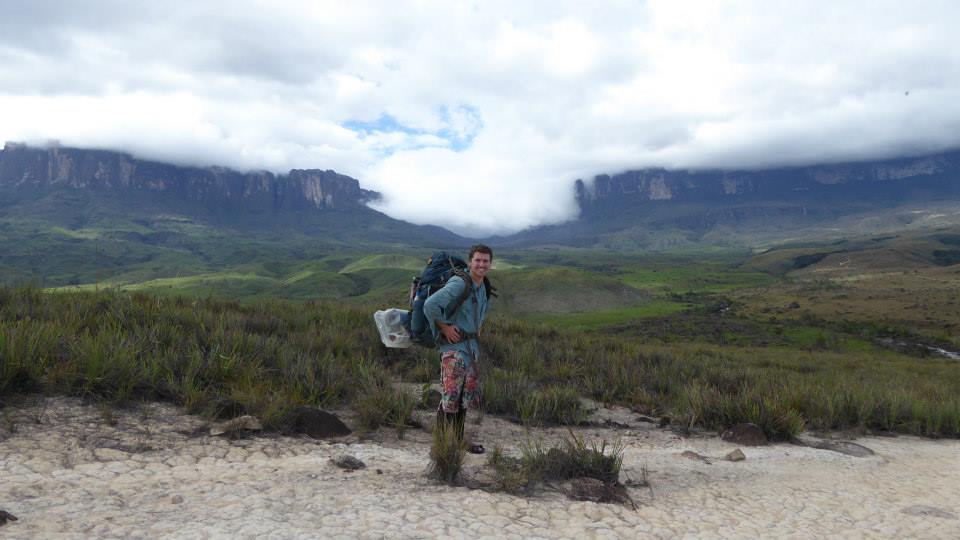
Venezuela is a mysterious country. It attracts adventurers looking for a raw adventure.
It’s a country yet to be polluted by heavy tourism with incredible landscapes of mountains, forests, lakes, and caves. It is a kind of Shangri-La for adventurers and extreme sports lovers.
A South American backpacking trip to Venezuela is getting into the wild. To feel like the old explorers, Venezuela will not disappoint you. But backpacking Venezuela is not for the faint-hearted: this is a veteran explorer country.
What to Know Before Visiting Venezuela
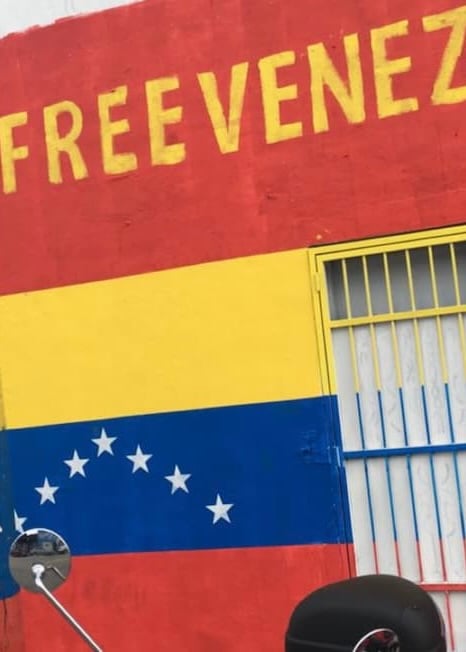
- Don’t miss out on… Mt. Roraima – the highest tabletop mountain in the world; an incredible place to explore. Sometimes you feel like you’re walking on an island in the sky.
- Keep an eye out for… the seasons when visiting Angel Falls. When it’s dry, the falls are actually quite weak (it’s more like a trickle).
- The coolest hostel is… El Sofá Caracas . Safe, quiet, cozy place in the big city. You’ll feel at home instantly. And they have a unique boat pool to chill when it gets too hot.
- The best food is found in… the buffet places where you pay by the weight of your plate. A little goes a long way here and you won’t be disappointed!
Getting Off the Beaten Path in South America
South America is totally full of wild places, tiny villages, far-flung settlements, lonesome valleys, sparsely inhabited jungle… Point being, there are plenty of great places to get off the beaten path . With a little motivation, you may well find yourself cutting your own path and writing your own backpacking destiny, one adventure at a time.
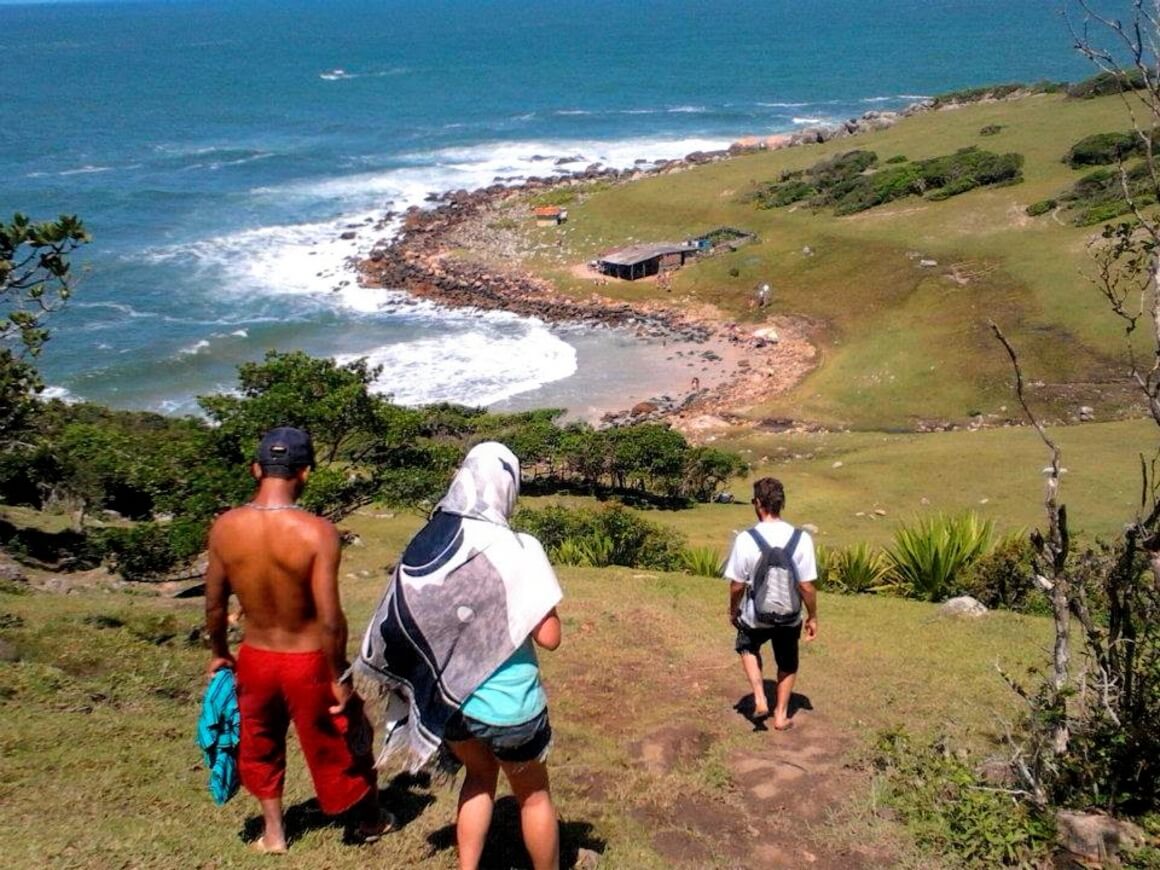
Explore the national park systems of South America as much as you can. Investigate the little interesting-looking food stalls where all the locals are queuing up.
Don’t rely on a guidebook of popular places. In South America, those tiny towns in the middle of nowhere are where the real culture is, and the real adventures. All you need is a bus ticket…

We’ve tested countless backpacks over the years, but there’s one that has always been the best and remains the best buy for adventurers: the broke backpacker-approved Osprey Aether and Ariel series.
Want more deetz on why these packs are so damn perfect? Then read our comprehensive review for the inside scoop!
You can make your South America backpacking route totally unique. No matter what things you get up to, they’re going to leave a big print on your heart. But here are some things I definitely recommend considering planning for your itinerary .
1. Explore Patagonia
Patagonia is still one of the last untouched wildernesses on the planet. Not everyone gets to experience this in their lifetime! In addition to the usual superlative locations, like Cerro Torre and Torres del Paine, there are heaps to discover off-trail.
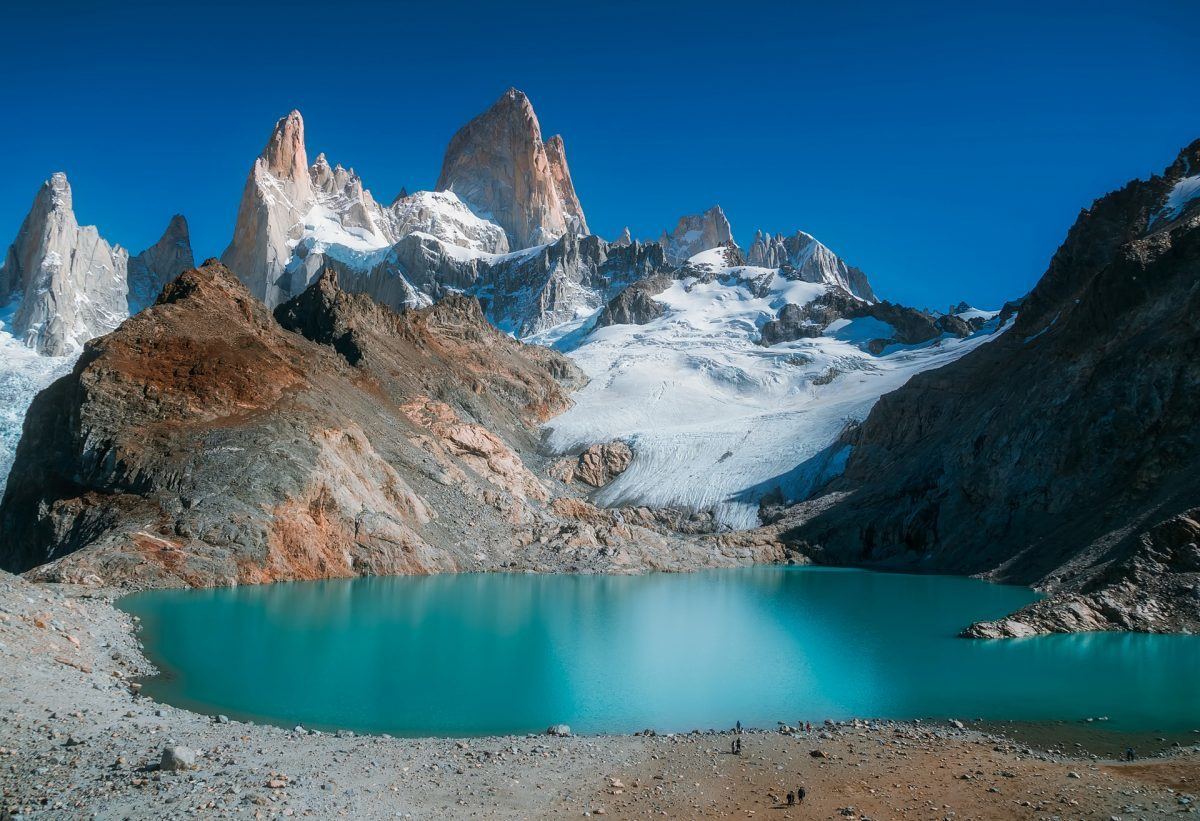
2. Party hard at Carnival
It’s the biggest party on the planet! Grab yo’ body paint, yo’ finest feathers, whatever else you can get your hands on, and join the festivities!
You won’t ever forget the time you spent Carnival in South America. The carnivals in Bahia, Rio, and Barranquilla are particularly good.
3. Explore the Salts Flats of Uyuni
It’s one of the most unique places on the planet and a highlight of any South America backpacking trip. Get ready to be wowed by this alien landscape.
I know broke backpackers usually cringe hard at the idea of an organised tour (because I’m one of them) but the Salt Flats is one that’s really worth shelling out for.
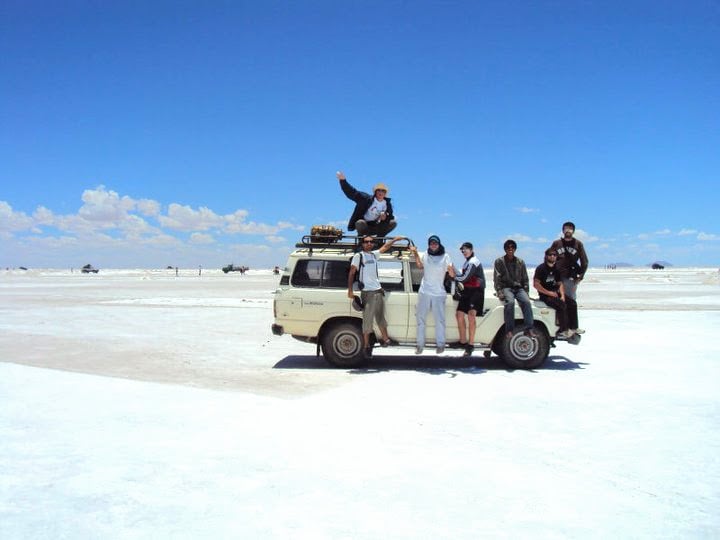
4. Find your own secret beaches
It wouldn’t be a proper backpacking South America itinerary without some beach time! Every kind of beach imaginable is found on the continent.
From tropical slices in Brazil to surfer’s paradises in Ecuador to even fjords in Chile, you won’t be lacking in choices. There are plenty of them secret spots that make those magical days. Take a beer, bring your mates, get busy.
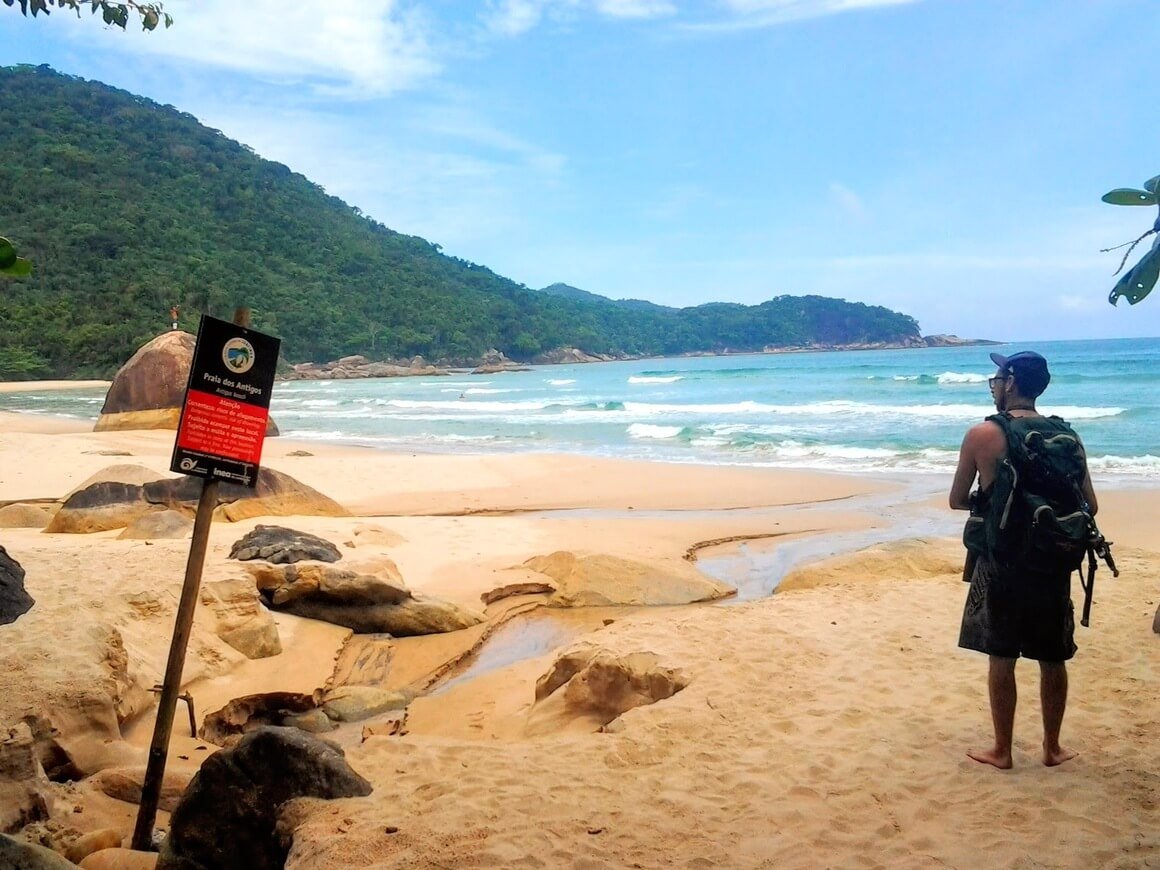
5. Check out Medellín
Medellín is one of the most popular cities to visit in South America right now. The choice between Medellín or Bogota has never been easier.
It’s fun, safe, comfortable, and (most impressively) completely different than it was before. Medellín has shed its violent past and is ready to host the next wave of backpackers.
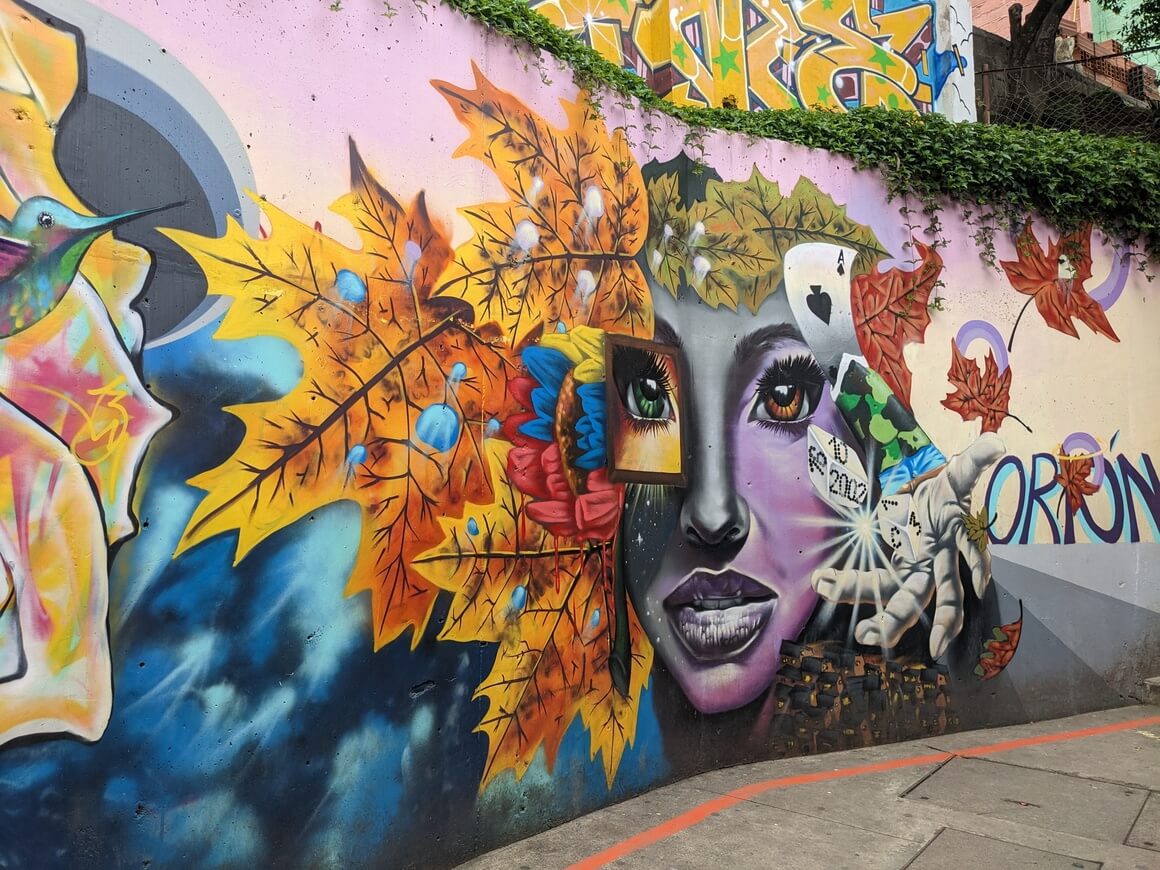
6. Visit Machu Picchu
I mean, you’re reading a backpacking South America guide: I know you already know about this one. It is the place that attracts most people to visit South America… but I’d be lying if I said it wasn’t worth visiting.
You can hike the Inca Trail like everyone else. But if you want to visit Machu Picchu in an alternative way, try one of the other Inca trails like Salkantay Trek.
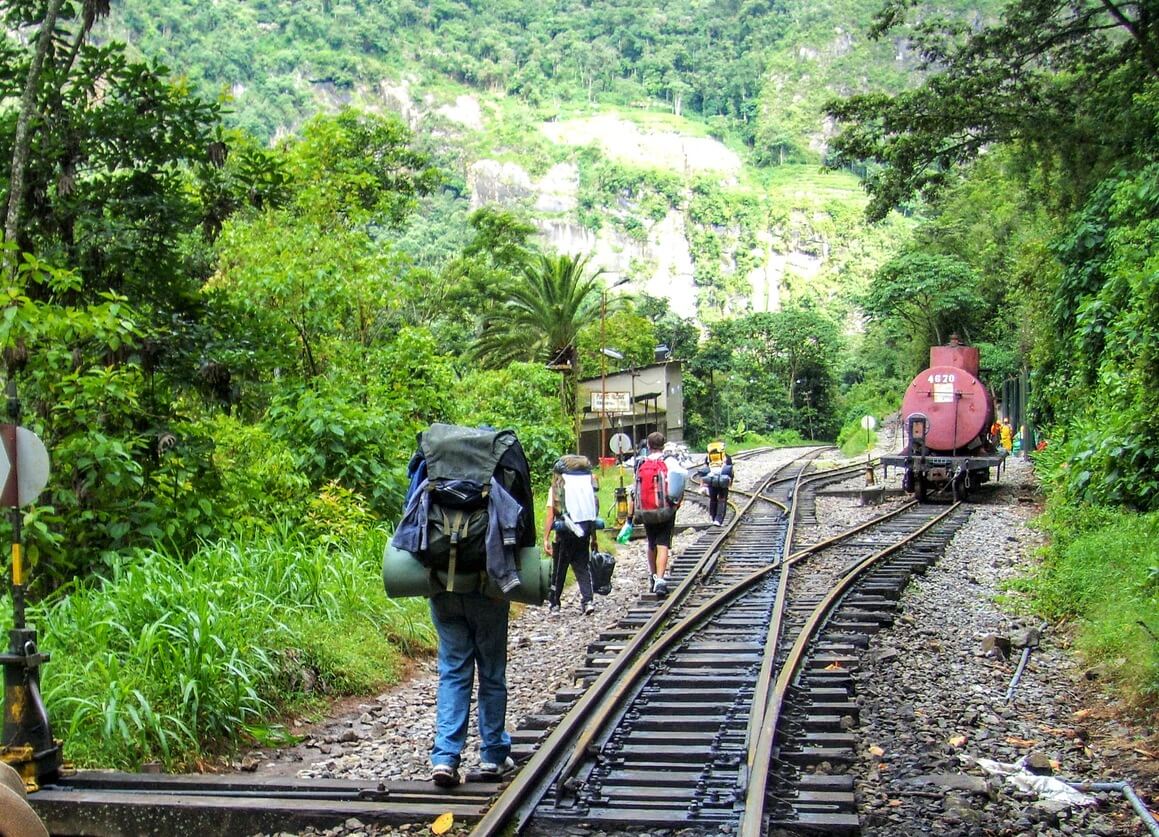
7. Hike in the Andes
The Andes are one of the greatest mountain chains in the world, known mostly for hosting the aforementioned Machu Picchu and the gargantuan Aconcagua. But there is more to these mountains than just these popular destinations: the highlands of Ecuador, Cordillera Huayhush in Peru, the Cordillera Real in Bolivia are all stunning. Even Colombia gets a slice of the pie at Cocuy National Park.
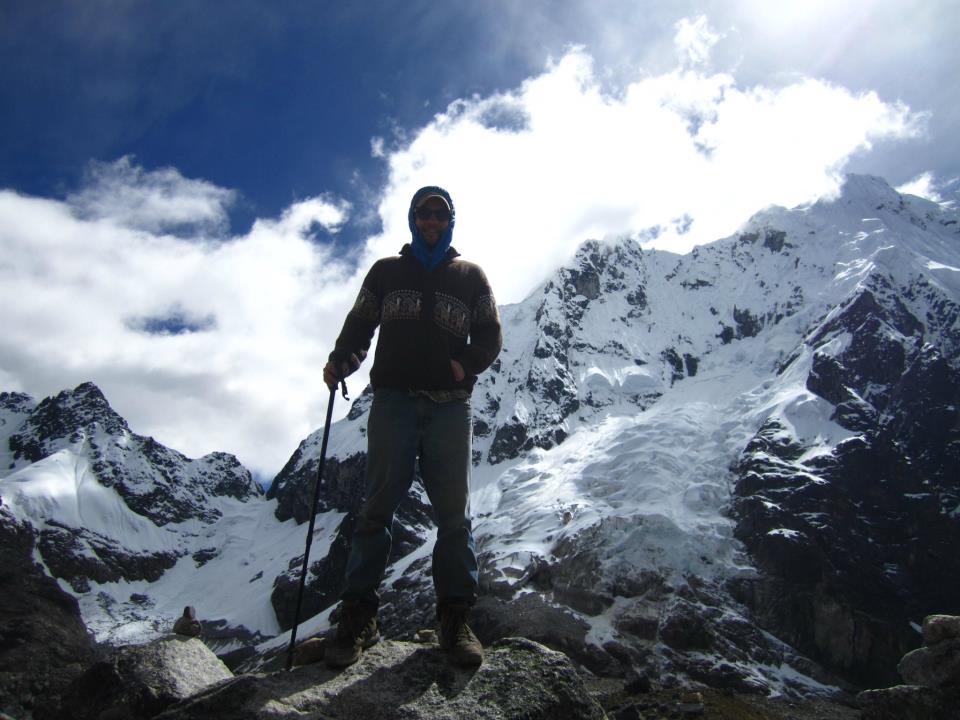
8. A South American
Hey, most backpackers will vouch for love and sex on the road being something memorable to take part in…
They love, and they love passionately. And the sex… well, maybe you’ll find out.
9. Get “stuck” somewhere
South America is full of sticky places AKA places where you get stuck for months on end. Florianópolis, La Paz, Medellín, Mancora… All of these locations start off as a simple stop on your South America backpacking route but turn into temporary homes.
Don’t fight it! Find your sticky place and stay awhile.

Wanna know how to pack like a pro? Well for a start you need the right gear….
These are packing cubes for the globetrotters and compression sacks for the real adventurers – these babies are a traveller’s best kept secret. They organise yo’ packing and minimise volume too so you can pack MORE.
Or, y’know… you can stick to just chucking it all in your backpack…
South America has a wide range of budget accommodation options for backpackers. Airbnbs are fantastic for private rooms if you’re travelling as a couple or as a group.
For solo travellers, when you are not passing the night from the comfort of your tent in the Andes or with a Couchsurfing host , you’ll likely be booking hostels.
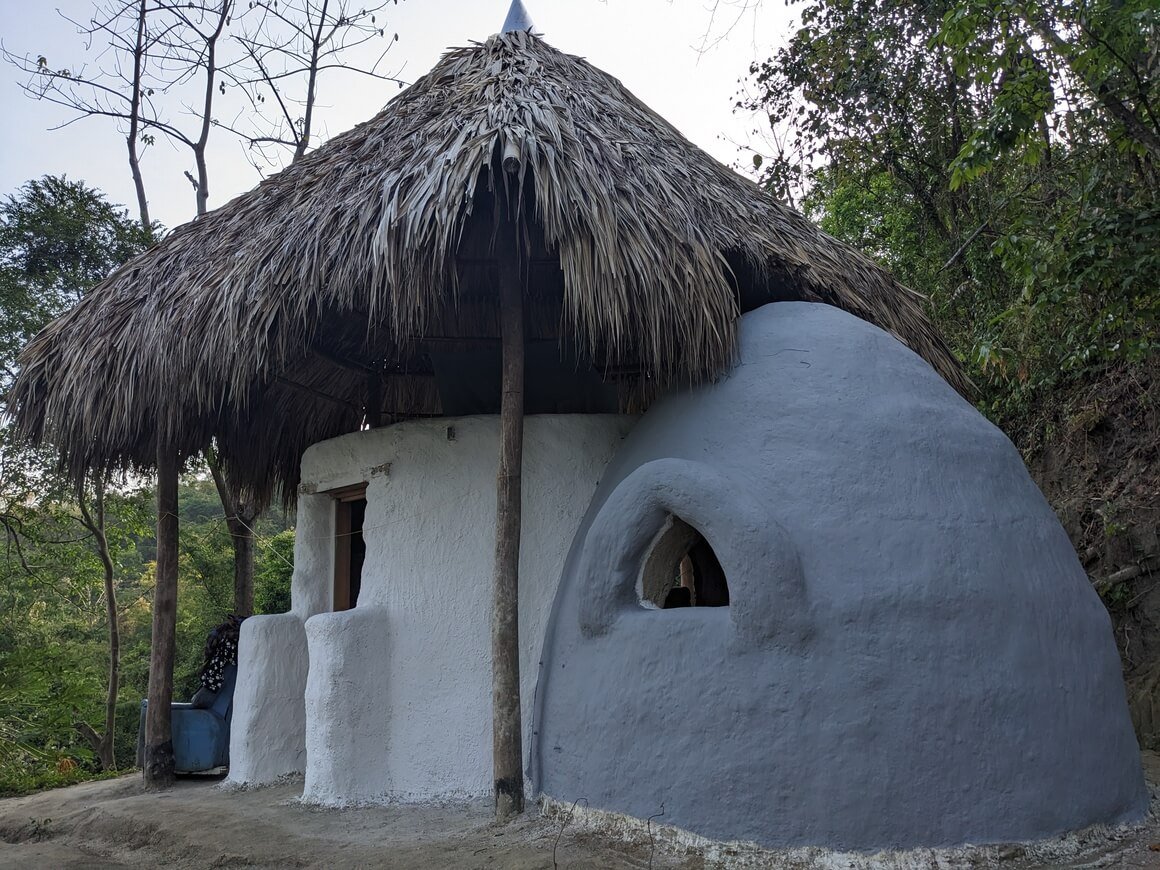
Whether you just need a place to lay your head or a spot to meet fellow backpackers like yourself, hostel life is clearly where it’s at… In fact, I love South American hostels, even travelling with my partner, you get perks in a hostel that you don’t get in a hotel or Airbnb.
I’ve had some of the best nights of my life in them and met some of the best people in my life. The South American countries are home to some of the best hostels in the world .
- Best Hostels in Sao Paulo
- Best Hostels in Cusco
- Best Hostels in Cartagena
- Best Hostels in Mendoza
- Best Hostels in Lima
- Best Hostels in Medellin
- Best Hostels in Quito
- Best Hostels in Salvador de Bahia
- Best Hostels in Santiago
- Best Hostels in Valparaiso
Insider tip: If you want to see all your hostel options to visitbackp South America, Booking.com is the perfect one-stop-shop to book hostels. You can even filter your personal travel needs to find the perfect place for you.
It is the common belief that backpacking in South America is dirt cheap. In some places this is true, but it doesn’t go for the entire continent.
But fear not! Travelling South America on a budget can definitely be done.
Due to the nature of Patagonia being one of the most remote areas on earth, expect higher travel costs than the rest of South America. Peru also takes some navigating in order to travel on a tight budget.
Brazil is one of the most expensive countries in South America. The cost of living in Brazil is higher and it is notorious for jacking up accommodation prices during the high season.
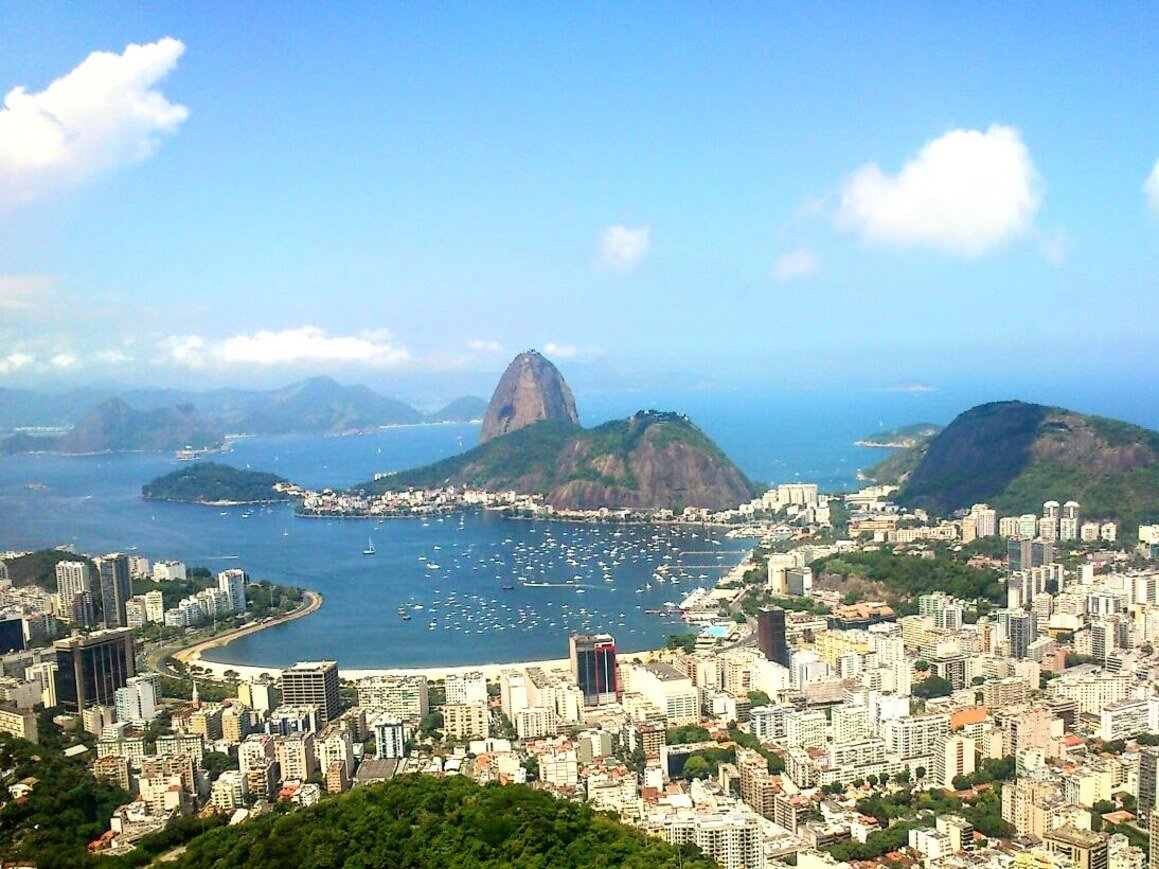
With a few travel tips up your sleeve, you will save a ton of money and have the time of your life. Bring your haggle game whilst backpacking through Latin America to ensure you get the best possible price for things, including accommodation. South Americans love smooth talkers so keep it playful but don’t get too cheeky.
Taking long-distance buses, buying beer and drugs, paying entrance fees to national parks… these things add up fast. But sometimes you have to shell out the dough in order to do the things you want. Overnight buses are a good way to save some money.
Remember to always leave a little extra wiggle room in your budget so you can go scuba diving or go on a trek that you have been dreaming about!
Daily Budgets for South America
Here is a breakdown of what you can expect to pay on a daily basis on a backpacking South America trip…
Travel Tips for Broke Backpackers in South America
Hey, all those dollaridoodles add up to more fun times. So saving whatever you can on your journey means you can be on the journey… for longer. So here are a few budget travel tips for South America :
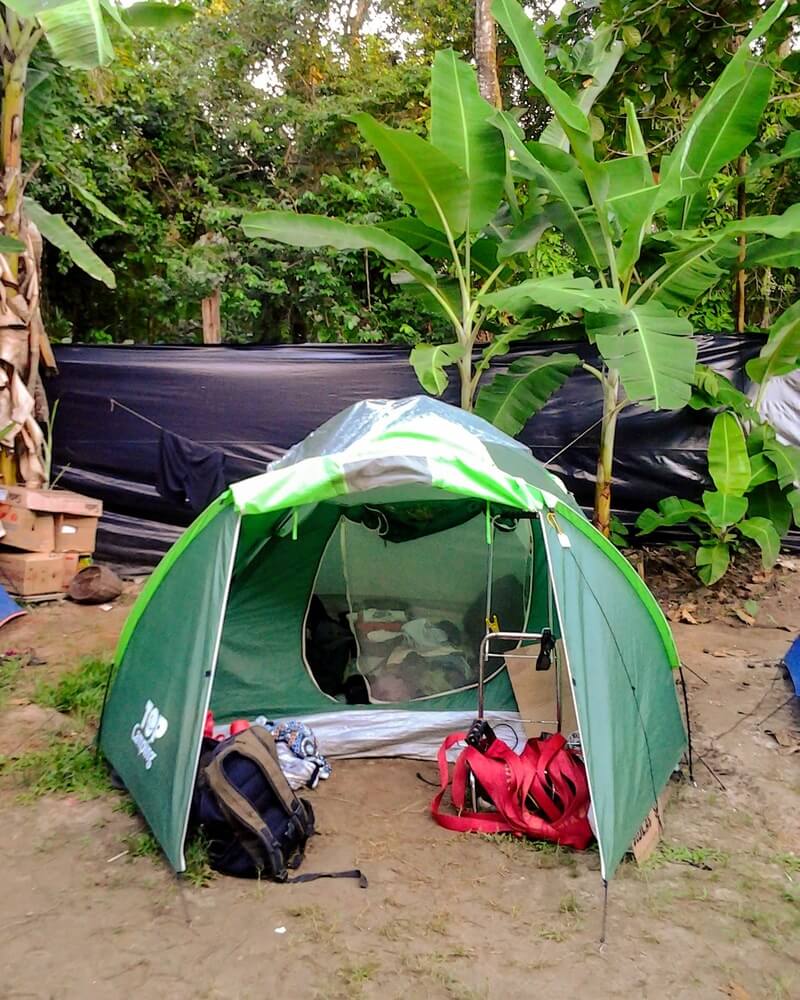
- Camp : With plenty of untouched beaches, forests, stunning countryside, and far-flung jungle, South America is a great place to carry a good backpacking tent . Camping saves you money and can help you get off of the beaten path.
- Cook your own food: Travel with a portable backpacking stove and cook your own food to save some serious cash whilst backpacking across South America. If you plan to do some overnight hiking trips or camping on the beach, having a backpacking stove will be a great asset.
- Haggle: Haggle as much as you can. You can always get a better price for things, especially while in local markets. Learning Spanish will go a long way!
- Couchsurf: South Americans are awesome. Get to know some! Check out Couchsurfing to make some real friendships and see the real continent. When using Couchsurfing, be sure to send personalized messages to your potential host. A generic copy-and-paste message is much more likely to get turned down. Make yourself stand out.
- Hitchhike: Although some countries are friendlier than others, hitchhiking across South America is common practice, so you won’t struggle too much to find a ride. Speaking at least a little Spanish will go a long way though. You want to explain exactly what you’re doing and where you want to go.
Why Should You Travel to South America with a Water Bottle?
Plastic washes up on even the most pristine places… So do your part and keep the Big Blue beautiful!
You aren’t going to save the world overnight, but together we CAN make a difference. I hope you become more inspired to continue being a responsible traveller .
Plus, now you won’t be buying overpriced bottles of water either! Travel with a filtered water bottle instead and never waste a cent nor a turtle’s life again.

Drink water from ANYWHERE. The Grayl Geopress is the worlds leading filtered water bottle protecting you from all manner of waterborne nasties.
Single-use plastic bottles are a MASSIVE threat to marine life. Be a part of the solution and travel with a filter water bottle. Save money and the environment!
We’ve tested the Geopress rigorously from the icy heights of Pakistan to the tropical jungles of Bali, and can confirm: it’s the best water bottle you’ll ever buy!
You know by now that we are talking about an enormous amount of land with regards to the South American continent. Countries in South America near the Equator do not experience distinct seasons. As you start to head south you will find the seasons to be the opposite of what they are in the Northern Hemisphere i.e. winter in June.
Patagonia experiences bitterly cold and windy winters. I do not advise travelling there during the winter unless you are a serious mountaineer and have all the right gear.
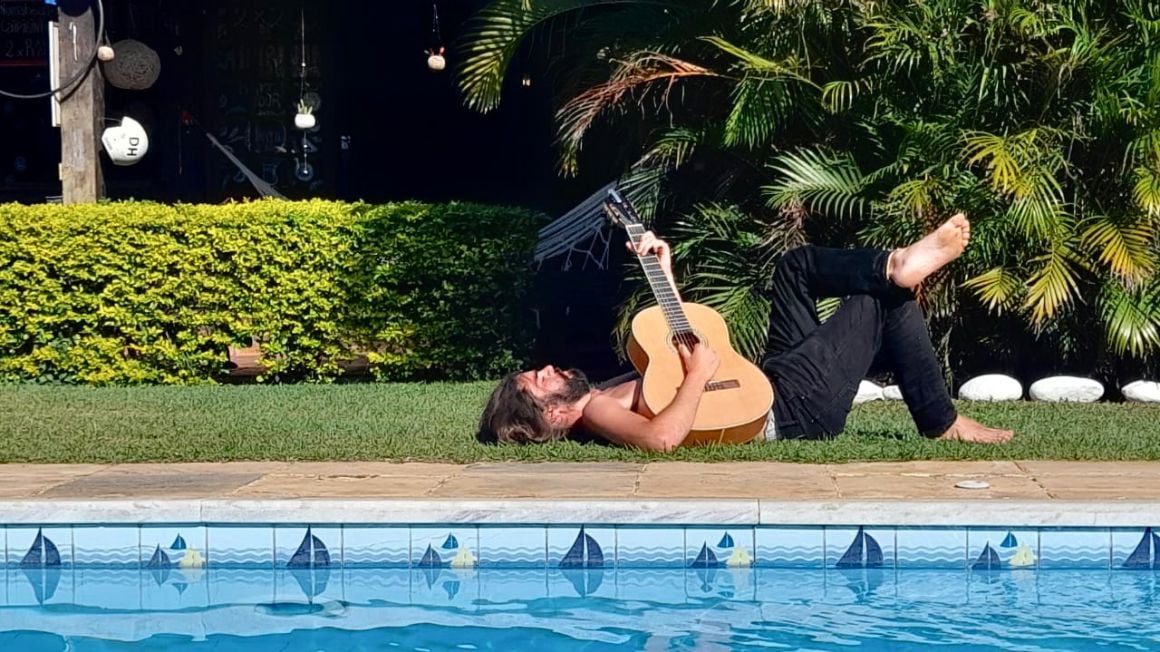
Dry season depends on the country. Generally, the cooler months from June to September are the driest in the coastal areas. In the Amazon – given that it is the world’s biggest rainforest – is wet pretty much all year. The Andes are the driest from April – November.
High season for all countries is, without a doubt, from December – February. This is due to holidays occurring over that time and it is also the time when many gringos and locals alike take their holidays. Backpacking in the low or shoulder seasons will definitely make for a cheaper trip, especially with regards to accommodation.
Best Time to Visit – Country Breakdown
Here are the best times to visit South America broken down by country!
Best Months to Travel: September – April
What’s the climate in Brazil like?
In the south, the hot, wet summer season runs from November – March. In the north, the rainy season is from April – August. In the Amazon, it rains pretty much all year.
If you want to visit during the festival season though, September-March is best.
Best Months to Travel: November – March
What’s the climate in Colombia like?
Generally speaking, travellers should visit Cartagena and the Caribbean coast between November and March when the weather is dry. The rest of the country is good year-round. Bogota, Cali, and Medellin are always pleasant weather-wise.
Best Months to Travel: March – May, September – November
What’s the climate in Ecuador and Peru like?
Lots and lots of micro-climates in the Ecuador Peru region. But there are some general trends:
- The highlands/Andes are dry from May – September. These are the best months for hiking and visiting Machu Picchu.
- The coast is warm and dry from December – May. This is the best time for the Galápagos.
- The Amazon is always wet and humid as shit.
- The south of Peru is much drier than the north, and Ecuador for that matter.
You’ll need to plan your trip carefully around what you want to see and do.
Best Months to Travel: May – October
What’s the climate in Bolivia like?
The winter season (May – October) is also its dry season, and the best time to visit Bolivia. This means that nights can be very cold, especially when you’re at higher altitudes. Although Bolivia is generally drier than its neighbours, it stills gets dumped on in the wet, summer season.
Best Months to Travel: March – April, October – November
What’s the climate in Chile like?
Summers in Chile are generally the high season. That being said, this may not be the best time to visit. Prices are at their highest, the Atacama Desert is a furnace, and the winds are VERY strong in Patagonia.
Like almost anywhere, the shoulder months (October – November & March – April) are better.
Best Months to Travel: October – April.
What’s the climate in Argentina and Uruguay like?
Summer for most of the country is from December – February. In the north, the summers can see rain and temperatures that soar to almost unbearable. In the south and Patagonia, summers are dry(ish) and pleasant.
The winters, obviously, are extremely cold in the south. Whereas the north generally has pretty mild winters.
What to Pack for South America
Travelling through South America is a lot easier if you have the right gear. A thorough backpacking South America packing list goes a long way – literally.
On every adventure, there are 6 things I never go travelling without:

Snoring dorm-mates can ruin your nights rest and seriously damage the hostel experience. This is why I always travel with a pack of decent ear plugs.

Hanging Laundry Bag
Trust us, this is an absolute game changer. Super compact, a hanging mesh laundry bag stops your dirty clothes from stinking, you don’t know how much you need one of these… so just get it, thank us later.

Sea To Summit Micro Towel
Hostel towels are scummy and take forever to dry. Microfibre towels dry quickly, are compact, lightweight, and can be used as a blanket or yoga mat if need be.

Monopoly Deal
Forget about Poker! Monopoly Deal is the single best travel card game that we have ever played. Works with 2-5 players and guarantees happy days.

Grayl Geopress Water Bottle
Always travel with a water bottle! They save you money and reduce your plastic footprint on our planet. The Grayl Geopress acts as a purifier AND temperature regulator. Boom!
South America IS a safe place to go backpacking. Is backpacking in South America safe all the time?
Hell no. But nowhere in the world is safe 100% of the time. Does that mean we let it stop us?
Hell no.
In recent years, security in South America is increasing. Using the common sense safety rules of backpacking is usually enough here.
The thing with South America is understanding your surroundings and self-awareness. Coordinating your safety in Rio de Janeiro is completely different than hiking the Inca Trail.
Robberies are rare and could happen to anyone – in any country. Sometimes people in desperate circumstances are forced to do bad things. They see a foreigner and they see a chance to temporarily relieve the stress of their situation.
Odds are, you should be just fine. If ever you run into a hold-up situation just give them what they want.
Your iPhone and wallet aren’t worth dying over, ever! But it’s worth hiding your money well just in case .
Political wobbles are pretty common. Due to the political situation in Venezuela right now, this is probably the most dangerous country in Latin America. I hate to say it but the situation is what it is.
In general, being out late, drunk, and/or alone is a recipe for trouble. Always take a taxi home at night, even in a group.
Do know which neighbourhoods you should avoid too, especially in major cities – even during the daytime. Ask the locals which these are. There’s no real reason to head into these areas anyway, but it’s worth noting so you don’t stumble into the wrong places.
- Is Peru Safe?
- Is Argentina Safe?
- Is Chile Safe?
- Is Brazil Safe?
Sex, Drugs, and Rock n’ Roll in South America
South Americans love to party! They start the party late and they don’t stop until the sun is way up.
Of course, Brazil is very famous for Carnival AKA the biggest party on the planet . But it’s a big deal in most South American countries – so you’ll find great parties everywhere.
The backpacker circuit is notoriously rowdy. Traveller hubs like Cusco, Buenos Aires, Montañita, Mancora, La Paz, and Medellín are legendary for their nightlife.
It is very easy to meet people, stay up all night, and fall in love with a sexy South American. Much of the continent is LGBTQ+ traveller friendly too!

Alcohol is freely available, freely consumed, and good quality too. I’m telling you, I’ve had beer in South America which puts Germany to shame.
South America is stoner-friendly too! Weed is legal or decriminalized for recreational use in many places – some countries are more relaxed than others. It’s best to ask the locals how it’s currently being handled where you are.
Cocaine is just about everywhere; particularly in Colombia, Peru, and Bolivia. But be aware, this isn’t the stuff you find back home – it’s much purer. One line is enough to keep you up all night.
To find drugs on the road, just ask a local to help you. Don’t go out alone looking to score in strange places and don’t give cops a reason to shake you down.
Ayahuasca retreats are gaining popularity as well. But remember, it is a ceremonial spiritual medicine of indigenous people. If you do want to try it, make sure you’re doing it with a real shaman, for real reasons; it’s not like acid and not a drug just to get mindless with.
Staying Healthy in South America
Travellers should be properly vaccinated before backpacking in South America. Consult a medical professional before travelling about which shots you should get.
You should have all the usual travel vaccinations before heading out: hepatitis A & B, typhoid, tetanus, etc. Rabies is also recommended particularly if you’re going to the rural areas or parts of the jungle. You don’t want to mess around with that one because it can be really nasty.
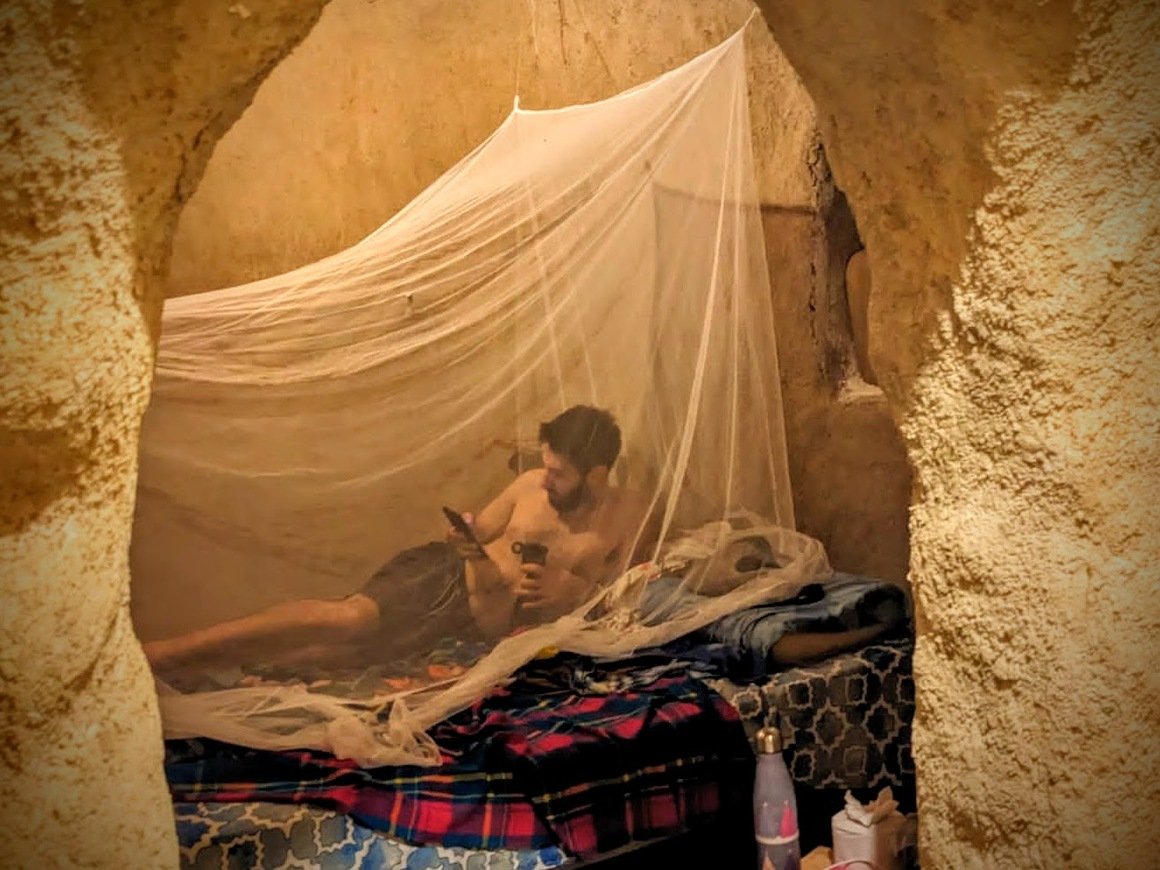
It is worth checking if you need the Yellow fever vaccine before entering some countries. In some places, it is only recommended.
It’s also worth noting that in most places in South America, the water isn’t fit for consumption. The best travel water bottles have a filter.
Getting Insured BEFORE Visiting South America
Travelling without insurance in South America is risky. I broke my back in Brazil and will be happy to tell you why GOOD travel insurance is so important.
So consider getting travel insurance sorted before you head off on an adventure. You don’t want to be struck with a big, unexpected bill, or, worse, to put your health at risk.
ALWAYS sort out your backpacker insurance before your trip. There’s plenty to choose from in that department, but a good place to start is Safety Wing .
They offer month-to-month payments, no lock-in contracts, and require absolutely no itineraries: that’s the exact kind of insurance long-term travellers and digital nomads need.

SafetyWing is cheap, easy, and admin-free: just sign up lickety-split so you can get back to it!
Click the button below to learn more about SafetyWing’s setup or read our insider review for the full tasty scoop.
Where you will start your trip will be determined by what backpacking route you have chosen. Obviously, if you plan to tackle a specific country, the capital city of that country is a popular starting point and – usually – the logical option.
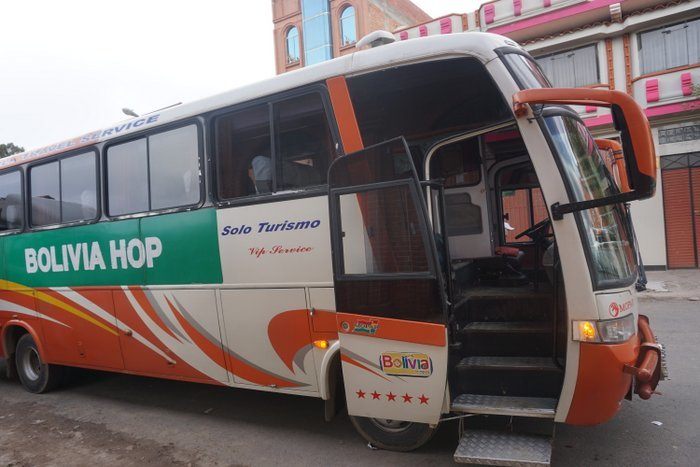
South America is not the cheapest country to fly to, but you can sometimes bag a cheap direct flight from another major airport. It’s pretty expensive to fly within it too. Unless you are coming by boat to Colombia via the San Blas Islands, you will certainly be arriving by plane.
São Paulo, Lima, Buenos Aires, Santiago, and Rio de Janeiro are all major hubs for South America. Compare the prices between these top destinations, and base your South America itinerary from there.
Entry Requirements for South America
Good news everyone! Most South American nations DO NOT require a visa to visit! This applies to those travelling from the USA, UK, EU, Australia, and most other Western nations.
This is a positive trend in the last few years. A few years ago, travellers sometimes had to apply for (expensive) visas to enter countries like Argentina and Brazil. Luckily, this is no longer the case .
Once you’ve entered the country, you can remain for a period of 90 days visa-free. Extensions are possible but these vary on a country-by-country basis. Most South American governments do not take kindly to people who overstay.
Of course, ALWAYS double-check visa policies before travelling .
City Bus. Local Bus. Long-distance bus. Overnight bus.
That’s right. Buses are the most economical way of getting around South America. Every major capital has buses going to the far reaches of the country.
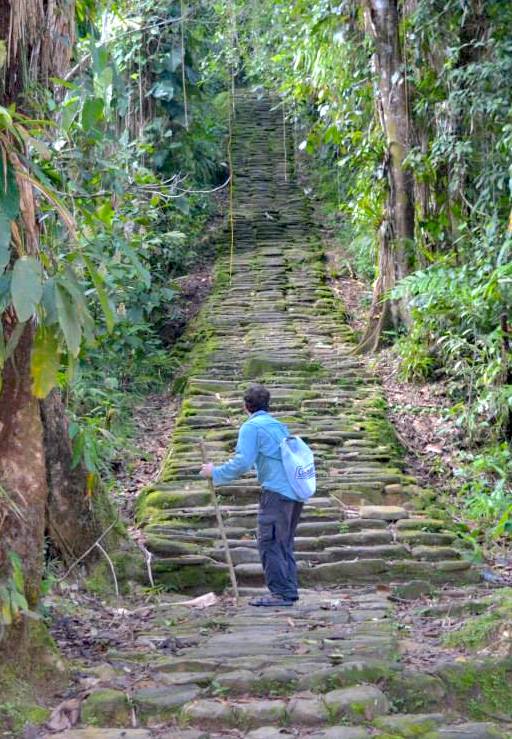
Local buses are typically super cheap. You can book online but the bus stations are organised really well too.
Taxis are an option within cities and sometimes Uber too, depending on the city. If you opt for a taxi ride, make sure they are legit, set the price beforehand, and haggle the shit out of the driver without being rude.
Flights between countries in South America can be expensive. Internal flights within the country aren’t the cheapest either, though they are cheaper if you buy them while you’re inside the country (you’ll save money on taxes).
As a general rule when backpacking, cheap travel is slow travel . Buses can be slow but as you will be taking many if you are backpacking South America long term, you want to go for the cheapest option.
If you want to go full Che Guevara style you can travel by motorbike pretty easily (and cheaply) in most places in South America. I recommend that you have some experience riding motorbikes before you even think about sauntering into a capital city or down a winding road in the Andes. If you do go the motorcycle route you can be sure that it will be the ride of your life.
Hitchhiking in South America
Travelling by hitchhiking is always an option. Your success will greatly depend on the area and the country; I wouldn’t recommend hitchhiking in a major city or at night.
Hitchhikers aren’t that common in countries like Colombia, mainly due to paranoia about the security situation in the country. Not everyone here is a drug lord that wants to kidnap you for ransom money. You can hitchhike throughout Colombia AND it’s such an awesome experience!
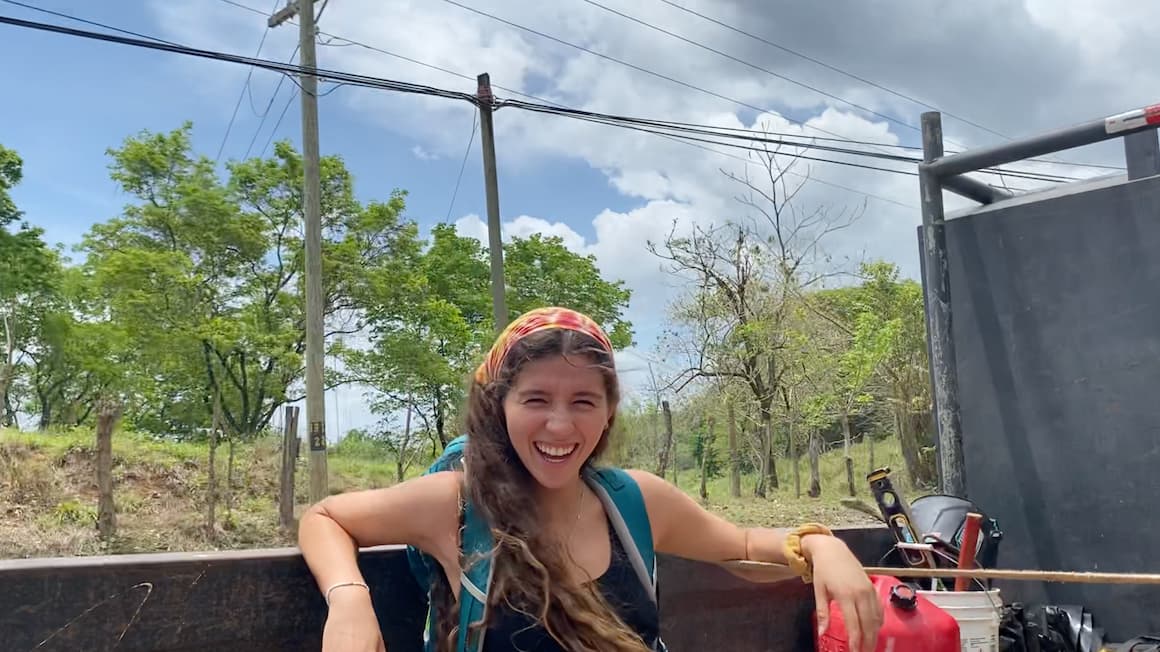
Rural areas of South America are especially impacted by high rates of poverty. Expecting free rides from folks with limited means isn’t morally fantastic. That said, even if you offer the driver a few bucks, it could very well end up being cheaper (and more rewarding) than taking the bus.
I would never assume that the ride is free initially. Always ask to avoid having an awkward scenario in which the driver who picked you up is demanding an unexpected fee. This is when learning Spanish comes in very handy.
Onwards Travel From South America
Your only options for leaving the continent are by boat or by plane. Most likely you will fly out of the country where you are finishing your trip if it makes sense and is the cheapest option. Try to book your flights in advance in order to find the best flight deals .
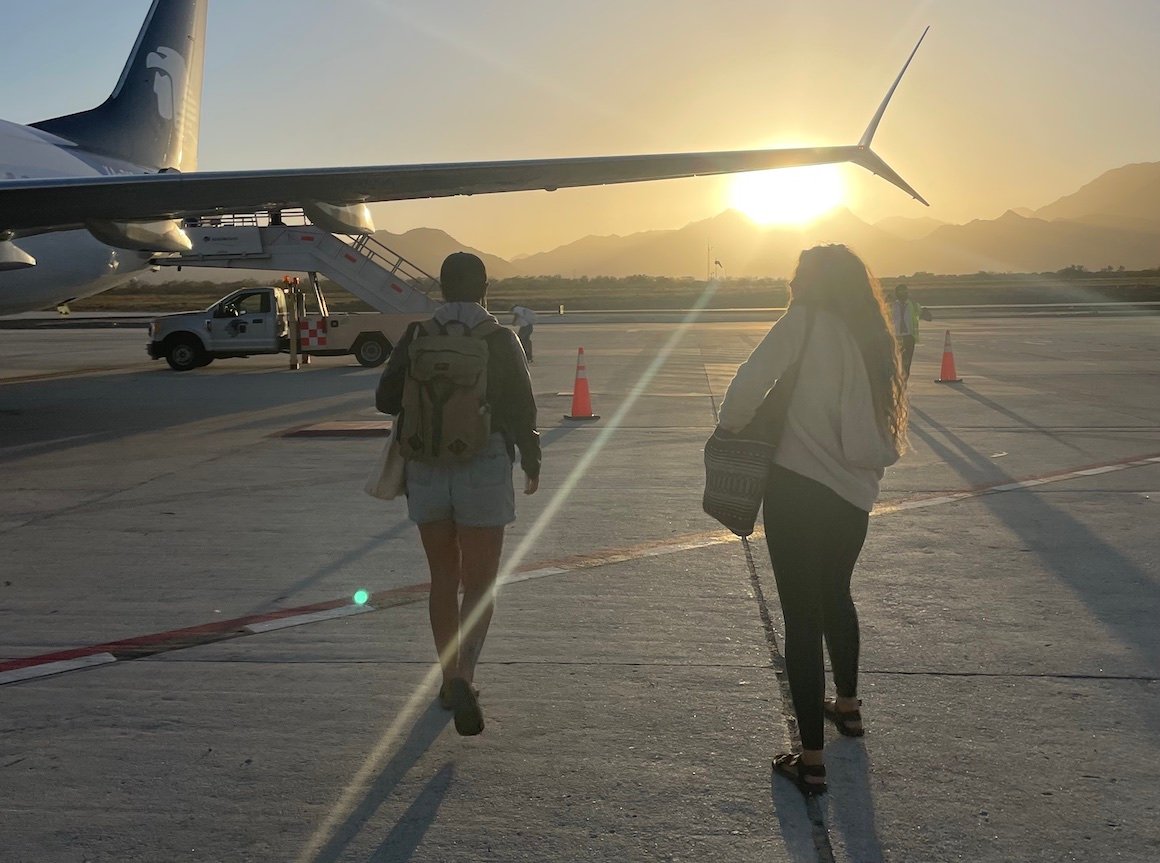
It is technically possible to cross the Darien Gap to Panama overland. Rumour has it that you can hire a guide for quite a bit of money and cross the Darien on foot.
In the past, this was impossible though due to narco-terrorist/guerrilla activity. May the Gods of Backpacking be with you if you attempt the journey on your own without a guide.
South America is becoming a digital nomad hub. After the pandemic, the boom really: a generally low cost of living, relatively reliable internet, and tons of expat communities.
Medellín is the current front-runner. This city is growing at a RAPID pace and is becoming the apple in every backpacker’s eye.
Plus, Medellín is safer than ever. Lots of people want to stay here for an extended period of time, digital nomads included.
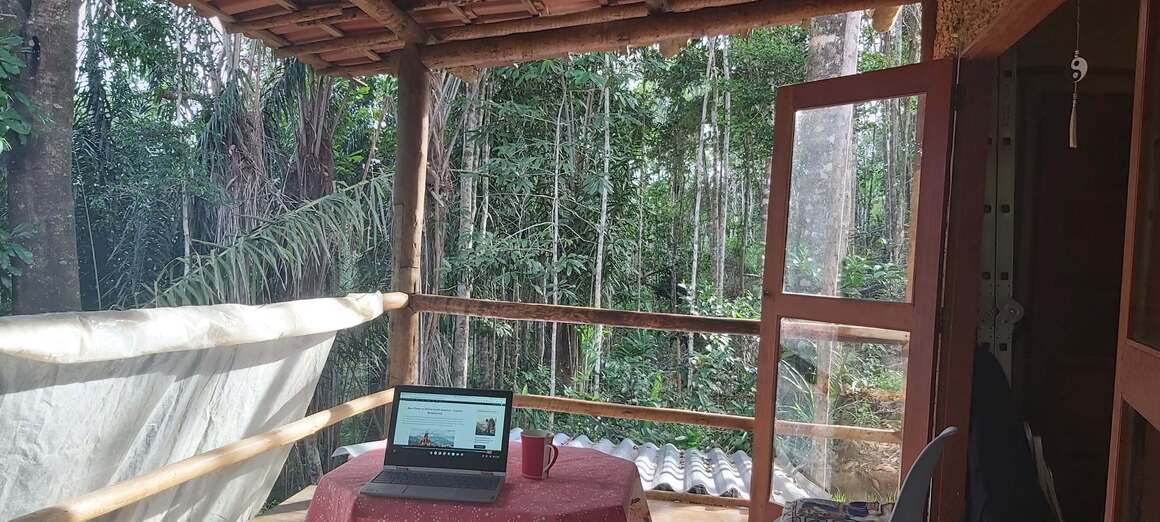
Close behind are larger South American cities like Buenos Aires, São Paulo, and Quito. Being big cities though, you’ll have to overcome higher prices and crime. Safety in Buenos Aires can be sketchy but so can every massive city, right?
Note that, at the moment, most South American countries do not offer a special digital nomad visa.

A new country, a new contract, a new piece of plastic – booooring. Instead, buy an eSIM!
An eSIM works just like an app: you buy it, you download it, and BOOM! You’re connected the minute you land. It’s that easy.
Is your phone eSIM ready? Read about how e-Sims work or click below to see one of the top eSIM providers on the market and ditch the plastic .
Teaching English in South America
Most people who end up living or staying long-term in South America do one of two things: teach English or volunteer.
Teaching English in South America is very popular. Some people make a living out of just going from one city to the next city and hitting up all the English schools in between. Some are accredited though many find success using their own merits.
If you have a TEFL certificate it will be much easier to score teaching gigs in South America. I recommend getting yours with MyTEFL – Broke Backpacker readers get a 50% discount on TEFL courses when you enter the code PACK50 at the checkout.
Volunteering in South America
Volunteering abroad is a great way to experience a culture whilst doing some good. There are loads of volunteering gigs in South America ranging from protecting the Amazon to teaching in barrios of Buenos Aires.
Arguably, you may need a permit in order to volunteer. But in reality, the continent is pretty chill and this is unlikely to ever be enforced.
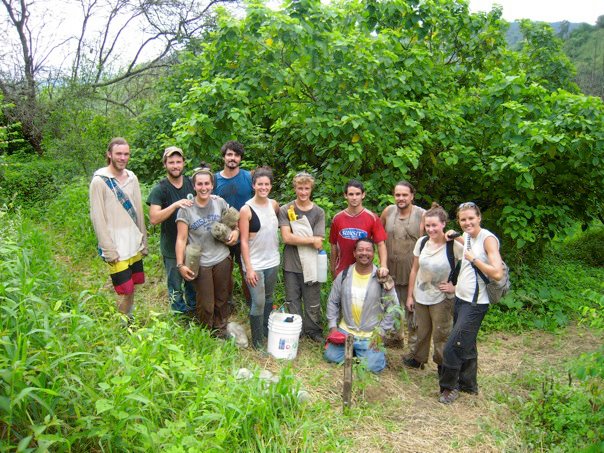
I spent a few weeks volunteering in the mountains in Northern Colombia and it was the best way to get to know the land, people, and lifestyle. Finding volunteering opportunities in South America is about learning, building community, and making an impact in a place you visit.
The best way to find volunteer jobs is word of a trustworthy mouth. But programs run through reputable work exchange programs like Worldpackers , Workaway , and WWOOF help you get your foot in the door of volunteer communities.
They’re a great opportunity for unique experiences and make amazing connections with people. But you do have to stay vigilant, especially when working with animals or children.
If you sign up for Worldpackers with a discount code, memberships are only $39 a year. For that price, it’s often worth giving it a try.
Summing up food in South America is like trying to explain what music is. It’s incredibly diverse and every country, every region, every household has a different definition.
First of all, meat is hard to avoid. They like it juicy, tender, slow-cooked, and accompanying pretty much everything. Especially in the southern part of the continent, Argentina, Uruguay, and South Brazil, the smell of cooking cow is heavy in the air.
The Argentinian way of grilling is Asado . And it’s not just a delicious barbecue – oh no – that’s just the centrepiece. The event is a huge part of the culture.
The vegetarian movement is gaining momentum, though it’s harder in some places than others. In more rural places, you may go hungry if you don’t want to eat meat now and again, but in general, it’s not impossible.
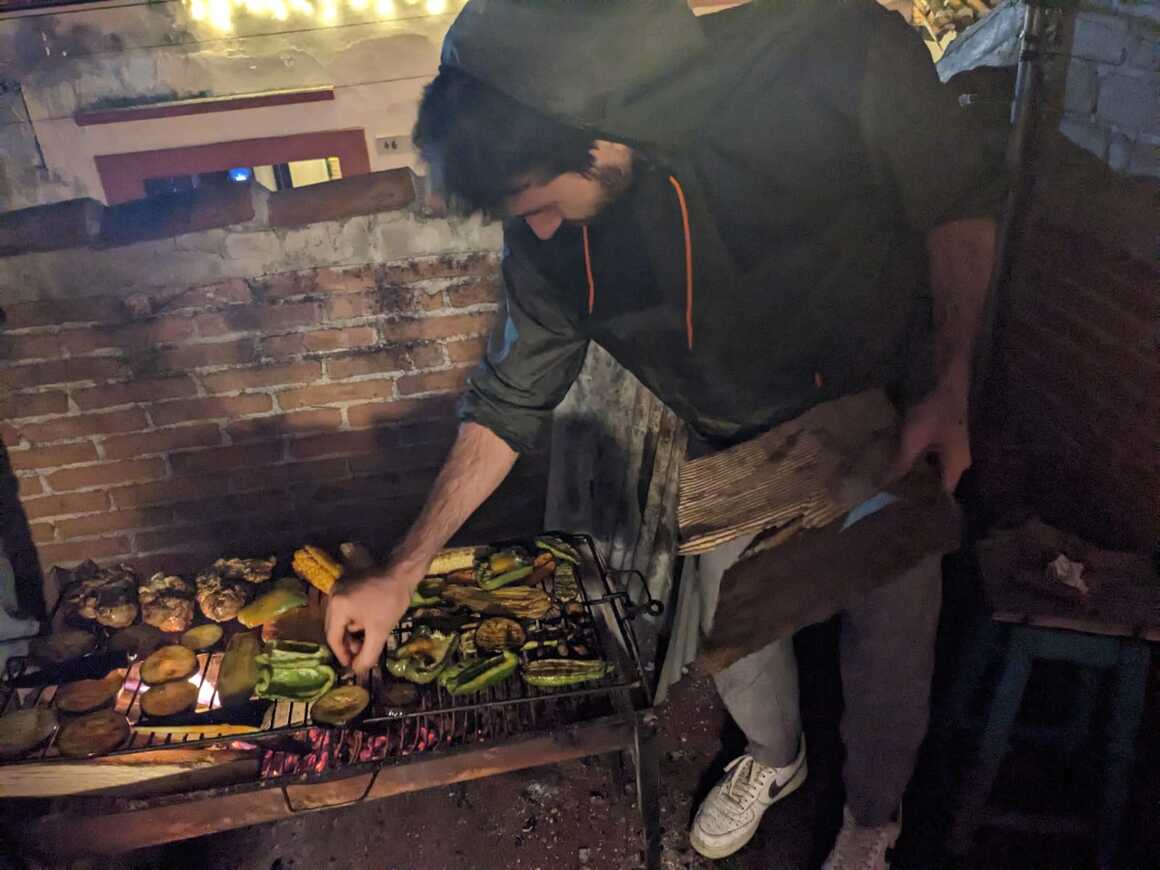
Andean countries like Peru and Bolivia have chronically underrated food scenes. In fact, Peruvian food is often regarded as some of the best in the world. You’ve never felt fresher than after chowing down that ceviche.
In the Amazon, they have a whole different gastronomic world; obviously, everything grows here. There are ingredients that come from the Amazon that just don’t exist anywhere else.
There are strange fruit and vegetables in abundance. Then, of course, the fresh fish comes leaping out of the river, almost directly to your plate. Catching your own fish is never a bad idea either.
The food in the north of South America, like Colombia and Venezuela, is the definition of comfort food. If you’re eating right, you’re going to be gaining a few kilos. Don’t pass on an opportunity to gorge yourself silly.
Street food usually involves lots of deep-fried goodness. But it’s the abuelas that make the best pastries, with oodles of love. And ooh, those arepas… they have a special place on my plate.
The Best Food in South America
Here are some of the best South American foods that you definitely shouldn’t miss out on.
- Feijão (Brazil) – Beany stew for everyday eating.
- Acai (Brazil) – Superfood berry.
- Empanadas – Your trusty stuffed pastry friend.
- Dulce de leche – Just try it… thank me later.
- Asado (Argentina) – Grilled meat with a side of meat.
- Antichucho (Bolivia) – Mmmm… cow’s heart.
- Ceviche (Peru/Chile) – raw but not raw fish, in lemon juice.
- Cuy (Peru) – A large cooked guinea pig.
- Encebollado (Ecuador) – Ecuadorian Grandma’s comfort stew.
- Arepas (Colombia) – Corn pockets to fill your hungry belly.
South America is a very complex continent. Colonization by Western Europeans technically makes it the youngest member of modern civilization. But saying this disregards all the history that came before the “ conquistadors” arrived.
South America has hosted many advanced civilizations like the Incan Empire, whose influence still lasts to this day. Though much of the native culture was lost with the mass killing by said conquistadors .
Long story short: South America is an enormously diverse region, maybe more so than anywhere else. Yes, European culture has largely shaped the entire continent. But indigenous and African cultures are just as important, if not more so.
Northern Brazil is very Afrocentric. This was the first charted part of the continent and ideal for rowing sugarcane. Consequently, it’s the place where all the slaves were brought.
Slavery is over. But it leaves behind a blend of African customs and cultures morphed into Latino culture.
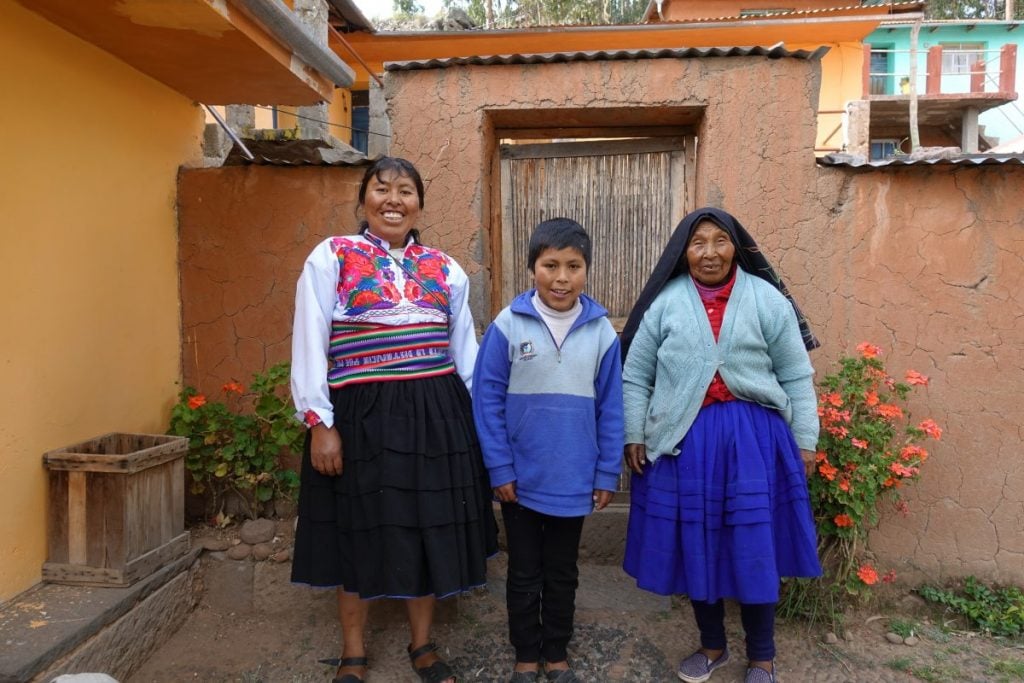
The south, which constitutes Argentina, Chile, and Southern Brazil, is much more European. Aside from the big players – the Spanish and Portuguese – Italians, Germans, and French all settled here following a huge era of migration.
In the Andean countries of Bolivia, Peru, and Ecuador you see a lot of indigenous cultures. Some people still live like their ancestors, living in the highlands and tending the land. Though Spanish is still the dominant language, several local languages, like Quecha and Aymara, are still commonly spoken.
Don’t make the mistake of thinking that all of South America is just an extension of Europe or North America. You’ll miss out on the beautiful subtleties of the region, which make backpacking in South America so wonderful.
A backpacking trip in South America is a unique experience in itself. And within that, there are instance amounts of opportunities to make your South America itinerary different to anyone else who’s travelled here before. Here are some of the best things to add to it:

Things go wrong on the road ALL THE TIME. Be prepared for what life throws at you.
Buy an AMK Travel Medical Kit before you head out on your next adventure – don’t be daft!
Hiking in South America
South America has some of the best hikes in the world . Here are a few iconic options to get your bucket list started:
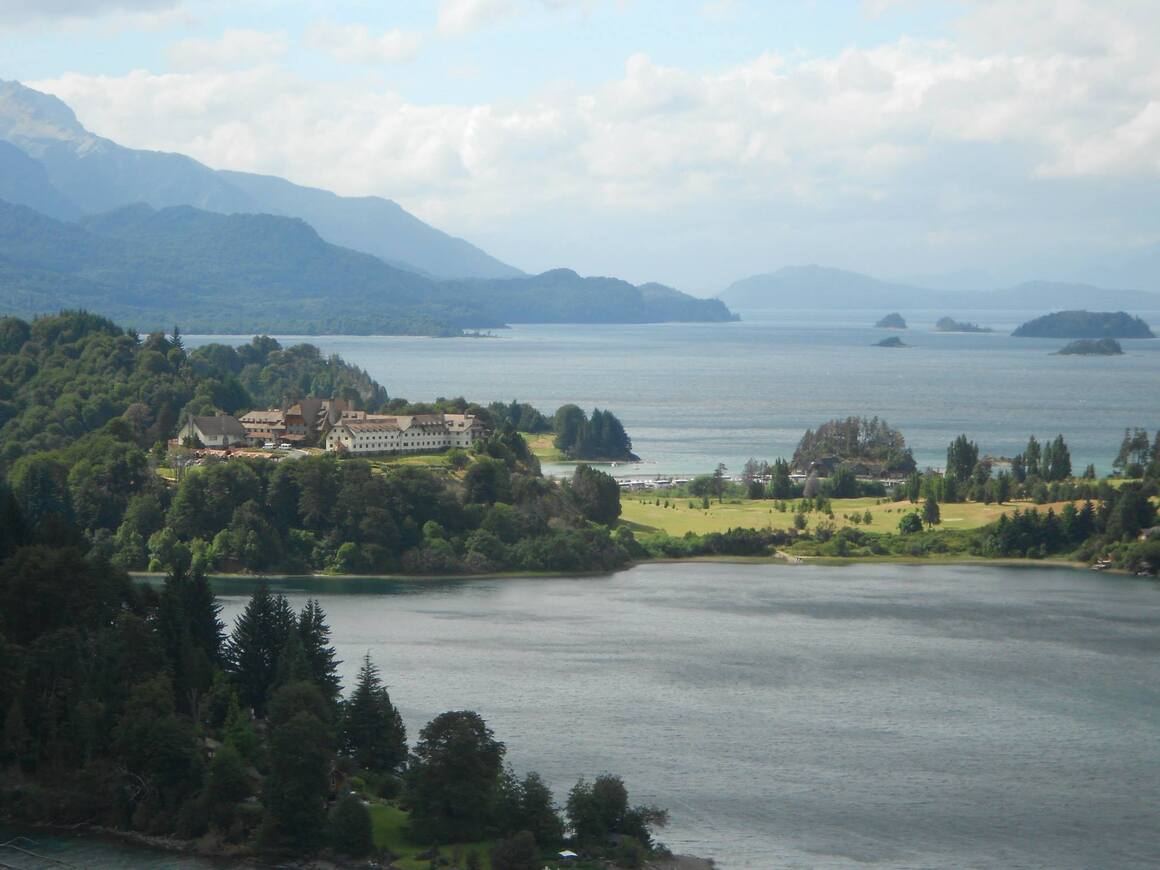
- Lost City Hike, Colombia : This hike through the Colombian jungle will certainly be a highlight of your South America travel.
- Sierra Nevada de Cocuy, Colombia : Snow in Colombia? Here you can find peaks are as high as 5,330 meters above sea level. If you have your own gear and a good sleeping bag , you can probably do the hike without a guide.
- Iliniza-Norte, Ecuador . This is a fantastic 2-day trek that does not require any special gear or equipment. If you are planning to tackle Cotopaxi this is a great warm-up. A solid challenge for the dedicated hiker!
- The Salkantay trek, Peru: Hike to Machu Picchu over 4 days and experience the true beauty of the Andes along the way. One of my favorite South American treks for sure.
- The Cordillera Huayhuash, Peru : Truly one of the most stunning areas in Peru. For serious hikers, planning a trek like this is one for the books!
- Hut-to-Hut in Bariloche, Argentina: Spectacular hike for some of the best views of Nahuel Huapi National Park and its lakes. Tents are optional since you can stay exclusively in the refugios.
- Villa O’Higgins to El Chaltén, Chile/Argentina : One of the greatest ways to experience Patagonia. Walk from Villa O’Higgins in Chile to El Chaltén in Argentina. You’ll see some superlative mountain, forest, and lake scenery along the way.
- Torres Del Paine Circuit, Chile : The hike of all hikes in South America. This epic walk takes 9 – 11 days and passes through some of the most dramatic landscapes one can fathom. A must if you’ve got the time and hiking spirit!
Scuba Diving in South America
You have scuba diving options galore in South America! In general, scuba diving is pricier than it is in other parts of the world but that’s because it’s worth it. If it is something that you really want to do, I say go for it!
Colombia is probably the cheapest and best place to dive AND get certified in South America. You have Providencia and Santa Catalina (a smaller island to the north) which is home to the third-largest coral reef barrier on Earth and includes over 40 dive sites.
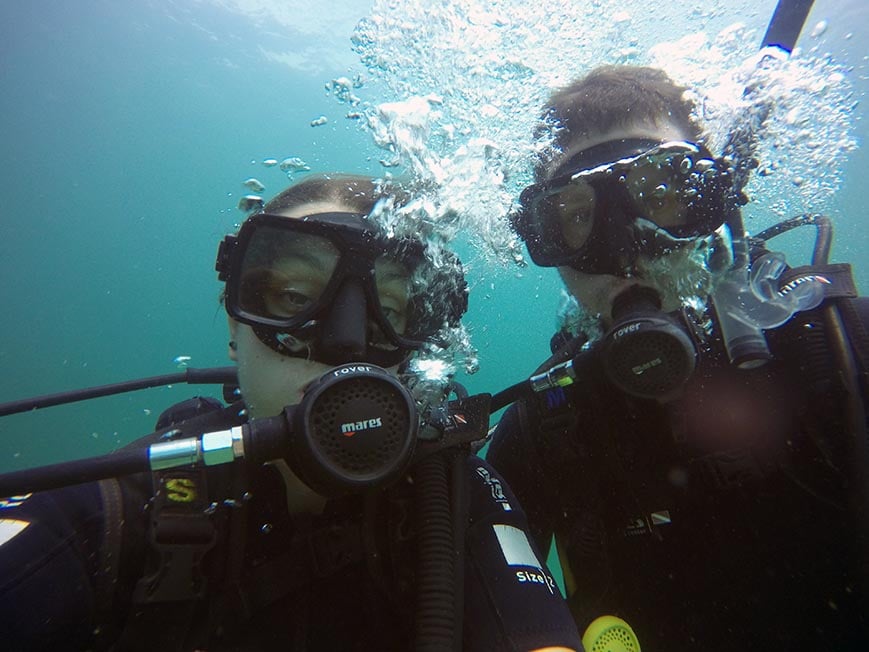
Malpelo is the harder-to-reach version: a jagged rock in the Colombian Pacific, it can only be reached by boat, and divers can only visit here as part of an organized trip. It’s worth the time and money for sure; Malpelo is one of the best places in the world to dive with sharks, including hammerheads, whale, and the rare sun ray shark.
People have reported schools of up to 500 sharks around Malpelo. That’s right. 500!
Peru and Ecuador both have some decent diving right off their coasts. The diving around the Galápagos Islands is world-class, but it will cost you a fortune go diving there.
If you truly want to have the scuba diving adventure of a lifetime, I highly recommend joining a Liveaboard trip.
- Liveaboard the Galapagos
- Liveaboard Colombia
Surfing in South America
Surfing is the number one sport on South America’s coast. From Peru to Brazil, backpackers and locals are coming together and shredding!
Peru is home to the longest left-breaking wave in the world . You can literally ride a wave for five minutes!
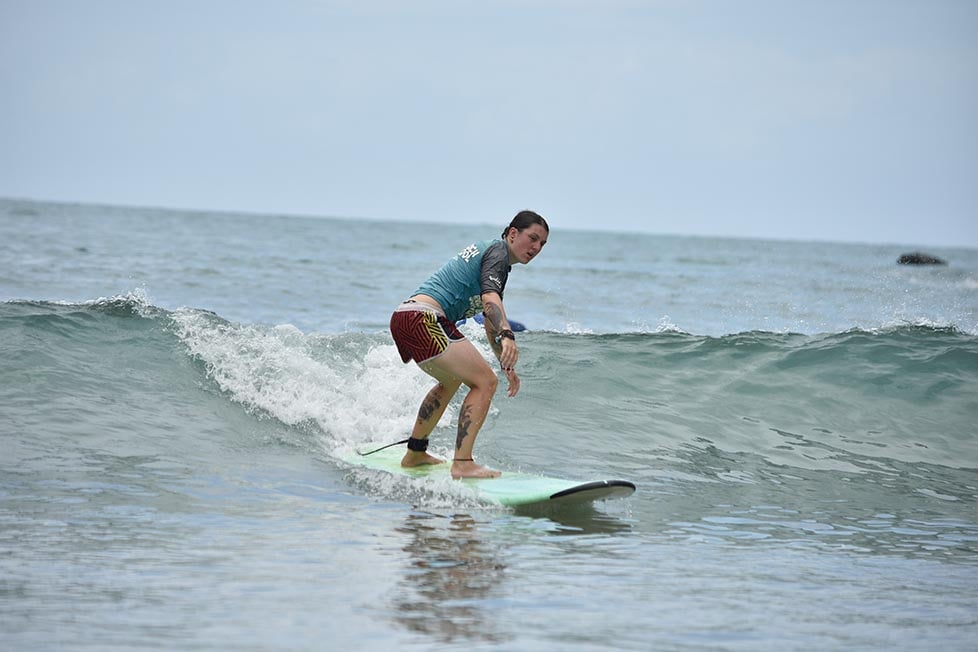
The Pacific Coast is dotted with funky surf towns, where the main activities revolve around the waves and the nightlife. There are a plethora of surf schools in every country. Often these surf schools offer Spanish classes as well if you are wanting to double down (which I highly suggest!).
It is easy to fall in love with the surfing lifestyle. But be careful, you might just fall in love with the whole scene. I wouldn’t blame you for a second.

Our GREATEST Travel Secrets…
Pop your email here & get the original Broke Backpacker Bible for FREE.
Is backpacking South America safe?
Yes. Backpacking South America is safe. Just bear in mind that crime rates are higher than in some other areas of the world. But by following standard safety procedures, there’s no reason why that crime should affect you. Be sensible, show people plenty of respect, and look after your friends.
How are the bus journeys in South America?
The long-distance buses are generally top quality and comfortable. Just be aware that distances on the map can be deceiving and journeys can be long so bring plenty of water, food, something to keep you warm in the baltic aircon, and probably some toilet paper too.
Is travelling South America as a woman possible?
Absolutely! Not only is it possible, it’s awesome. Do remember that, unfortunately, women do have to consider safety as a factor more so than men, especially after dark. But with that in mind, prepare for the adventure of a lifetime.
How are South Americans so damn sexy?
There are too many reasons. Just go and spark up conversation with them and find out for yourself. Beware though, you’re likely to fall completely, madly, deeply in love.
Backpacking South America can be one hell of a party at times. Take it from me, it can be easy to get carried away.
You can make a positive impact on people when we travel and South America is the perfect place to do that. Try to spend your money in places where the experience is mutually rewarding.
When buying a local craft, be fair to the person who spent countless hours crafting it. Pay people their worth and contribute to the local economies as much as possible.
If you visit small or indigenous communities, be respectful: they are normal folks just living their lives. Backpacking South America – or any region for that matter – often illuminates some of the great socio-economic inequalities of the world. Never take it for granted that you are healthy and financially able to go travelling.
Show the world around you some gratitude and help to make a positive impact on it. Most of all have the time of your life and spread the love!
Well, amigos, the time has come for me to send you on your travellin’ way. Armed with your budget travel knowledge, on you go!
Your South America backpacking trip awaits. Have a few cold ones for me, yeah?
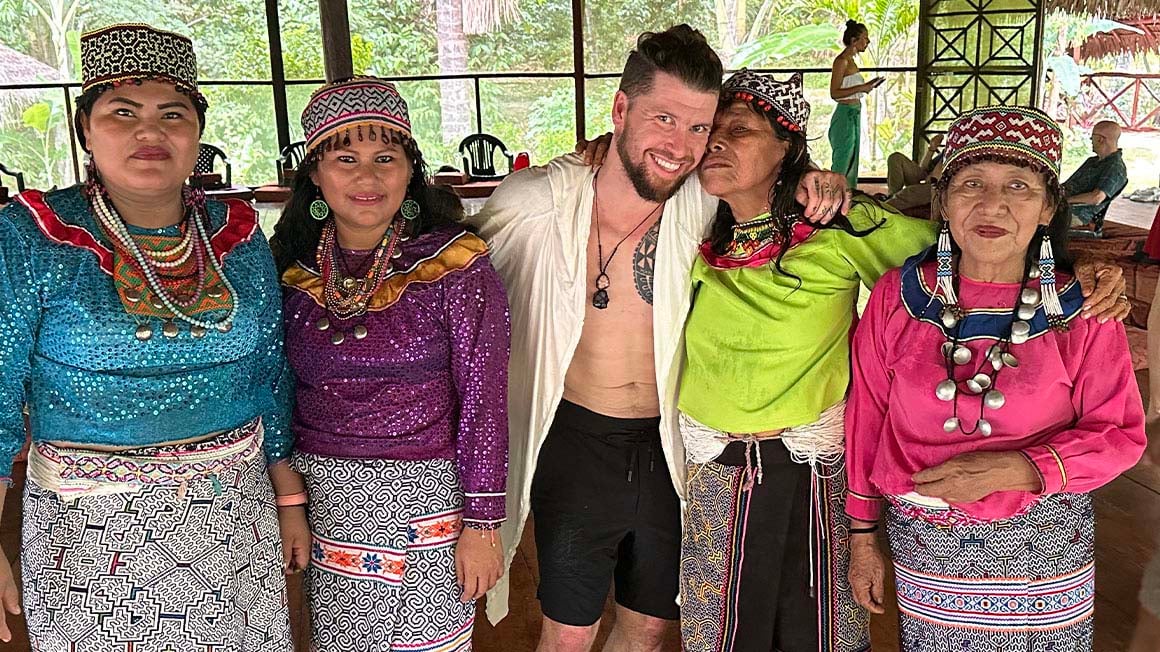
And for transparency’s sake, please know that some of the links in our content are affiliate links . That means that if you book your accommodation, buy your gear, or sort your insurance through our link, we earn a small commission (at no extra cost to you). That said, we only link to the gear we trust and never recommend services we don’t believe are up to scratch. Again, thank you!
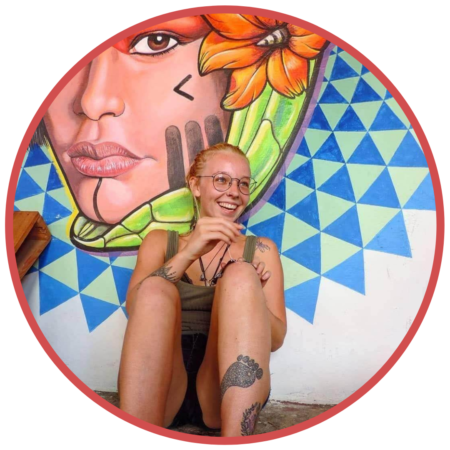
Share or save this post

30 Comments
Great post, loved the detail and enthusiasm you have for South America. I am saving up to travel from northern Colombia all the way down the west to Patagonia and then back up the other side (yes I am aware it will take the best part of a year). I wondered if you had any tips on the best time of year to start this adventure?
Plan your time with the weather and seasons in mind! Have a great time.
Is traveling to brazil unwise right now because of the covid situation? Has it become more unsafe because of the covid situation? It’s been really difficult to find solid information, and making a decision wether to visit or not has been quite difficult. Thanks for the otherwise wonderful post! Super informative.
informative post . best of luck
Hi Kami, glad you liked the article!
Very nice blog, congratulations I found a cheaper way to flight some routes inside Latin America If someone have plans, after this health crisis is gone, just ask me, I will be glad to help
Interesting. However as a Guyanese, that us from Guyana, South America I always find it odd that many persons leave out the English Dutch and French speaking countries of South America. We too have things to offer.
Hello Malkia, We totally agree with you! As soon as we manage to visit Guyana, we will update this guide! I look forward to exploring your country. Cheers
Hey there!! So I am planning a trip to south America this summer. I have a couples questions. I’m flying into Bogota, Colombia. I plan on spending 2-3 months in SA. I’d like to travel from Bogota to Machu Picchu, then to Buenos Aires, and depending on time Brazil. I am trying to figure out the cheapest way to travel from country to country. I don’t care about long bus rides or any of that. I just don’t know where to purchase the cheapest bus tickets. Please help!!!
Simply the cheapest tickets are usually at the bus station, or wherever locals buy their tickets. Look out for agencies and the like that might add a fee for booking the very same thing you could yourself.
I have a good tip to move around if you need to do it by plane, just let me know if you plan (after the whole problem is gone) to fly some stretches.
Hey man great blog, been reading so many of your posts recently, can you email me I wanna chat to someone who knows there stuff… I’m going to South America for about 6 to 8 months on a budget and need help planning a route… hopefully you see this and we can chat thank you
Hey Jamie, What is your question specifcally regarding your route? Cheers!
Thank you so much for sharing these information – they are so useful!
I am planning a trip of a lifetime to South America. To keep cost down, I am likely to stay in hostels for the first time. I like to understand how travellers wash their clothes in hostels. Are there usually any washer or dryer machines in hostels? Do we usually have to pay to use them? What is the price like?
Look forward to hearing from you.
Hi Tina, Some hostels offer laundry services. Other times you can get your laundry done at local lavanderias . Depending on the country, prices are usually pretty reasonable. They usually charge by the weight. Getting a massive load of clothes washed should not cost you more than $10 (sometimes way less) washed, dried, and folded. Cheers!
Thanks Chris for this wonderful article. Bolivia and Brazil is a magical place! Anyone who went there said it was absolutely amazing! That nature is just wonderful here. keep sharing your travel ides about more places of South America.
Cheers, Mate!
I started my South American journey two months ago and this has been a big help. There’s literally so many options once you get down here. Overwhelming in all of the best ways.
Much love from Peru.
Wow! That’s a marvelous article! Unfortunately, not so long ago, I was in South America, and I really had a lot of predicaments while traveling. If only I had read this article before the traveling, most likely, my trip would have been better!
Great content, congratulations.
Really great and in depth guide, thank you! Planning my first trip to South America and really like the look of your 3 month route across Peru, Ecuador and Columbia, was thinking of taking another couple of weeks on top to see Bolivia as well. What month would you advise starting this travel? (would really like to be home for Christmas)
The autumn months would be a lovely time to visit South America 🙂
Awesome content! I took so much advice and suggestions. I feel like I can plan whatever kind of trip ranging in length of time spent there plus budgeting. Thanks!
It’s great that you’re such a strong advocate of reusable water bottles and avoiding one-use bottles and generally I totally agree. However, I normally refill my water bottle from the tap, which obviously isn’t safe everywhere. Geneally can you drink tap water in South America? Or if not how do you safely refill without buying bottled water?
We’ve used lots of things over the years to harvest clean water from taps and streams. The GRAYL filter bottle is one of our favorites. South America is something of a mixed bag when it comes to drinking water. It ranges from safe to unsafe with every shade of chloriney in between.
I am starting my South America trip new month and I found this website extremely useful. One question though – I am worried about the requirement to show proof of onward travel. Any idea if Argentina, Chile, Bolivia, Peru, Ecuador, and Colombia require this?
Hi Neringa,
I never had to show proof of onward travel during my 6 months in South America. There was never a time when a customs officer/border police questioned me about my onward travel plans. You should be just fine 🙂
Thanks, Chris. You have been right! But I was requested to provide proof of onward travel by Avianca when flying for Cusco to Quito. Maybe because my passport expires soon. My friend, however, did not have one and was still allowed to board the plane 🙂 There was a group of Israeli guys who I think had to show this info, too.
Thanks a lot man, I’m planning a 3 month trip to Colombia, Peru and Brazil next year and this really helped me get my head around how to do it and the kind of money I’m gonna need to save! Cheers dude
Thanks, this really helped me a lot for planning my trip next year!
Leave a Reply Cancel reply
Your email address will not be published. Required fields are marked *
Save my name, email, and website in this browser for the next time I comment.
Notify me of followup comments via e-mail.
- Tour Account ›
- Travel Forum ›
- Travel Forum
- Beyond Europe
- Best guide book f...
Best guide book for South America
After following Rick's books in over 25 years of European travel, I have no idea what would be a good guide book for South America? Lonely Planet, Insight Guides . . . .? Planning to go to Machu Picchu, BA, and possibly Galapagos for first trip. Thanks for any suggestions!
Try Footprint or Lonely Planet guides for whatever country you're interested in. I used the Footprint guide for my trip to Argentina and it worked very well, although it was very hard to plan for the region where I traveled (it's not written like a Rick Steves guide, but that's ok). They specialize in Latin America coverage, so that's why I selected their book. I would avoid a book covering the whole continent because it's just too huge - unless you want to compare and contrast different countries before winnowing down your choice.
I used DK Eyewitness and Lonely Planet guides for my trips to Chile, Argentina, and Brazil. They are a bit more heavy than RS guides, but they have numerous insightful graphics that are well work the tad bit of extra heft :)
I like to use my local library to check out various guidebooks for an area so I can see which one(s) suit my travel style and then make a purchase of the latest edition.
BA = Buenos Aires, Argentina? I initially think of British Airways when I see those 2 letters!
In addition to Lonely Planet guides for non-European destinations, there’s also Rough Guide, a British series. Some of their maps are the best, both for out-of-the-way destinations and cities with lots of sights.
Aside from Rick’s books, though, Lonely Planet has usually been our next choice. They don’t come out with updated versions as frequently as Rick, however. Not having been to South America yet, can’t give you a direct recommendation, but from experience with other continents, Lonely Planet and/or Rough Guide are well-written, well-researched, and provide good recommendations. Each tends to be aimed at a slightly more backpacker-type, lower-budget traveler than Rick’s guides. Buen viaje!
DK Eyewitness are my favorite travel books. You will love Machu Picchu and Cusco. Get ready for some climbing. We did it last year. I was 71 then and an active person. Still, all the climbing in Cusco, the Sacred Valley and Machu Picchu (with the altitude) wore us out after four days.
Be sure to have you physician prescribe you pills for the altitude. Cusco is over 11,000 feet, some ancient ruins are 12,000 feet above sea level.
We used Peru Agency for our tour. It was inexpensive ($799 per person for four day tour) and excellent. Lima is worth 2-3 days. Love South America, it is cheaper than Europe and lots to see. Also, love Argentina and Chile.
This topic has been automatically closed due to a period of inactivity.

Solo South America: What Should You Know About Traveling Alone In This Continent
- South America offers stunning natural wonders, balmy temperatures, and plenty of hiking opportunities, making it an ideal destination for solo travelers.
- Argentina, Brazil, Colombia, Peru, and Uruguay are among the top countries to visit for solo travel in South America, offering a mix of natural beauty, vibrant cities, and friendly backpacking communities.
- While some countries can be trickier to navigate or require language skills, staying informed, enrolling in travel programs, and connecting with fellow travelers can help ensure a safe and rewarding solo trip in South America.
South America is one of the most fantastic continents in the world, with tons of gorgeous natural wonders , balmy temperatures, and plenty of hiking, especially closer to the South Pole.
This continent is one of the best places to retire and an excellent place to explore independently. Solo travelers can make the most of their South American adventure by considering these top tips. Here's what to know about solo travel in South America.
Solo Travel In South America: Which Countries To Visit (And Which To Avoid)
South America is a continent of extremes, from the dizzying height of the Andes to the balmy Caribbean beaches of Northern Colombia. Understanding where to go is one big piece of the puzzle.
One of the largest countries on the continent, Argentina is famous for its epic hiking, wine, and gorgeous cities. Top destinations include Iguazu Falls, Patagonia, and the Perito Moreno Glacier. It's also very safe, and the big cities offer a great backpacking community, so one can feel comfortable solo traveling there.
- Solo Travel: Enthusiastic yes
Patagonia is a great bucket list destination full of stunning nature, unique animal life, and some of the best hiking in the world. Be prepared for changing temperatures, challenging hikes, and the most Instagrammable landscapes on the planet.
This landlocked country has much to offer, including access to the Amazon, salt flats, and beautiful towns right on Lake Titicaca. Don't miss the Salar de Uyuni, the gorgeous heights of La Paz, or the great hiking near Lake Titicaca, especially the Isla del Sol.
Although there's plenty to see, public transportation can be tricky to navigate and one needs Spanish to get around most places.
- Solo Travel: Possibly if one speaks Spanish and doesn't mind navigating transportation concerns alone
The giant country of Brazil has plenty of things to do, especially if one is looking for a party. The fantastic capital of Rio de Janiero is a must-visit if one wants a big-city vibe, and Iguacu Falls and Copacabana are great places, too. Plus, there are plenty of spots to enjoy a remote vacation in Brazil .
- Solo Travel: Yes if one is looking for a fun party, although one will want a little Portuguese to get around
The Amazon Rainforest is one of the most spectacular places on the planet, covering a vast 2,300,000 square miles . Visitors can kayak in the Amazon, enjoy outstanding hiking, and see animals one might never spot anywhere else.
Chile's skinny and scenic country stretches all the way toward Antarctica but also encompasses plenty of other climates. Hugging Argentina, it's a bounty of natural wonders. Santiago, Rapa Nui, and The Colchagua Valley are some hot spots to visit. Santiago is a great place to interact with the local backpacking community.
- Solo Travel: Yes, but be careful hiking solo in the mountains as the landscape can get tricky
Related Link: Top 10 Things To Do In Chile's Lake District
Colombia is an excellent place to enjoy some great coffee, bask on the beaches, and enjoy lovely cities with great climates like Medellin.
Top spots include the stunning Tayrona National Park , Cartagena, and Eje Cafetero. There are tons of friendly hostels in Bogota and Medellin and solo travelers will likely find a backpacking community where they can tag along.
- Solo Travel: Yes, this is one of the top places to meet fellow travelers on the continent
Ecuador is the gateway to the Galápagos, and it's a great place to visit if one is looking for a more tropical vibe. See the unique animals of the Galápagos, or visit Quito, a thriving city. There's also the Cotopaxi National Park if one is looking for some excellent hiking.
- Solo Travel: Yes and no: the cities are great for solo traveling, but the major draws, like the Galápagos, are expensive to do alone
Guyana is a smaller country near Colombia with access to the balmy Atlantic Ocean. There's plenty to explore, including the Kanuku Mountains and the Iwokrama Forest. Georgetown, the capital city, is charming, with excellent hospitality and good food.
- Solo Travel: Experienced solo backpackers will have fun, but it's less developed and tricker to get around especially if one doesn't speak Spanish
Beautiful Paraguay is near Bolivia, Peru, and Argentina, with some of the best architecture and history on the continent. The City of Asuncion is one of the top places to visit, and Cerro Corra National Park will give one a good feel for the natural wonders of this country. There are also plenty of ruins to explore.
- Solo Travel: Yes, Paraguay's cities are very safe, especially for female-identifying travelers
Notable for Machu Picchu but also full of great small towns and tons of hiking , Peru is a rich and beautiful country in the Andes. Hikers will want to check out the Sacred Valley and the historic towns of Cuzco and Arequipa. Go a bit further south and enjoy Lake Titicaca, one of the most famous lakes in the world.
- Solo Travel: Absolutely great for solo travel, especially because one can take bus trips around the country and the cities are full of vibrant hostels
The smallest country in South America, Suriname has a big personality and many things to explore. If one is looking for unspoiled nature, this is the spot to go with the Galibi Nature Reserve, Central Suriname Nature Reserve, and Brownsberg Nature Park.
- Solo Travel: Possibly-- as long as one doesn't mind doing things along and can navigate through nature as Suriname is less developed than other countries with a smaller backpacker community
Staying in hostels throughout South America is a great way to save money, meet other people, and learn about hidden gems and cool new places to visit. They're also an excellent place to book group excursions.
This southeastern country sits near Brazil and Argentina, full of lovely historic cities and towns like Cabo Polonio and Colonia Del Sacramento. Uruguay is an excellent bet if one is looking for something a bit off the beaten path.
- Solo Travel: Yes, Uruguay is a safe country and the cities are full of backpackers, hostels, and things to do
Venezuela encompasses the Amazon Rainforest, the stunning Angel Falls, and parts of the Andes. Caracas, the capital, is a lovely city with plenty of history.
- Solo Travel: Generally yes, but at the moment, no because Venezuela is experiencing political insecurity at the moment
Venezuela is very unstable, and the U.S. State Department strongly advises against going there .
Top Safety Advice For Solo Travel In South America
One of the best ways one can protect oneself is by signing up for the Smart Traveler Enrollment Program (STEP) , which gives travelers updates on any political or dangerous situations that might be happening in the country.
Enrolling in STEP is especially important for solo travelers because one can let the embassy know where you are staying.
While keeping an eye on whether the water is potable is a good idea no matter what, it's especially important if one is hiking or camping alone because getting sick solo could be dangerous.
Colombians have a phrase, "No Dar Papaya," which means not to put oneself in danger. Keeping vigilant about what's happening is the best way to stay safe in South America.
Related Link: 10 Most Beautiful National Parks In Brazil That Should Be On Your Travel Radar
Make The Most Of A Solo Trip Through South America
These tips will help one have the best vacation possible.
- Check which places travelers need a visa before going
- See the best of the country of choice by bus and meet fellow travelers at the same time
- Stay in cities if one wants to meet a community and learn more about the "backpacker trail"
- Join online communities to interact with other travelers on the same path
- Do research ahead of time and enroll in STEP
- Learn a few key Spanish or Portuguese phrases to get by to connect with the local community
Solo travel in South America can be exciting, enriching, and safe, if travelers know what to expect and how to prepare.
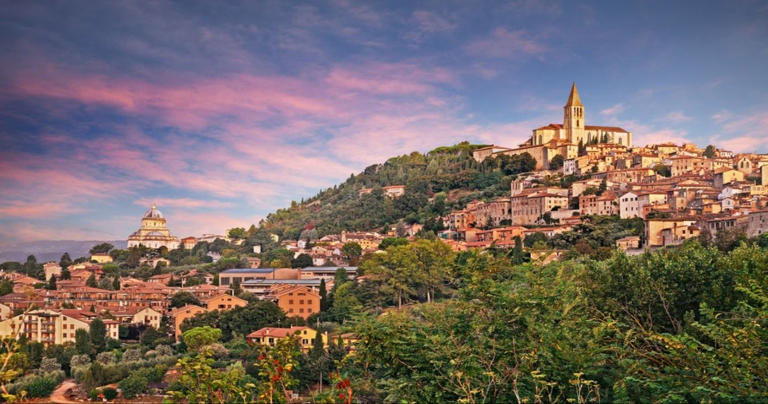

IMAGES
VIDEO
COMMENTS
1. One Hundred Years of Solitude. Author: Gabriel Garcia Marquez. Year: 1967. One Hundred Years of Solitude is written by one of the most famous authors in South America. Winning the Nobel Prize for Literature, Marquez put Colombia on the map with this profound work of magical realism.
Lonely Planet: The world's number one travel guide publisher* Lonely Planet's Best of South America is your passport to the most relevant, up-to-date advice on what to see and skip, and what hidden discoveries await you. Gaze down on sparkling Rio de Janeiro from Pao de Acucar, spot wildlife in the Galapagos Islands, and hike the legendary Inca Trail to Machu Picchu - all with your trusted ...
Lonely Planet's South America is your passport to the most relevant, up-to-date advice on what to see and skip, and what hidden discoveries await you. Walk Patagonian glaciers, dance the night away in Rio de Janeiro and explore Incan ruins; all with your trusted travel companion. Get to the heart of South America and b
The Perfect Choice: Lonely Planet's South America, our most comprehensive guide to South America, is perfect for both exploring top sights and taking roads less traveled. About Lonely Planet: Lonely Planet is a leading travel media company, providing both inspiring and trustworthy information for every kind of traveler since 1973. Over the ...
1. Life and Death in the Andes: On the Trail of Bandits, Heroes, and Revolutionaries by Kim MacQuarrie: £13.87, Simon & Schuster. Right up to the present day, South American history has been ...
Lonely Planet Best of South America 1 (Travel Guide) Regis St Louis. ... With my daughter and son inlaw traveling around south America, this book helps us learn about the places they are visiting as well as keep track of the routes they are taking. This is the same book that they used and continue to use as their traveling bible
This book is a delicious tale of the wild, unexplored regions of Peru's Andes by a British filmmaker. It is another excellent read if you want to brush up on Inca history and retrace Thomson's steps through the Andes in search of Inca ruins. The Heights of Machu Picchu by Pablo Neruda. Although Neruda is a Chilean poet, he went to Machu ...
The 20 best south america travel guide books recommended by Kirkus Reviews and Library Journal, such as Buenos Aires and Lonely Planet Peru. Categories Experts Newsletter. BookAuthority; BookAuthority is the world's leading site for book recommendations, helping you discover the most recommended books on any subject. ...
Without doubt the best travel guide for South America with over 30 books in the region, many of which are recently updated, including probably the best overview of the continent in The South American Handbook, which is updated annually (making it far superior to the Lonely Planet's South America on a Shoestring). These guide books are packed ...
Books shelved as travel-south-america: In Patagonia by Bruce Chatwin, Wild Coast: Travels on South America's Untamed Edge by John Gimlette, The Lost City...
This is a fun book about traveling through South America. We hear about George and Rachels's adventures through swamps in Bolivia, hunting for anacondas, climbing volcanos, taking death-defying bus rides, and trying to get to Machu Picchu all with small backpacks, limited Spanish, and lots of enthusiasm.
Best Sellers in General South America Travel Guides. #1. Lonely Planet Chile & Rapa Nui (Easter Island) 12 (Travel Guide) Lonely Planet. 1. Paperback. 30 offers from $19.09. #2. A Most Remarkable Creature: The Hidden Life and Epic Journey of the World's Smartest Birds of Prey.
Book popular activities in South America. Guidebooks Purchase our award-winning guidebooks. Get to the heart of South America with one of our in-depth, award-winning guidebooks, covering maps, itineraries, and expert guidance. Shop Our Guidebooks. Go Beyond South America and beyond ...
The Motorcycle Diaries: A Journey through South America - Ernesto Guevara. Few South American historical figures have found their way into the international imagination more than Ernesto "Che" Guevara, a young Argentine medical student turned political revolutionary who became a major figure in the Cuban Revolution.
Non-fiction adventure travel & exploration in South America. Countries and territories: Argentina, Bolivia, Brazil, Chile, Colombia, Ecuador, Falkland Islands, French ...
This South America guide is here to share our tips and advice for traveling across this continent. Located south of North America and Central America, South America stretches from the Caribbean, across the equator and all the way south to the waters off Antarctica. It is comprised of 12 countries and quite frankly, is massive.
South America Travel Guide. South America is made for travelers looking to delve deep into incredibly diverse cultures and explore the outdoors. The biggest draws to the continent are the beaches of Rio, the Galápagos Islands, Iguazu Falls, Machu Picchu, and, of course, Patagonia. As one of the most Southern National Parks in the world, Torres ...
Backpacking Peru is the essence of travelling in South America. Though tourism has spiked in Peru in recent years, there is still plenty of magic to be found here. The cost of backpacking Peru is a little higher than you might expect. Expect to pay between $30-40 USD a day whilst travelling here.
Insight Guide to South America is a pictorial travel guide in a magazine style providing answers to the key questions before or during your trip: deciding when to go to South America, choosing what to see, from exploring Rio de Janeiro to discovering the Lake District or creating a travel plan to cover key places like Iguazú Falls, Lake Titicaca. . Fully-updated post-COVID-19, this is an ...
Browse the Essential Argentina Travel Guide E-Book, and get inspired to travel to Argentina with the 4 & 5 Argentina travel experts at SouthAmerica.travel! Learn about the Iguazu Falls, Mendoza, Buenos Aires, Salta, the Perito Moreno Glacier, Ushuaia, and other hotspots in Argentina with this handy e-book. Download E-Book.
In addition to Lonely Planet guides for non-European destinations, there's also Rough Guide, a British series. Some of their maps are the best, both for out-of-the-way destinations and cities with lots of sights. Aside from Rick's books, though, Lonely Planet has usually been our next choice. They don't come out with updated versions as ...
Online shopping for South American Travel Guides in the Books Store. ... Cool Pictures That Create An Idea For You About An Amazing Country In South America,Buildings style, Cultural ... Mountains,For All Travels and Pictures Lovers Quick look. $12.99 $ 12. 99. LIMA TRAVEL GUIDE 2023-2024: Your Comprehensive Travel Guide to Explore the Heart of ...
Solo Travel In South America: Which Countries To Visit (And Which To Avoid) South America is a continent of extremes, from the dizzying height of the Andes to the balmy Caribbean beaches of ...
Best Sellers in South American Travel Guides. A Home Can Be. . .: A Children's Rhyming Book About Different Homes & Habitats. Learn Spanish Fast for Adult Beginners: 3-in-1 Book: Speak Spanish The Fun and Easy Way in Just 21 Days. Includes Workbook, Short Stories, Words & Phrases + Audio Pronunciation (Spanish for Adults) Discover the best ...